Planning a 10-day Ireland itinerary can be a pain in the backside… So, we’ve done all of the hard work for you!
We’ve spent 25+ years travelling around Ireland and the itinerary below leans on that experience and the many mistakes we made along the way!
In a nutshell, this 10-day itinerary:
- Starts and ends in Cork
- Has been meticulously planned
- Has an hour-by-hour itinerary for each day to save you time/hassle
- Follows logical routes that take you to hidden gems, tourist favourites and great pubs and restaurants
Who this itinerary will suit

Now, before you scroll down, take 10 seconds to look at the graphic above – each of our road trip itineraries have been tailored to specific needs.
This road trip is specifically for those of you:
- Starting in/near Cork
- Using your own car/a rental
- Looking to explore at a fast pace
- With a good level of fitness
- Remember, we have hundreds of different itineraries here if this one doesn’t suit you.
An overview of this itinerary

Click here to see a high resolution map
The map above gives you a very high-level overview of where this route will take you.
It uses several bases (e.g. Cork for 3 nights) and provides you with day-long road trips you can head off on, so you avoid having to change accommodation constantly.
Now, I’ll stop rambling on – here’s a day-by-day insight into each of the days below!
Day 1: Cork City
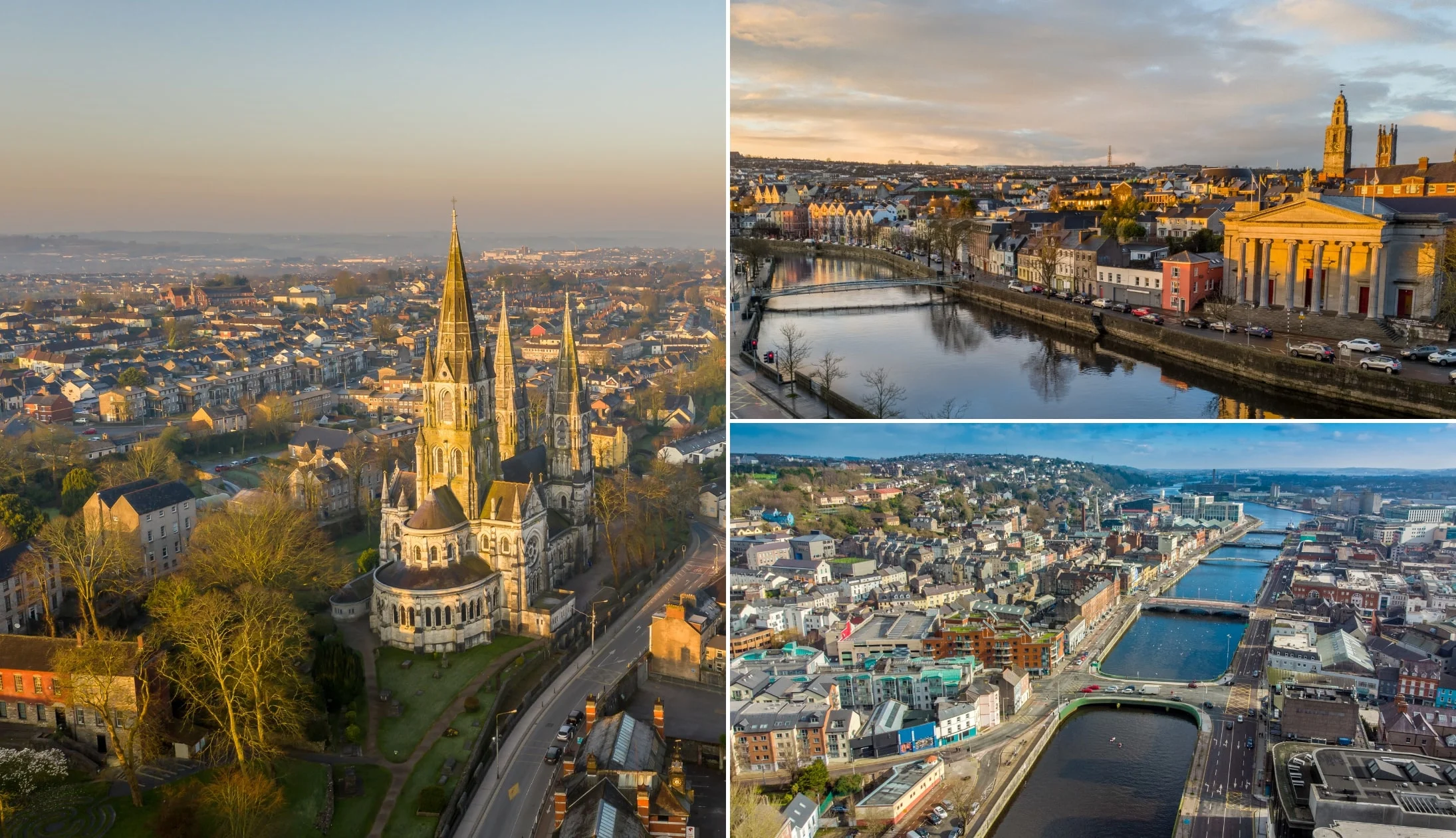
Photos via Shutterstock
Welcome to Ireland! Today, you’ve touched down in Cork City, ready to start your 10-day adventure.
You’ll be spending two nights in Cork City, and we’re going to assume that you arrived in the afternoon, so get ready for an afternoon’s worth of activities on your first day.
Recommended accommodation in Cork City
- Budget: Sheilas Tourist Hostel (no-fuss hostel near the train station) + Redclyffe Guesthouse (nice and central with great reviews)
- Mid-range: The Metropole (central with superb reviews) and Hotel Isaacs (in the Victorian Quarter – top-notch rooms and reviews)
- Luxury: Imperial Hotel (stunning and very central hotel) and Hayfield Manor (beautiful, boutique, city centre 5-star)
Stop 1: Cork City Gaol
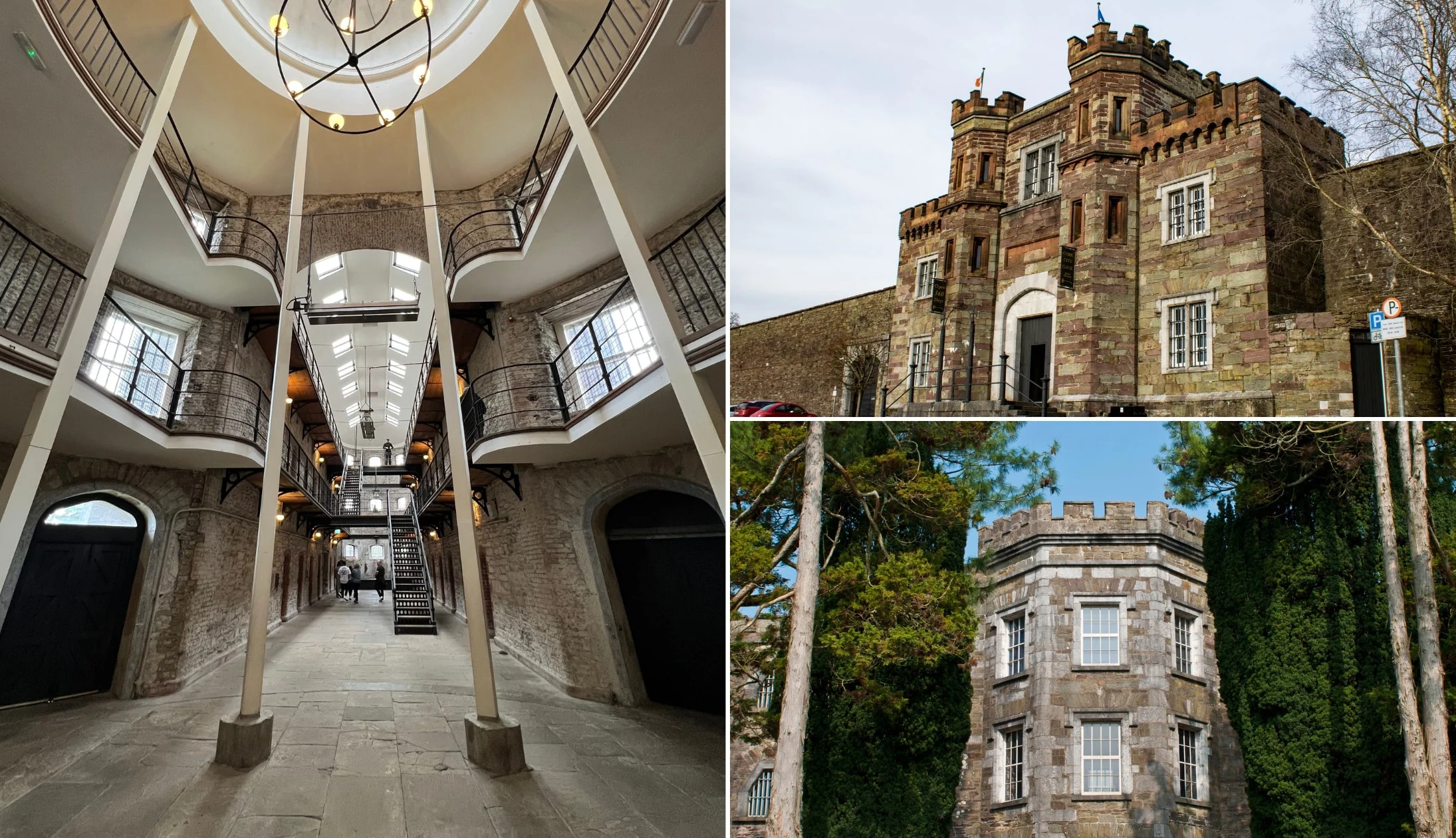
Photo left: The Irish Road Trip. Others: Shutterstock
Cork City Gaol is our first stop of the day. It is about a 20-minute drive from the airport.
Cork City Gaol is a fascinating attraction in a castle-like building that opened in 1824 and closed in 1923. It was home to male and female prisoners who had committed crimes within the city boundaries (those who committed crimes outside were sent to the Cork County Gaol across the river).
The goal was operating through Ireland’s turbulent Civil War, housing male and female Republican (anti-treaty) prisoners, including famous Irish Author Frank O’Connor. Other famous people who were imprisoned in the gaol include Countess Markievicz, John Sarsfield Casey, James Mountaine, and Brian Dillon.
The Cork City Gaol became a museum in 1993 and is now a popular attraction in the city. You’ll learn about the prisoner’s stories, see the cells, and learn about the harsh 19th-century penal system.
Stop 2: Cork City Centre

Photos via Shutterstock
Drive into Cork City Centre and drop your bags off at your accommodation. Feel free to leave the car parked here as we will be on foot around the city.
Stop 3: Lunch
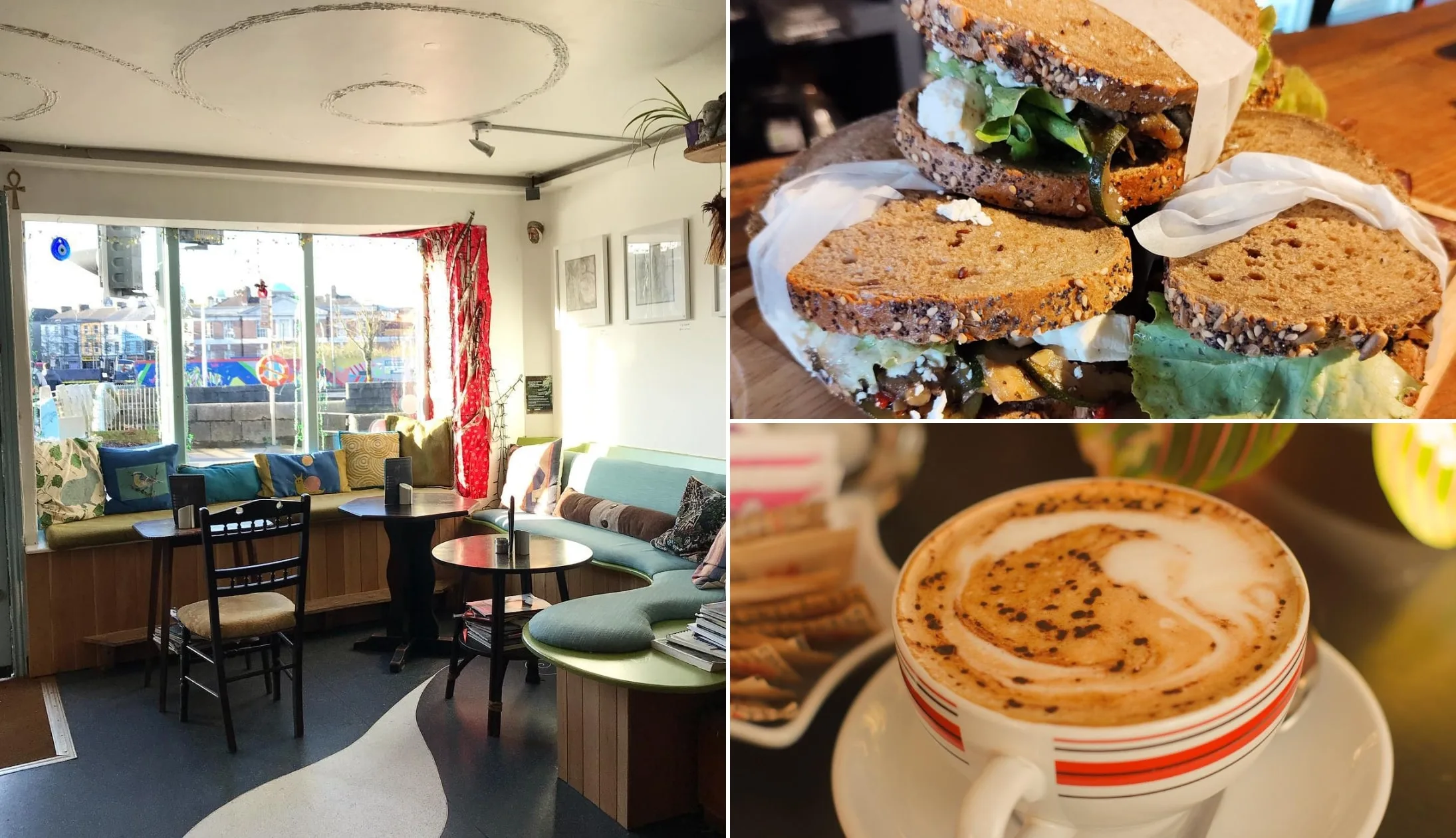
Photos via Myo Cafe on FB
Walk over to the Cornmarket for lunch. But be mindful that you’ll be heading to the English Market soon (another foodie destination), so don’t fill up too much! We recommend popping into Bodega for delicious pub grub or the Cornstore if you’re after something a little more upmarket.
Stop 4: Shandon Bell Tower
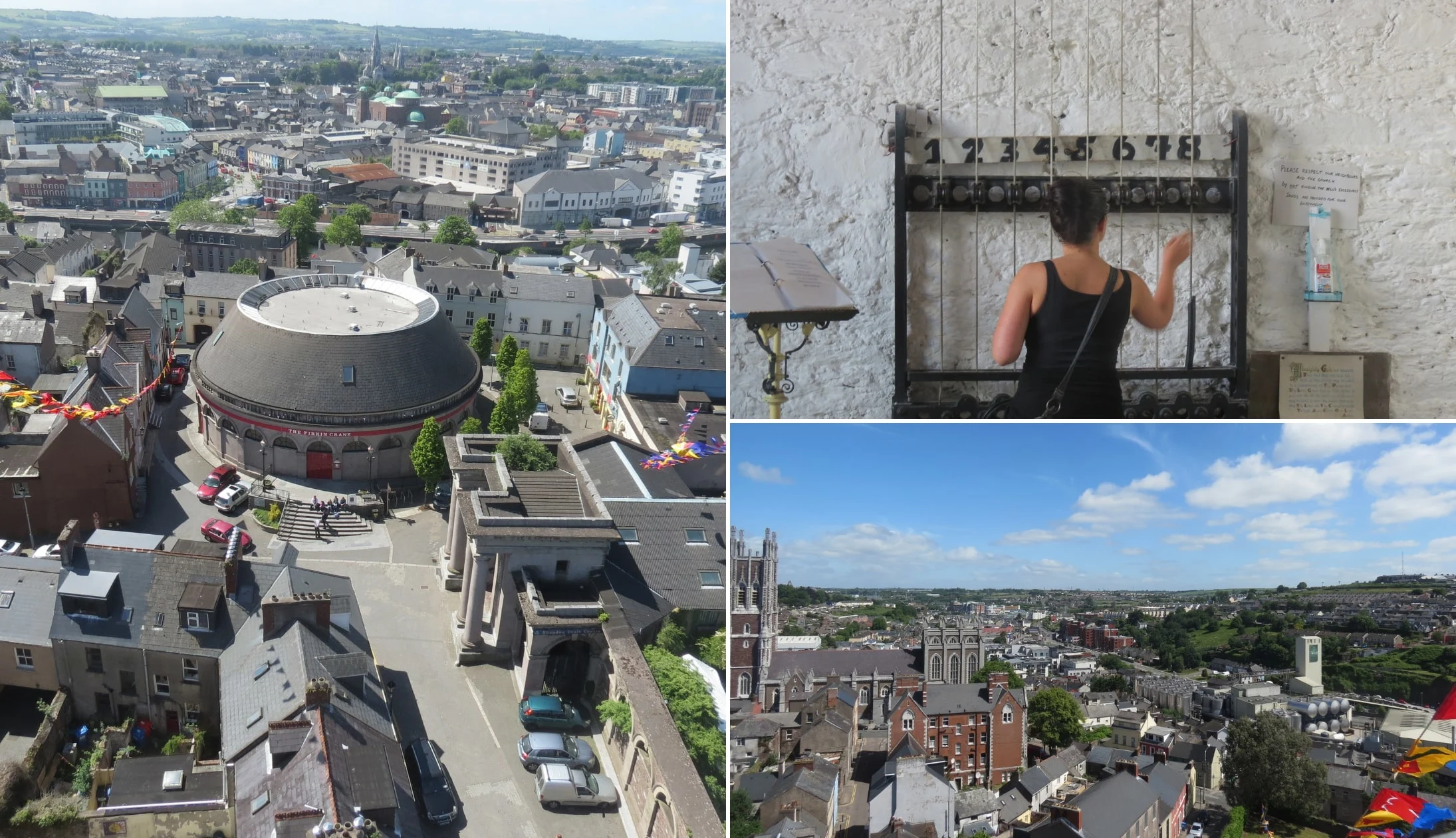
Photos courtesy Catherine Crowley via Tourism Ireland
Shandon Bell Tower is an iconic landmark in Cork City and a must-visit attraction about 10 minutes from the city centre.
The tower is a part of the Church of St. Anne, which was built in 1722. The church was built to replace an old church on the same site that was destroyed during the Seige of Cork in 1690.
You’ll need to pay a small fee to get to the top of the tower, but from the top, you’ll have wonderful views of the city, and you’ll be able to ring the bells!
Stop 5: The English Market
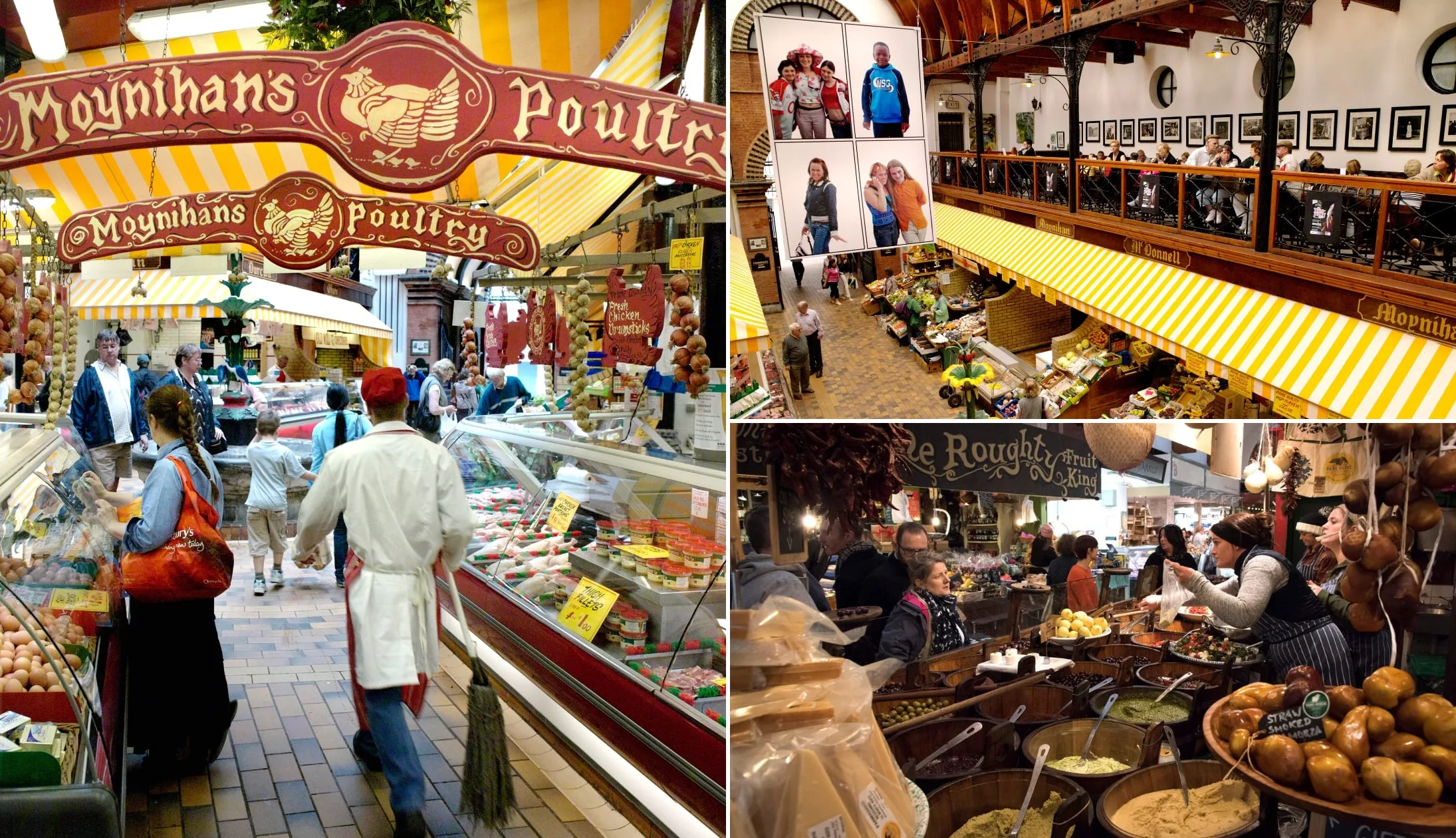
Photos by Chris Hill via Tourism Ireland
The English Market is 11 minutes away from Shandon Bell Tower. It’s a beautiful covered market with impressive mid-19th-century architecture.
Its name, “English Market”, was to help distinguish it from the Cornmarket, formerly known as the “Irish Market”.
The market dates back to 1788, making it one of the oldest covered markets in Europe.
Aside from its history and beautiful architecture, the English Market is known for its delicious food, and you can get everything from artisanal olives to homemade jams.
Stop 6: Elizabeth Fort
Once you’re finished perusing the market, walk the 10 minutes over to Elizabeth Fort. The star-shaped fort dates back to the 17th century and currently sits off Barrack Street in Cork City.
The fort was originally on high ground, but over the years, the city has built up around it, although it still has fantastic views over Cork.
General admission is free, but if you’d like to learn more about this historical fortification, guided tours are offered at 1pm every day (€5), and audio guides are available in multiple languages (€3).
Stop 7: Dinner, drinks and live music
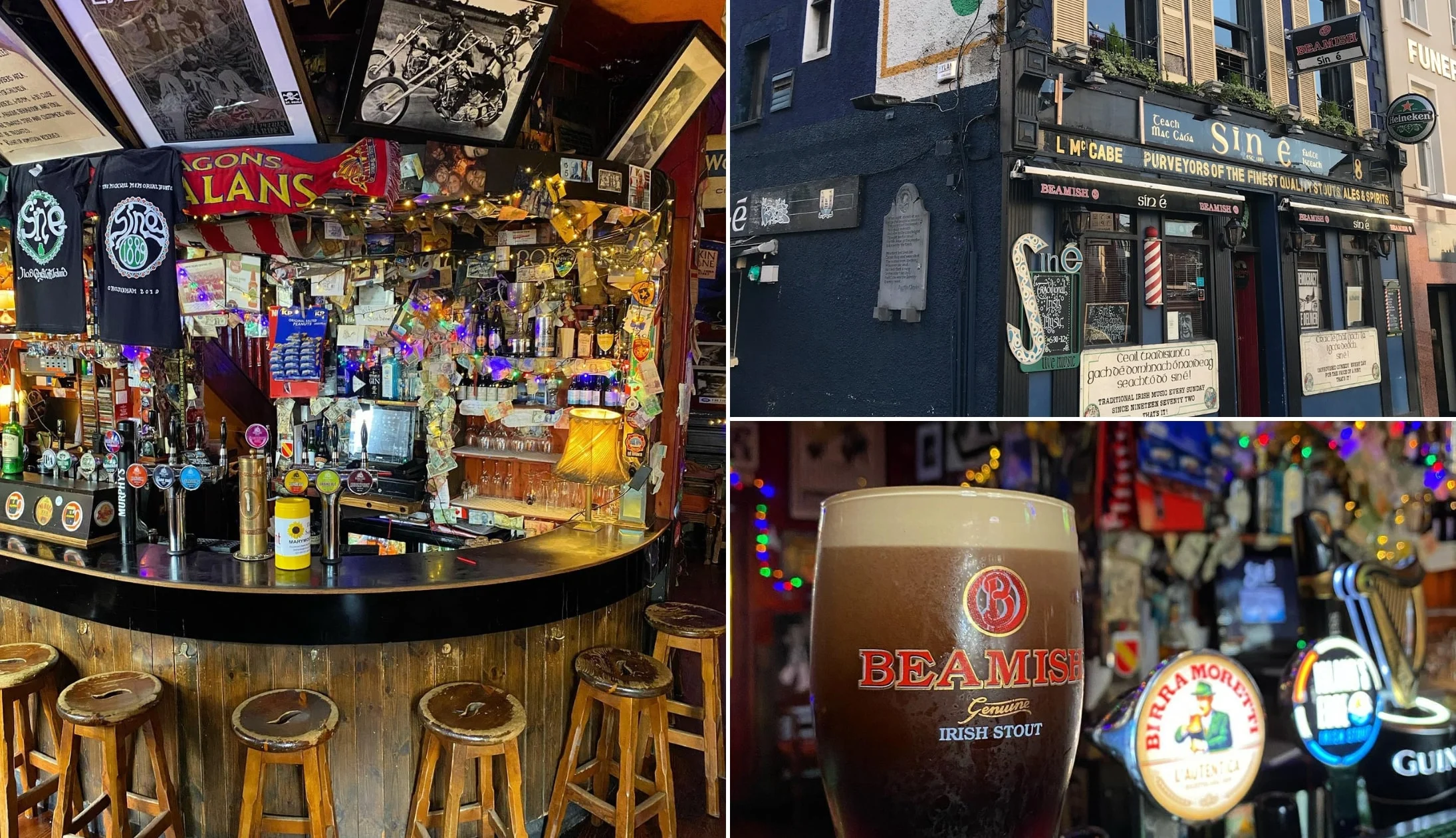
Photos via Sin E on FB
You have endless food and pub options in Cork City, regardless of what it is that you fancy on the night.
Here’s a few recommendations to get you started, but feel free to follow your nose:
Our dinner recommendations
There are heaps of brilliant restaurants in Cork City, but our personal favourites are Market Lane, Old Town Whiskey Bar at Bodega, and Cornstore.
Market Lane has a delicious-sounding menu featuring Irish favourites like pan-fried hake with braised leeks, smoked mussels, and baby potatoes, as well as international dishes like Sri Lankan vegetable curry with tempura aubergine and forbidden rice.
Head to Old Town Whiskey Bar for burgers, salads, and traditional pub grub, and Cornstore for steaks and seafood.
Live music and trad bars
There’s some might old-school pubs in Cork City, too. For drinks, check out Mutton Lane (a quirky traditional pub), The Oval (a historic pub named after its unique oval ceiling), and Castle Inn (a traditional family-run pub with a great atmosphere).
There are some great spots for hearing some trad music in Cork, our top choices are Sin E and The Corner House.
Day 2: Kinsale
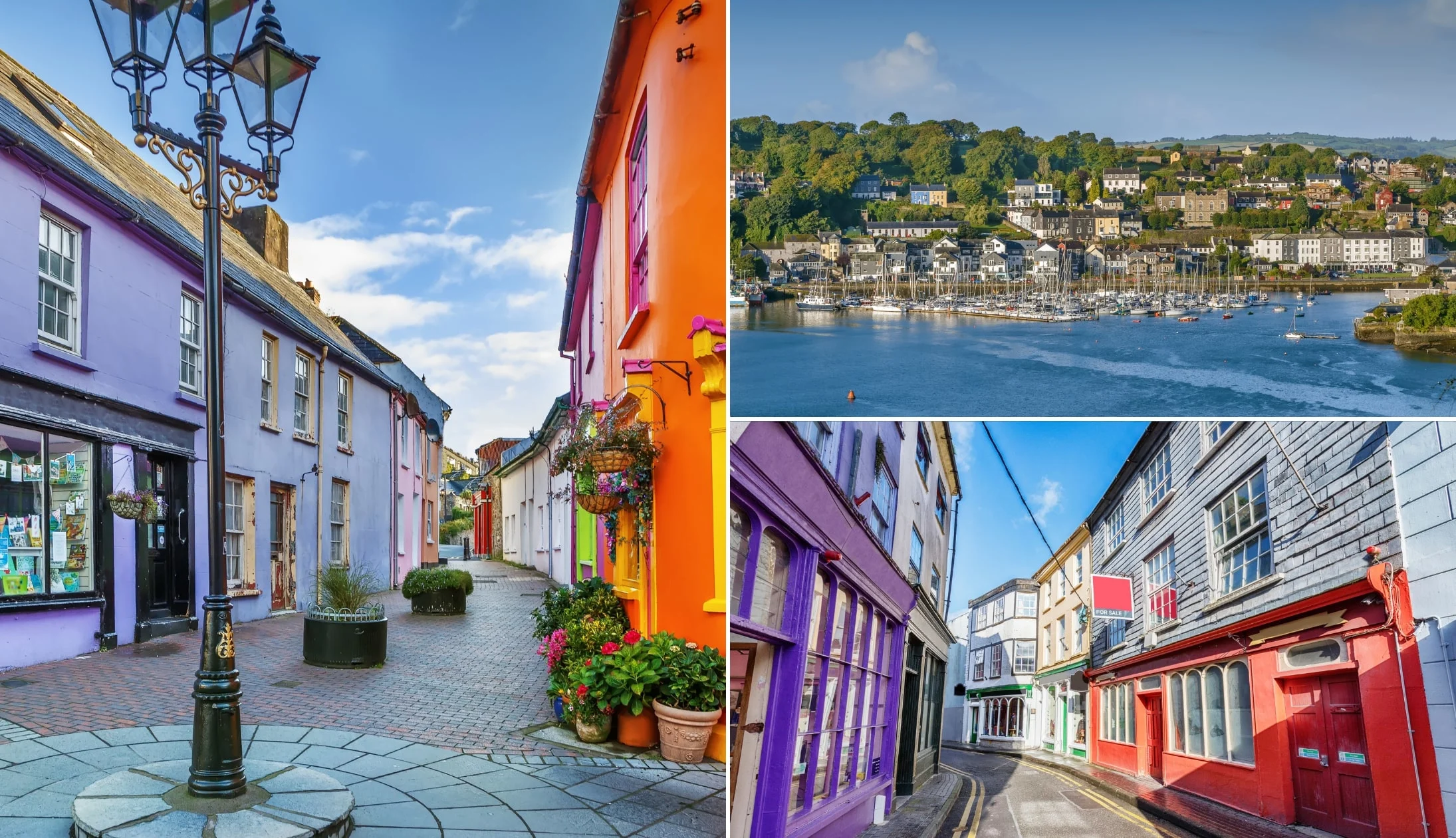
Photos via Shutterstock
Today you are exploring the coastal area just south of Cork City and the village of Kinsale. There’s a bit of walking today between attractions, so make sure to wear suitable footwear and bring plenty of water.
Grab some breakfast at your accommodation or nearby before heading out. Farmgate and Cafe Spresso do a good breakfast.
Stop 1: Garretstown and Garrylucas Beach
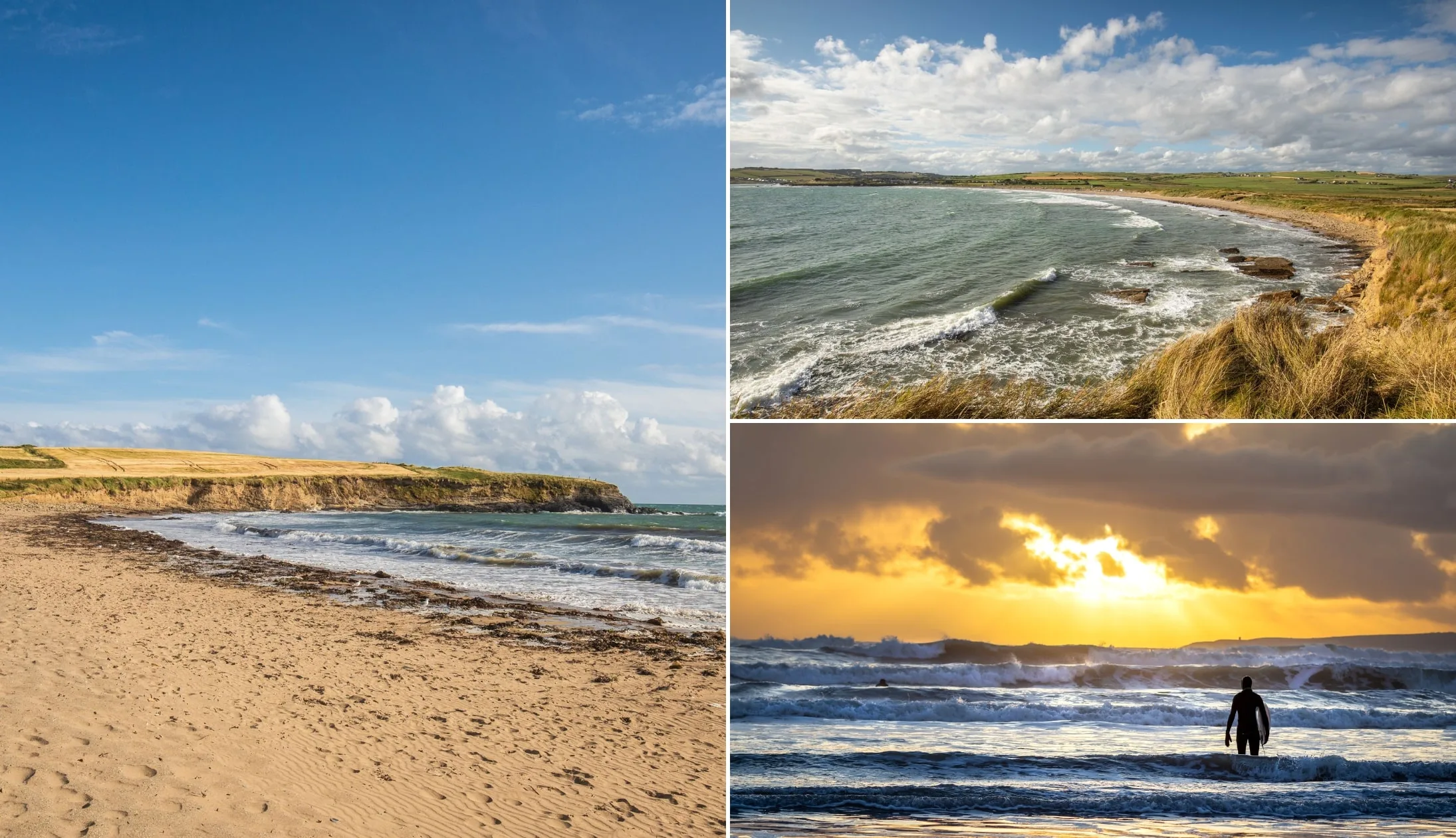
Photos via Shutterstock
You are going to start the day with a walk along some beaches. Garretstown is 50 minutes outside of Cork. You actually drive through Kinsale on your way there, so you will get a sneak peek of what’s in store for the rest of the day!
Park at Garretstown and walk along the beach or the path above the beach, around the head and then over to Garrylucas Beach.
Both of the beaches have great views, public toilets and are popular with surfing and kiteboarding, so there can be a lot going on, making them great for some people watching.
Stop 2: Lusitania Museum
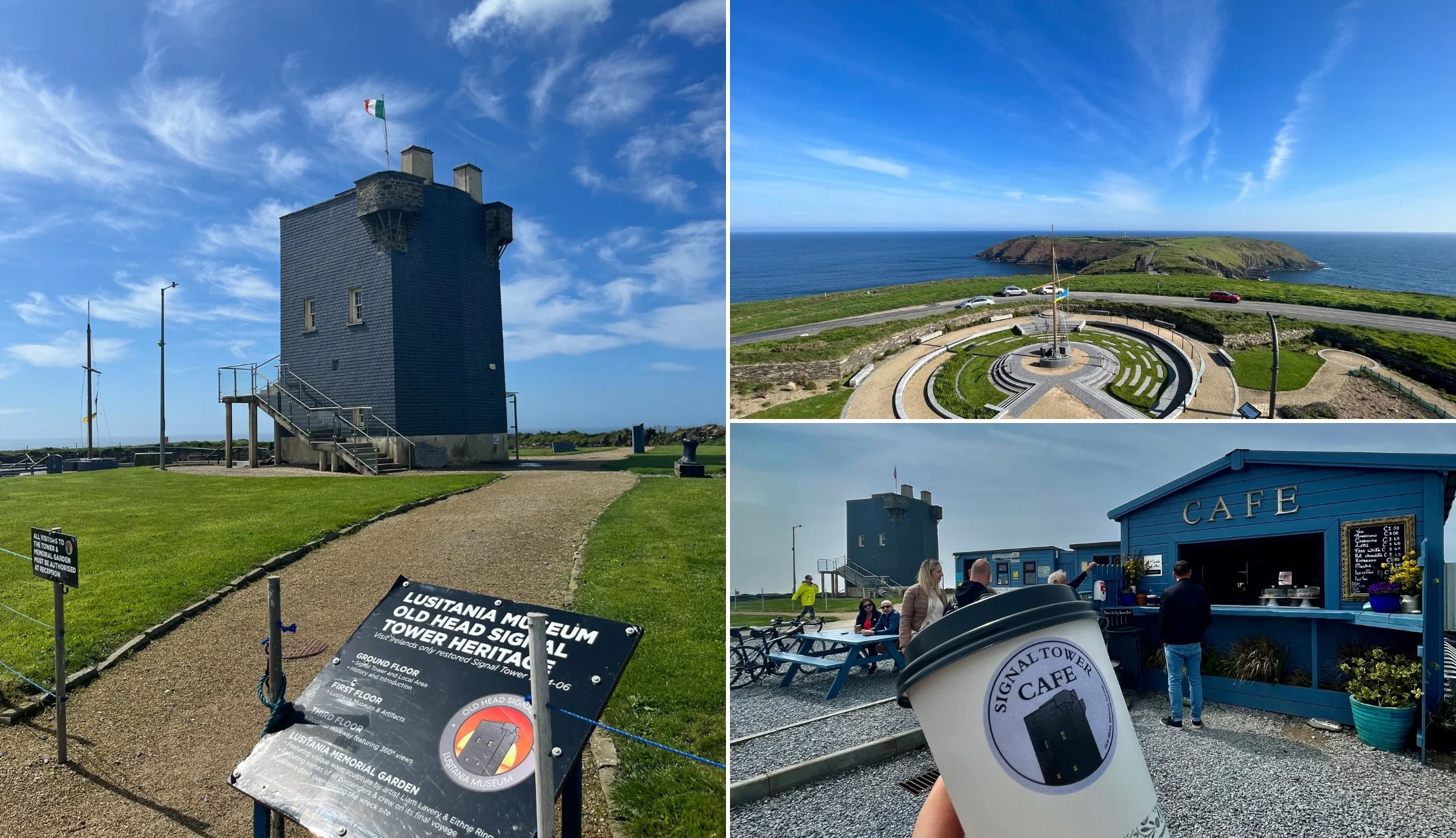
Photos courtesy Shannon Forde via Failte Ireland
The Lusitania Museum is a 7-minute drive from the beach. It’s inside an old Signal Tower, The Old Head Signal Tower, one of 81 built from Dublin to Donegal. The ground floor of the tower tells the story of Ireland’s Signal Towers and the area’s ancient history.
On the first floor, you’ll find exhibitions and artefacts relating to the RMS Lusitania, which was tragically torpedoed by a German U Boat during WWI. The boat sank in only 18 minutes, resulting in many casualties.
Once you’ve learned the story of the RMS Lusitania, head outside to the Lusitania Memorial Garden to look at the powerful 20-metre sculpture, which includes the names of the lives lost on May 7th, 1915. There are also beautiful views over Kinsale Head.
Stop 3: Kinsale

Photos via Shutterstock
Hop in the car and drive 18 minutes to Kinsale. You’ll find parking in the centre of the village here.
You’ll be here until the late afternoon/early evening, so make sure to pay for enough parking before you head out to explore the area on foot.
Stop 4: St. Multose
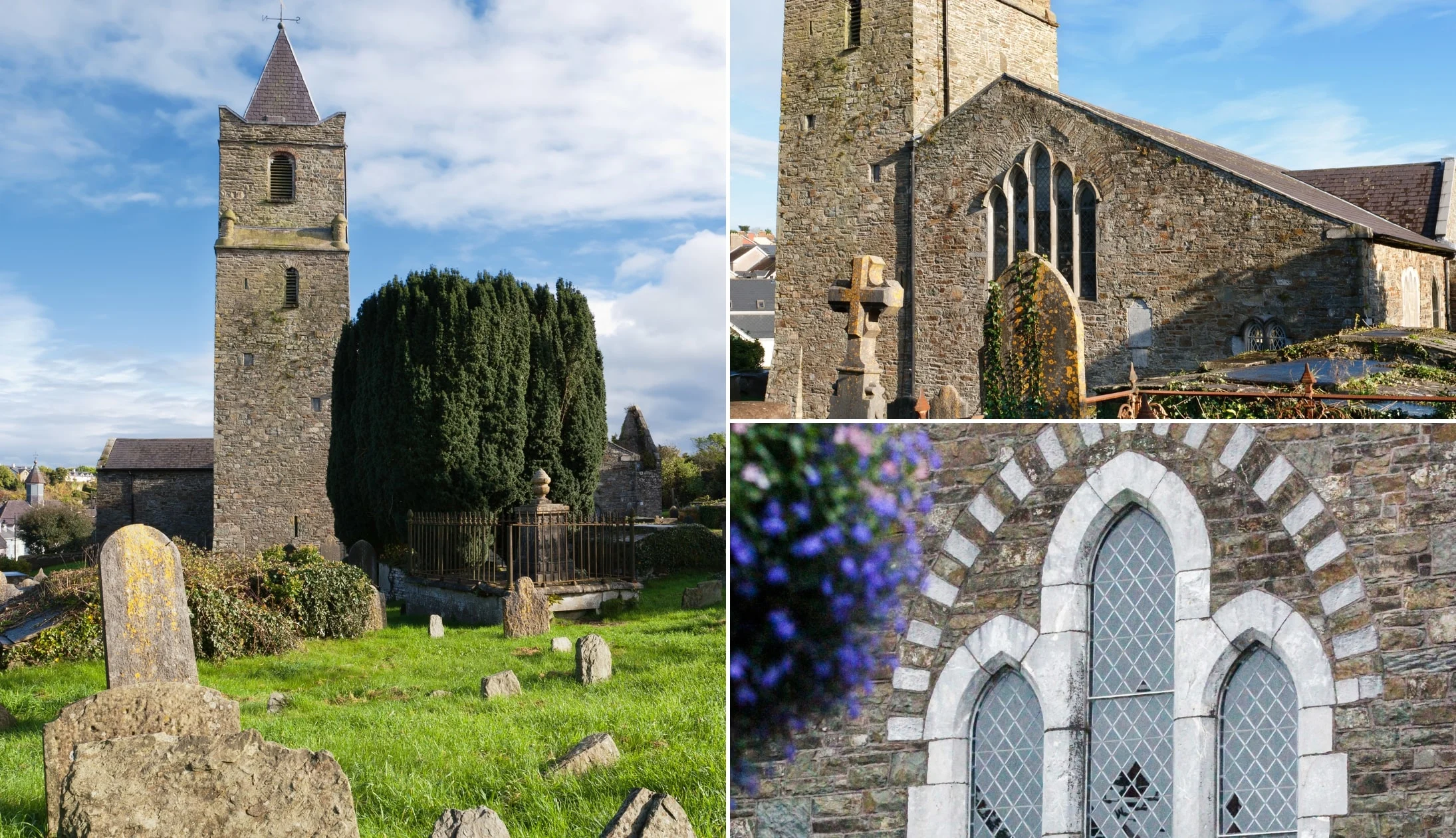
Photos via Shutterstock
Stroll 5 minutes up to St. Multose Church, thought to be one of the oldest churches belonging to the Church of Ireland! It’s a cruciform church with a crypt that dates back to 1190, although the entire church is built on a 6th-century ecclesiastical settlement.
In the 1750s, the church underwent major additions. However, the church’s large bell tower is a part of the original Norman structure. The church’s graveyard contains 16th-19th-century monuments and mausoleums, as well as the graves of unidentified victims of the RMS Lusitania sinking.
Stop 5: Cosy Cafe and the Scilly Walk
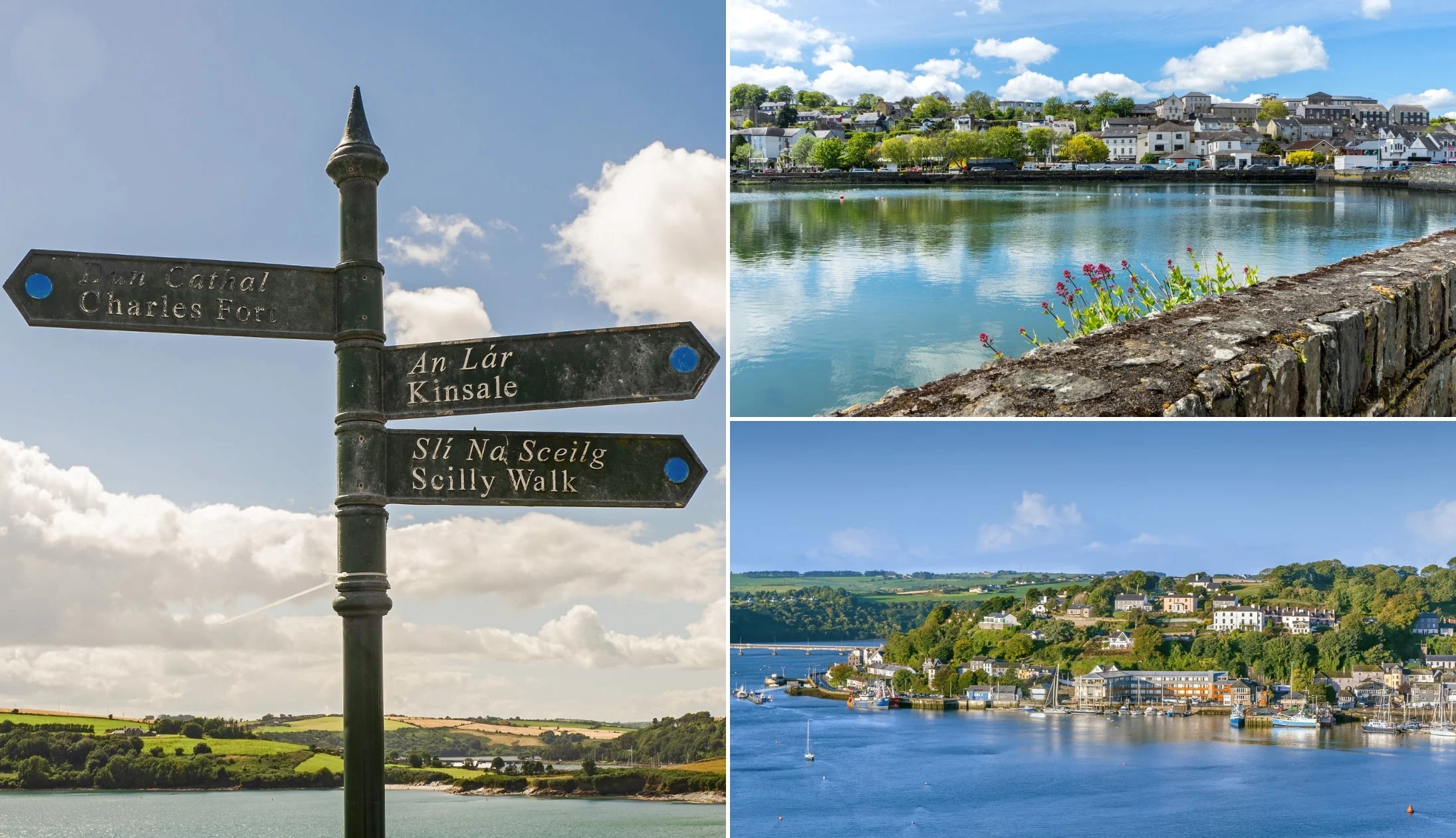
Photos via Shutterstock
If you’re ready for a mid-morning coffee, head into the Cosy Cafe across the street from St. Multose Church.
Then, it’s time to walk the Scilly Walk. The walk officially starts at The Spaniard and from there it’s around 40 minutes to the Bullman, your lunch stop for the day. After lunch, it’s a little farther on the Scilly Walk to reach Charles Fort.
The route is well signposted, way-marked by green-ish brown signs with ‘Scilly Walking Tour’ on them. The walk has lovely harbour views, and if you’re lucky you might spot some seals, herons, or even dolphins.
Stop 6: Lunch at The Bulman
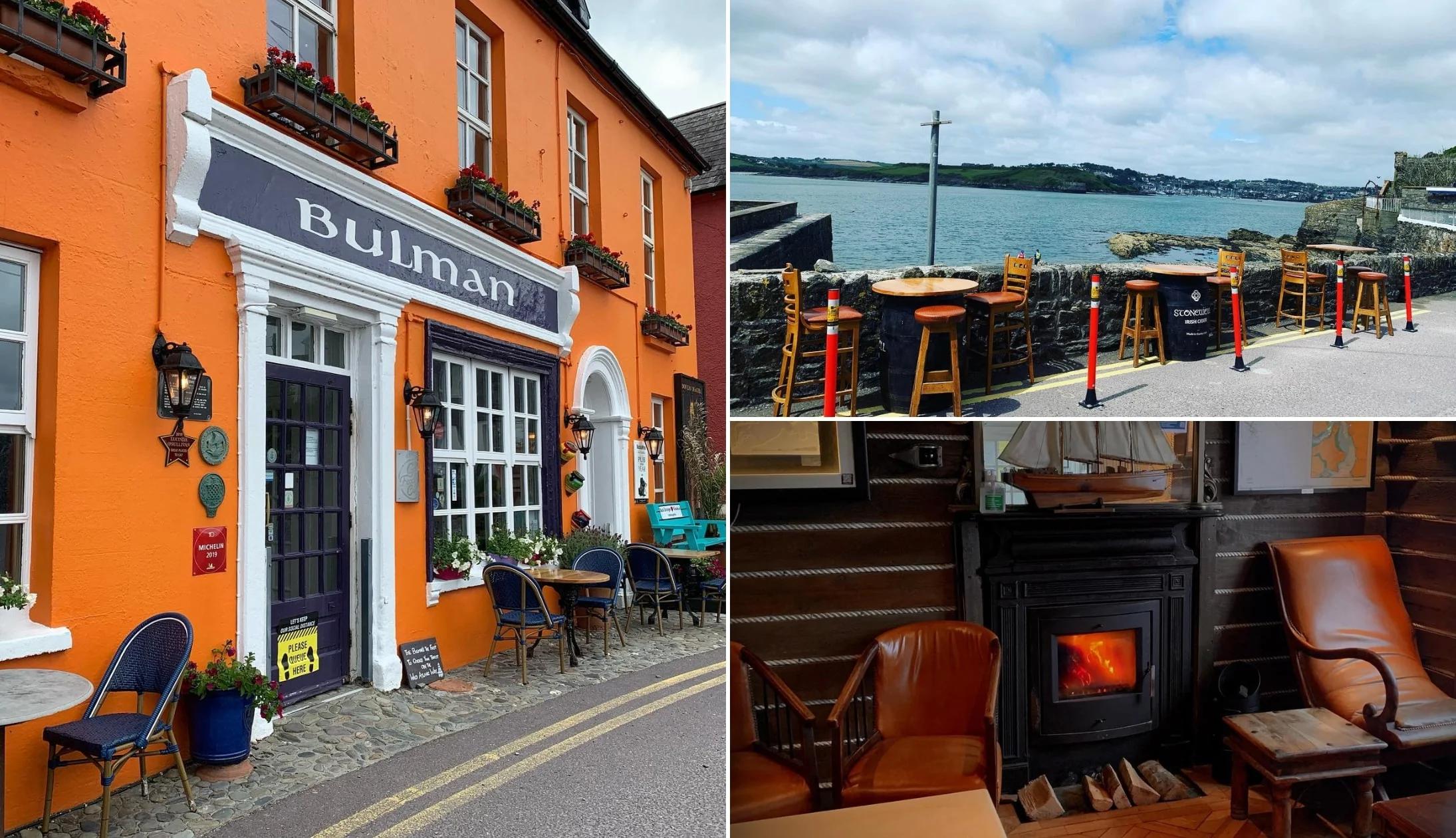
Photos via the Bullman on FB
The Bullman is a wonderful restaurant right next to an idyllic little harbour.
They have a varied menu, with everything from Thai green chicken curry, to local BBQ pork ribs with wasabi slaw. Since it’s one of the last days of your trip, consider treating yourself to grilled lobster, a customer favourite!
The restaurant kitchen is open Tuesdays to Saturdays from 12:30pm. They are closed on Sundays and Mondays.
Stop 7: Charles Fort
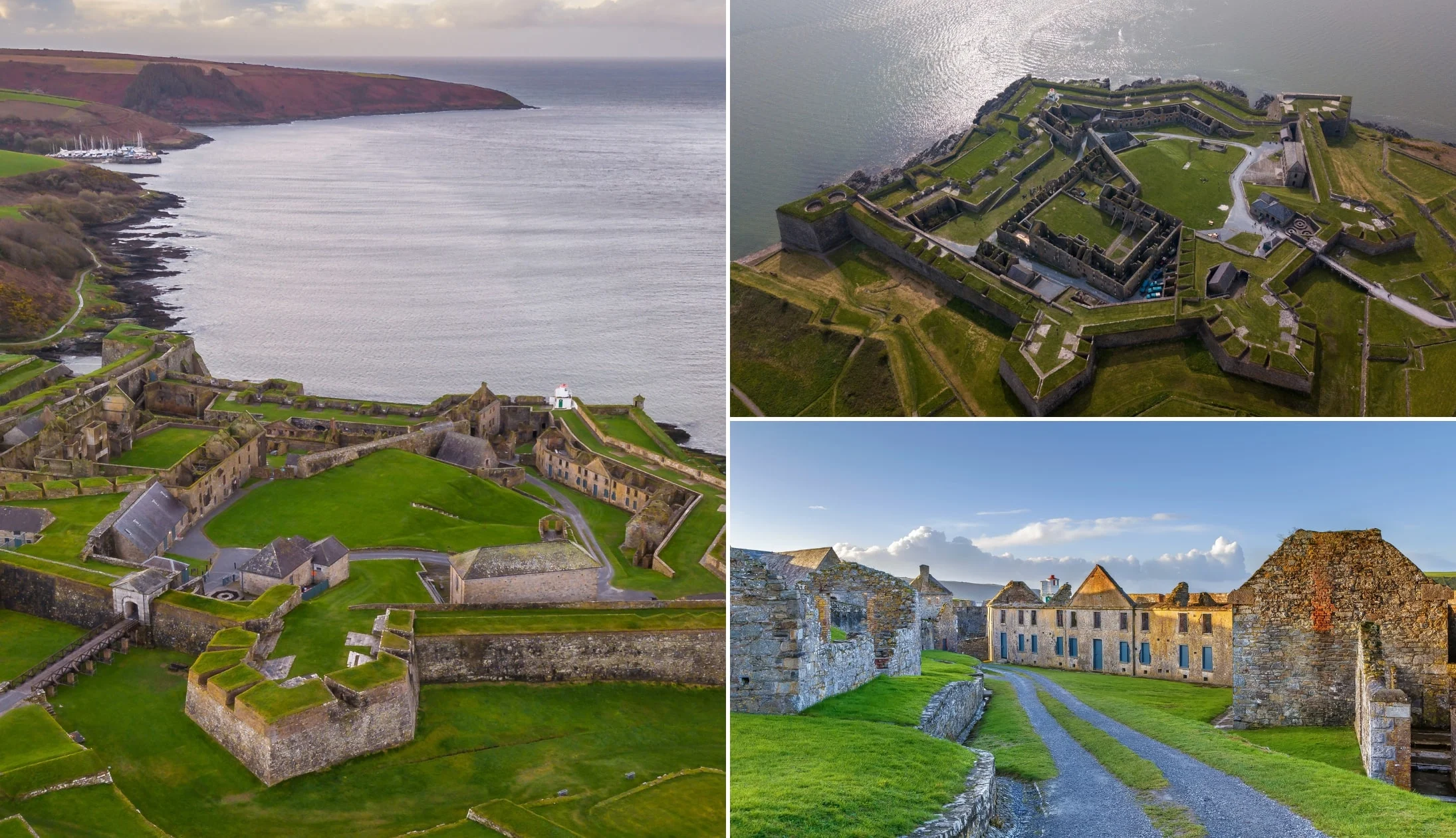
Photos via Shutterstock
Walk 5 minutes past the Bullman to get to Charles Fort.
Charles Fort is the country’s largest military installation. The huge star-shaped building dates back to the late 17th century and over the years, has seen some fearsome battles.
The fort survived a 13-day siege during the Williamite wars in 1690 and a battle during the Civil War in the 1920s. Make sure to head to the ramparts for the stunning view over Kinsale Harbour.
Stop 8: Back to Kinsale

Photos via Shutterstock
Make your way back to Kinsale along the Scilly Walk to reunite with the car.
It takes around 45 minutes but you’ll be treated to stunning views of the town en route.
Stop 9: Back to Cork City for the night

Photos via Sin E on FB
Head back to Cork City for the evening, the drive usually takes around 30 minutes.
Here’s a few recommendations to get you started, but feel free to follow your nose:
Our dinner recommendations
There are heaps of brilliant restaurants in Cork City, but our personal favourites are Market Lane, Old Town Whiskey Bar at Bodega, and Cornstore.
Market Lane has a delicious-sounding menu featuring Irish favourites like pan-fried hake with braised leeks, smoked mussels, and baby potatoes, as well as international dishes like Sri Lankan vegetable curry with tempura aubergine and forbidden rice.
Head to Old Town Whiskey Bar for burgers, salads, and traditional pub grub, and Cornstore for steaks and seafood.
Live music and trad bars
There’s some might old-school pubs in Cork City, too. For drinks, check out Mutton Lane (a quirky traditional pub), The Oval (a historic pub named after its unique oval ceiling), and Castle Inn (a traditional family-run pub with a great atmosphere).
There are some great spots for hearing some trad music in Cork, our top choices are Sin E and The Corner House.
Day 3: Goungane Barra and Bantry
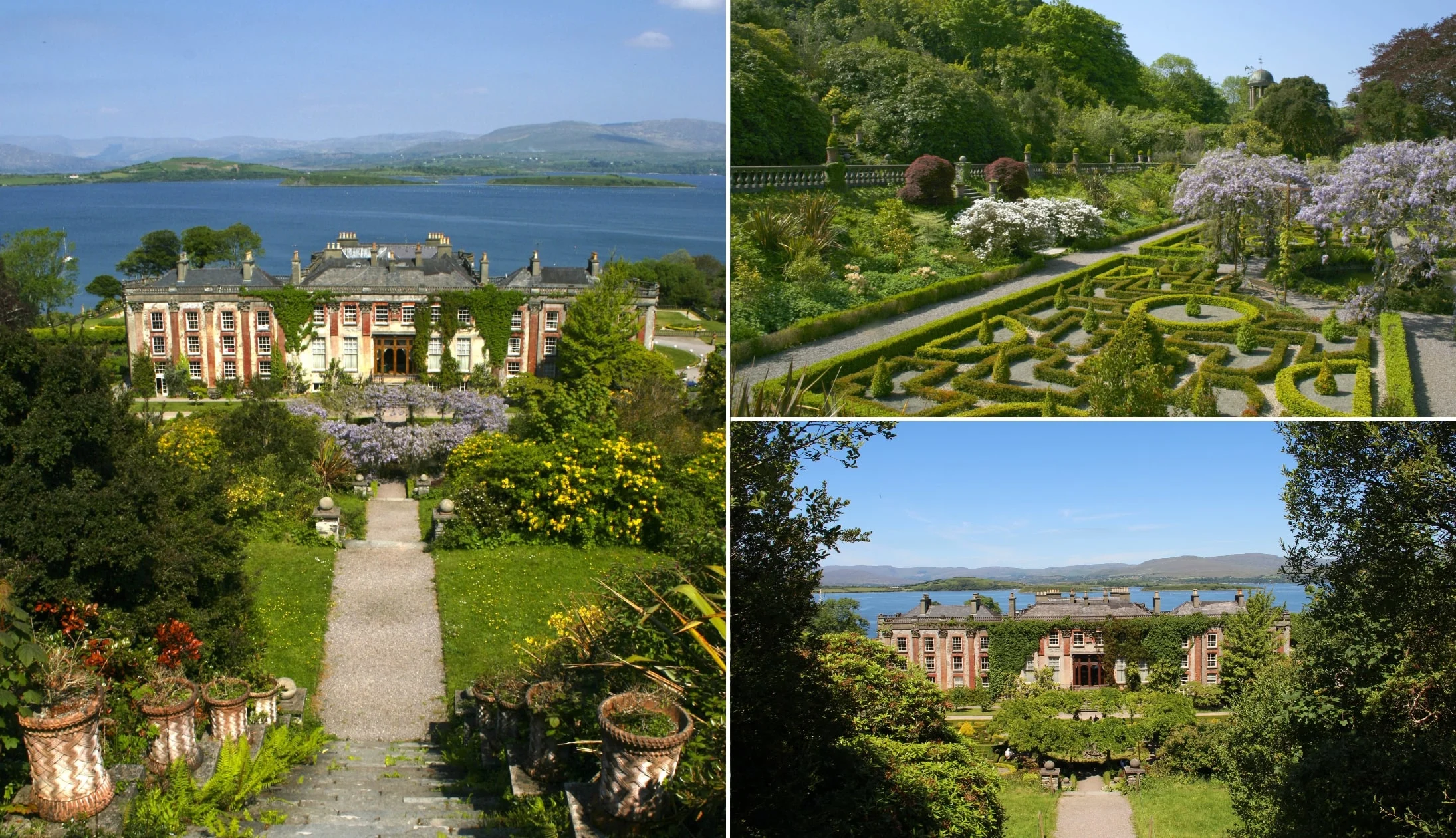
Photos via Shutterstock
It’s time to wave goodbye to Cork City, and today you’re making your way to Bantry in West Cork, where you’ll be spending two wonderful nights.
Before you hit the road, grab a hearty breakfast at your accommodation before check out, or stop at Filter or Alchemy for some top-notch coffee and some pastries for the drive.
Bantry is a picturesque little market town on the shores of Bantry Bay. See below for our accommodation recommendations in and around Bantry.
Recommended accommodation in Bantry
- Budget: Bru Na Pairc B&B (homely B&B about a 15-minute walk from the town) and Niblick (gorgeous guesthouse a 5-minute drive from the town)
- Mid-Range: The Maritime: (central hotel with great reviews) and Westlodge Hotel (popular spot just outside of town)
- Luxury: Seaview House Hotel (beautiful old-world hotel a 7-minute drive from town)
Stop 1: Gougane Barra
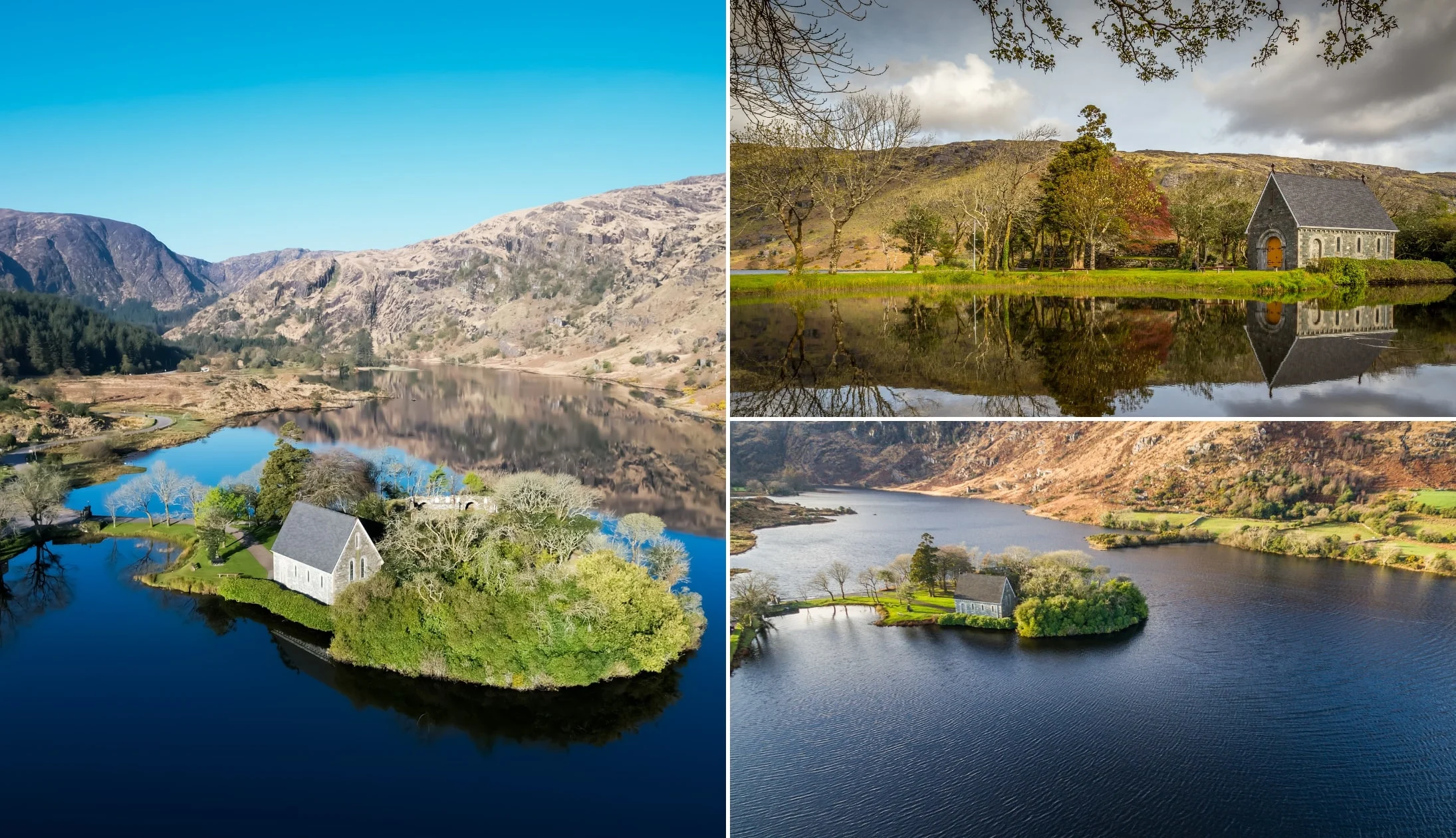
Photos via Shutterstock
Your first stop of the day is Gougane Barra, a beautiful and peaceful spot around one hour and 10 minutes from Cork City.
It’s home to some brilliant walks if you feel like stretching your legs a bit, but we’d mostly recommend just walking around the little church (which is probably the most scenic in Ireland) and the stations of the cross.
The whole valley is beautiful and if you’re into novel attractions, the Gougane Barra public toilet is known as the most beautiful toilet in Ireland and is featured in a book of the best toilets in the world!
There’s a good mix of walks on offer here, ranging from hard to handy (read all about the trails here).
Stop 2: Bantry
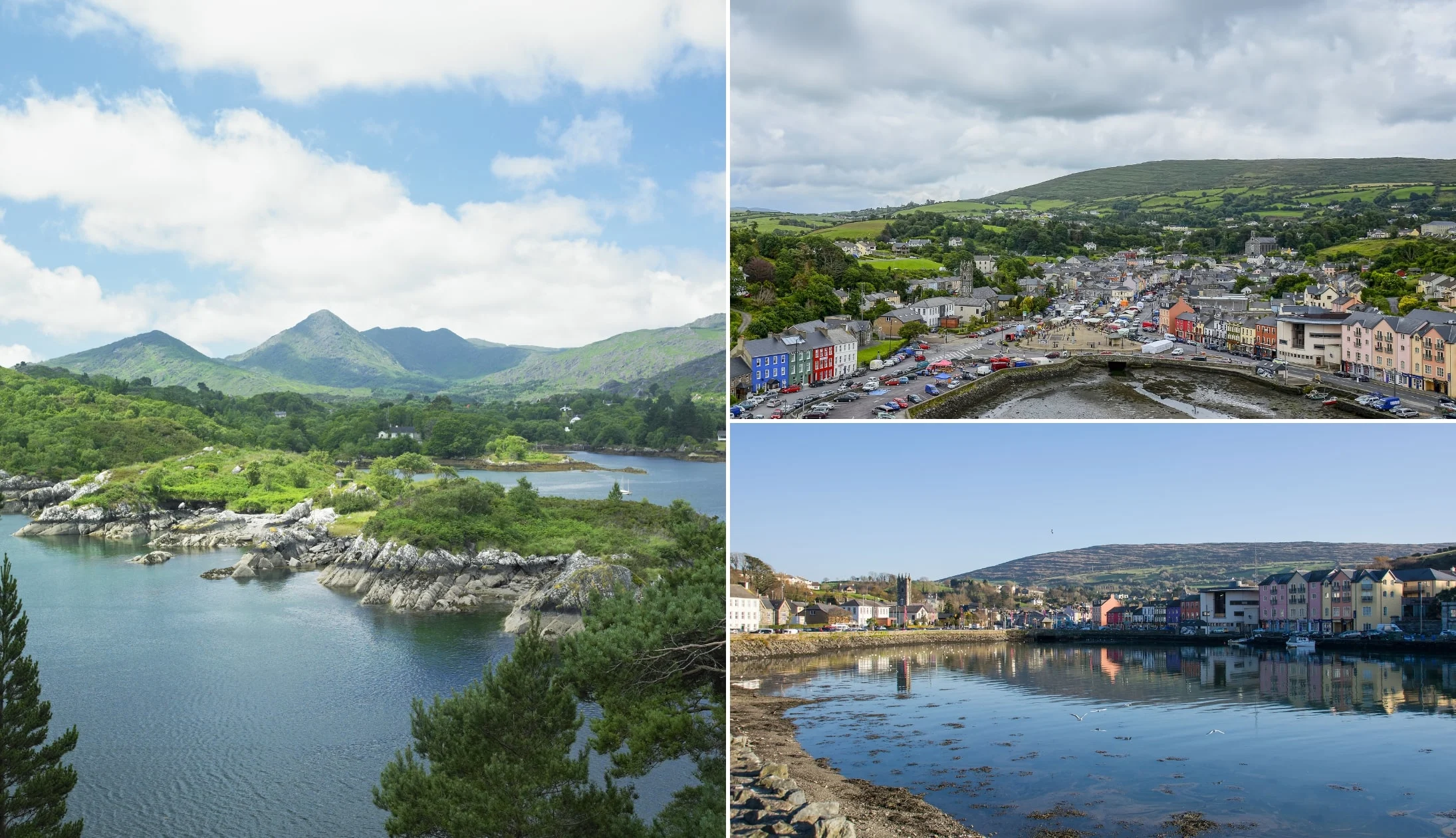
Photos via Shutterstock
Make your way to the bustling town Bantry, a handy 27-minute drive away and, if you can, check into your accommodation.
When you’re ready to rock, we’ve some solid recommendations for a lunchtime feed!
Stop 3: Lunch
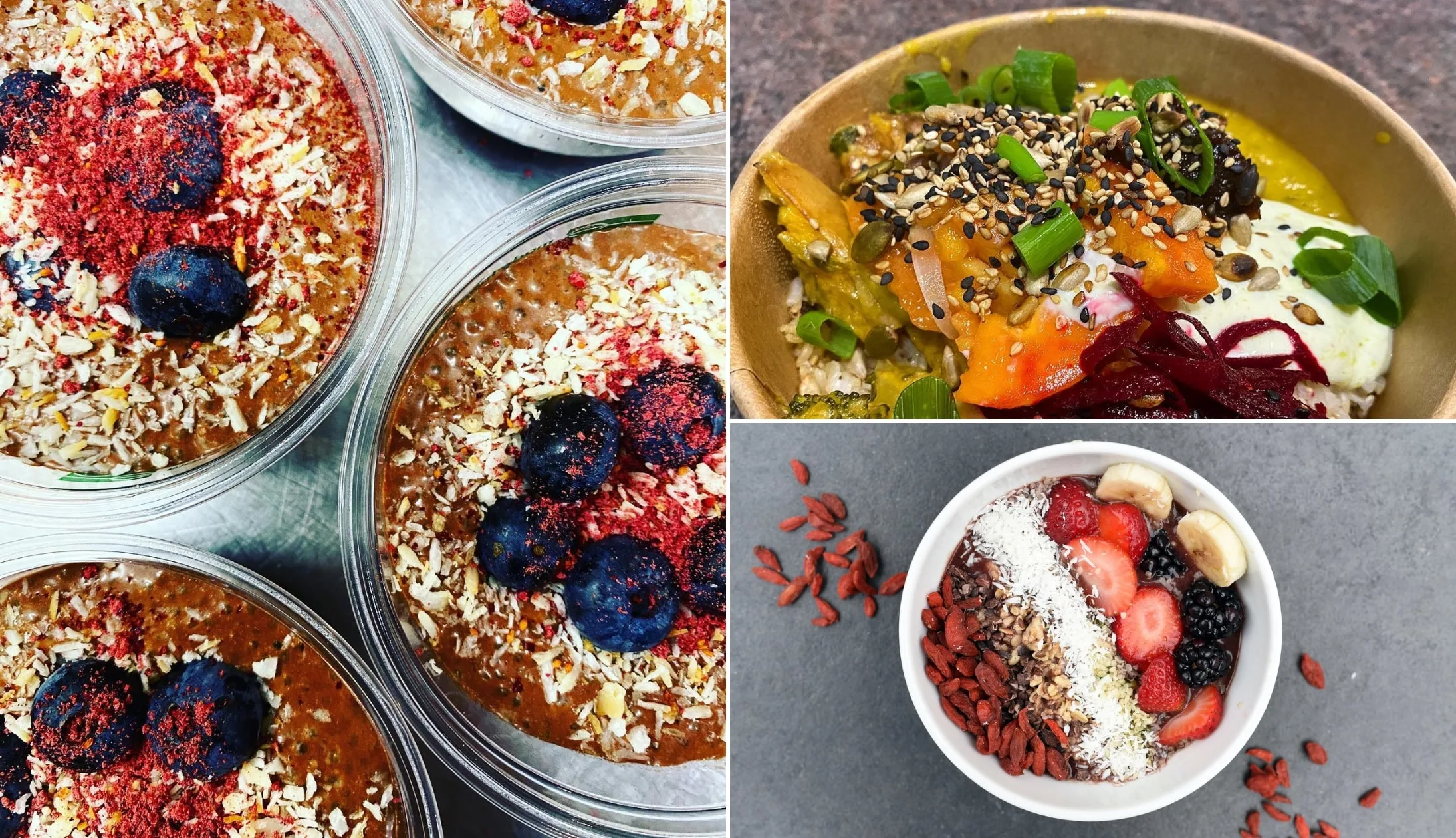
Photos via Organico on FB
We recommend stopping by Organico (there’s no seating as it’s technically a deli, but they have some deliciously healthy salads and sandwiches), Donemark West (beautifully presented plates and the steaks are a hit!), or The Brick Oven (tasty brick-oven pizzas).
Stop 4: Bantry House

Photos via Shutterstock
This gorgeous 18th-century mansion stands proudly overlooking Bantry Bay, nestled amongst some beautiful gardens. It’s possible to do a self-guided tour of the home and its elegantly restored rooms (last admission at 4:45pm – subject to change), but it’s worth visiting for the gardens and magnificent views alone.
Stop 5: Sheep’s Head

Photos via Shutterstock
Next, you’re going to be exploring the Sheep’s Head Peninsula, a beautifully remote corner of Ireland tucked away between Bantry and Mizen Head (you’ll be visiting Mizen Head tomorrow).
It’s a 50-minute drive out to Sheep’s Head, and once you’re there, you can either relax and take in the views or stretch your legs on a walk. Park opposite Bernie’s Cafe (here on Google Maps).
From Bernie’s Cafe, there’s the moderate 4.2km Lighthouse Loop which is moderate in difficulty and should take around 1.5 hours (way-marked in blue) that passes by the Sheep’s Head Lighthouse and scenic Lough Akeen.
If you don’t want to do the entire loop, just turn back once you reach the lighthouse. The full Lighthouse Loop takes most people one and half hours to complete.
Stop 6: Back to Bantry via Durrus

Photos via Shutterstock
It’s time to drive back to Bantry for the night.
Take the scenic route via Durrus for some wonderful views.
Stop 7: Dinner, drinks and live music
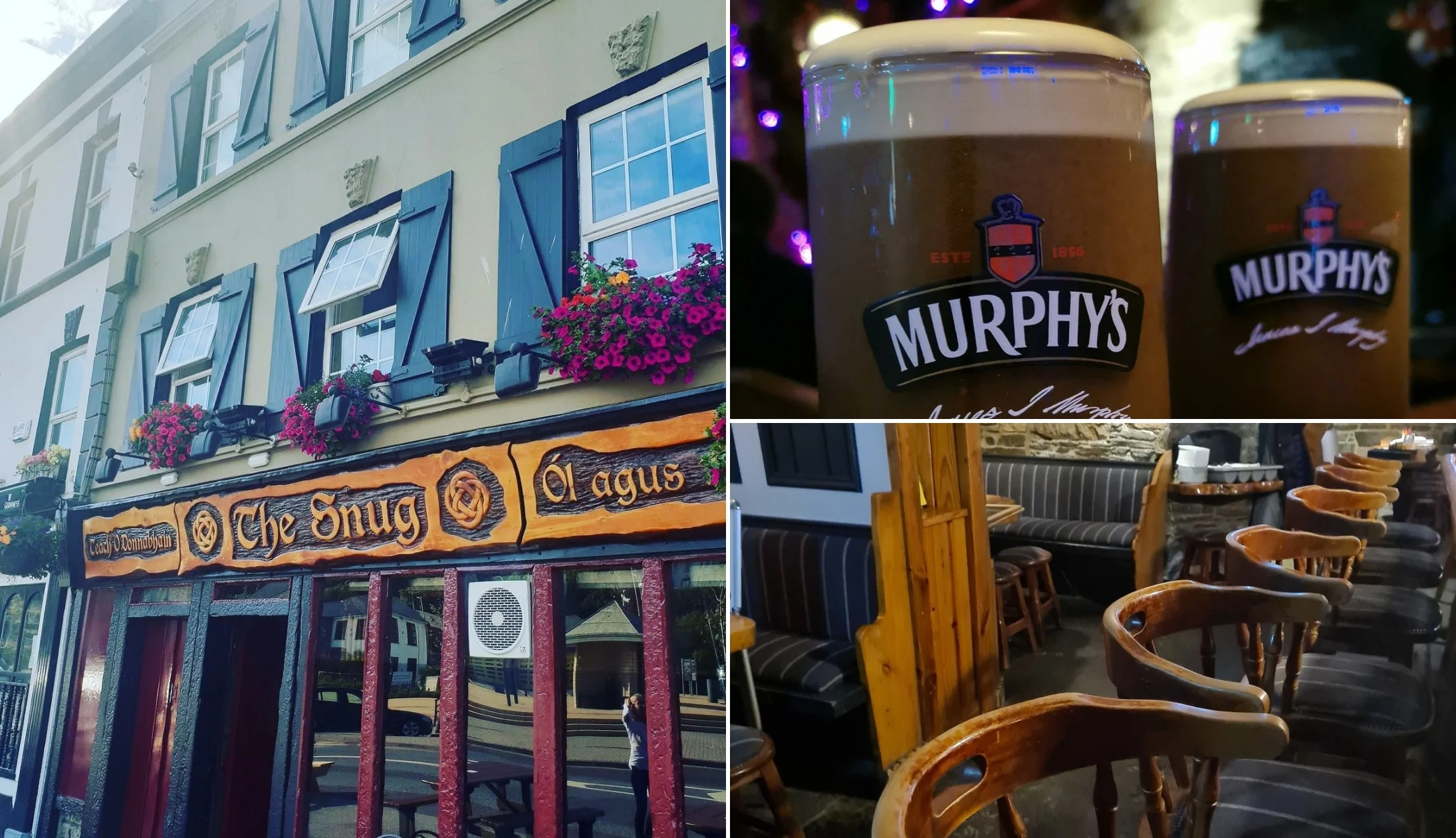
Photos via The Snug on FB
After your lovely kayaking adventure, grab some dinner and drinks in Bantry. We’ll pop our recommendations below:
Our dinner recommendations
Bantry has lots of great places to eat, but our go-to’s are The Snug and O’Connor’s Seafood Restaurant.
The Snug is hard to miss with its amazing historical exterior and central location near the town square. You’ll find traditional Irish dishes like slow-roasted lamb shank and fish and chips that wash down well with a pint of Guinness.
O’Connors Seafood Restaurant is a must-try for anyone who loves seafood. It has been featured in the Michelin Guide plus they source their produce and ingredients locally.
Live music and trad bars
For after-dinner drinks, we suggest popping into Ma Murphy’s (a fourth-generation Irish pub, full of charm with a lovely beer garden), The Quays (another traditional Irish pub which we recommend if you’re looking to catch a sports game), and Anchor Tavern (an old-school Irish pub with traditional decor and a cosy atmosphere).
Head to any of the above for some live music. Ma Murphy’s also sometimes puts on events and singing sessions.
Day 4: West Cork’s wonders
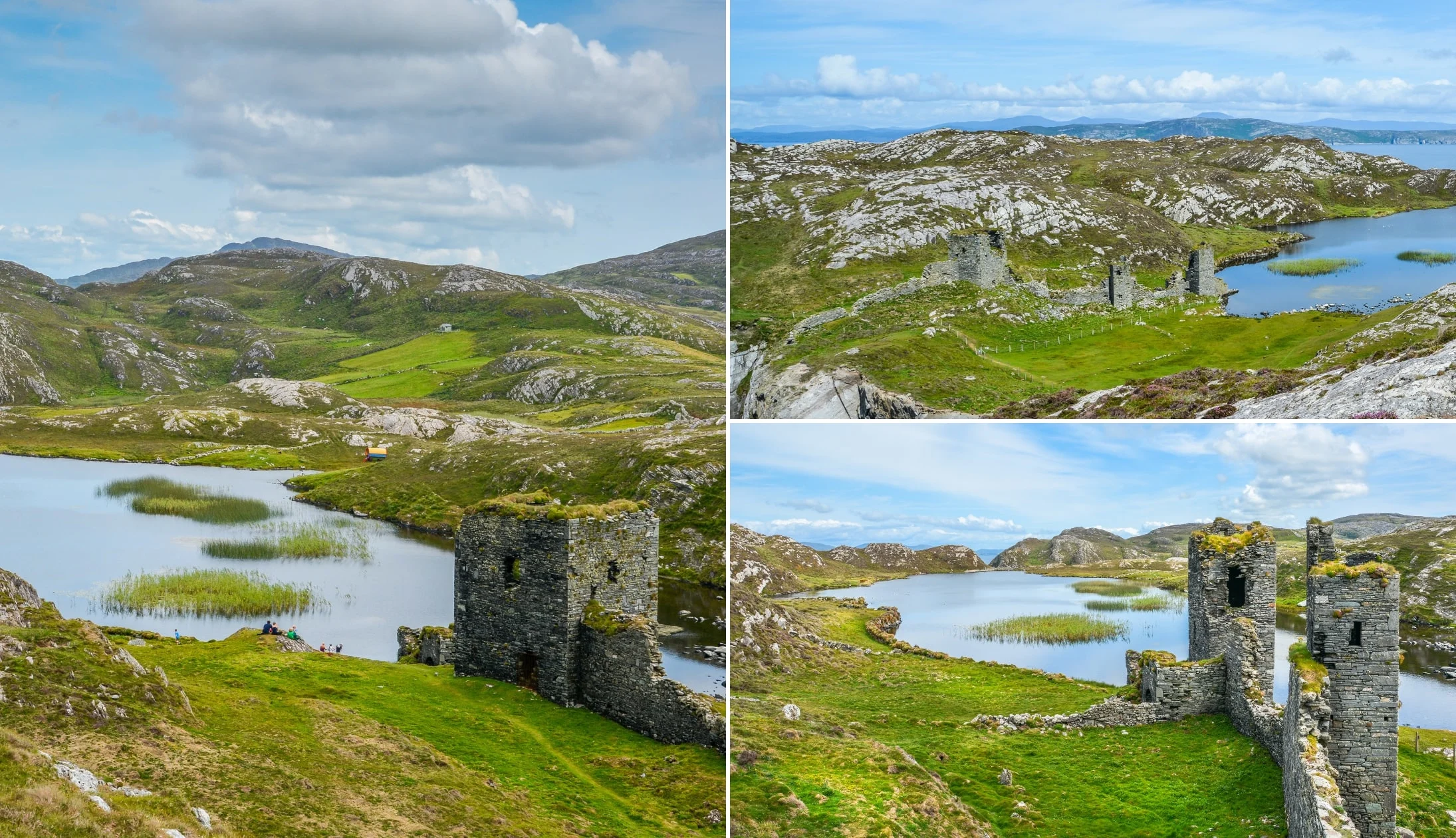
Photos via Shutterstock
Be prepared for a day full of adventure as today, you’re making your way to the most southerly point of Ireland, the magnificent Mizen Head!
This rugged corner of Ireland is known for unpredictable weather, so we suggest packing for sunny and rainy spells.
Start the day with some breakfast where you’re staying, or head out into Bantry to find somewhere. We love the Floury Hands Bakery Cafe (open from 8:30am).
Stop 1: Mizen Head
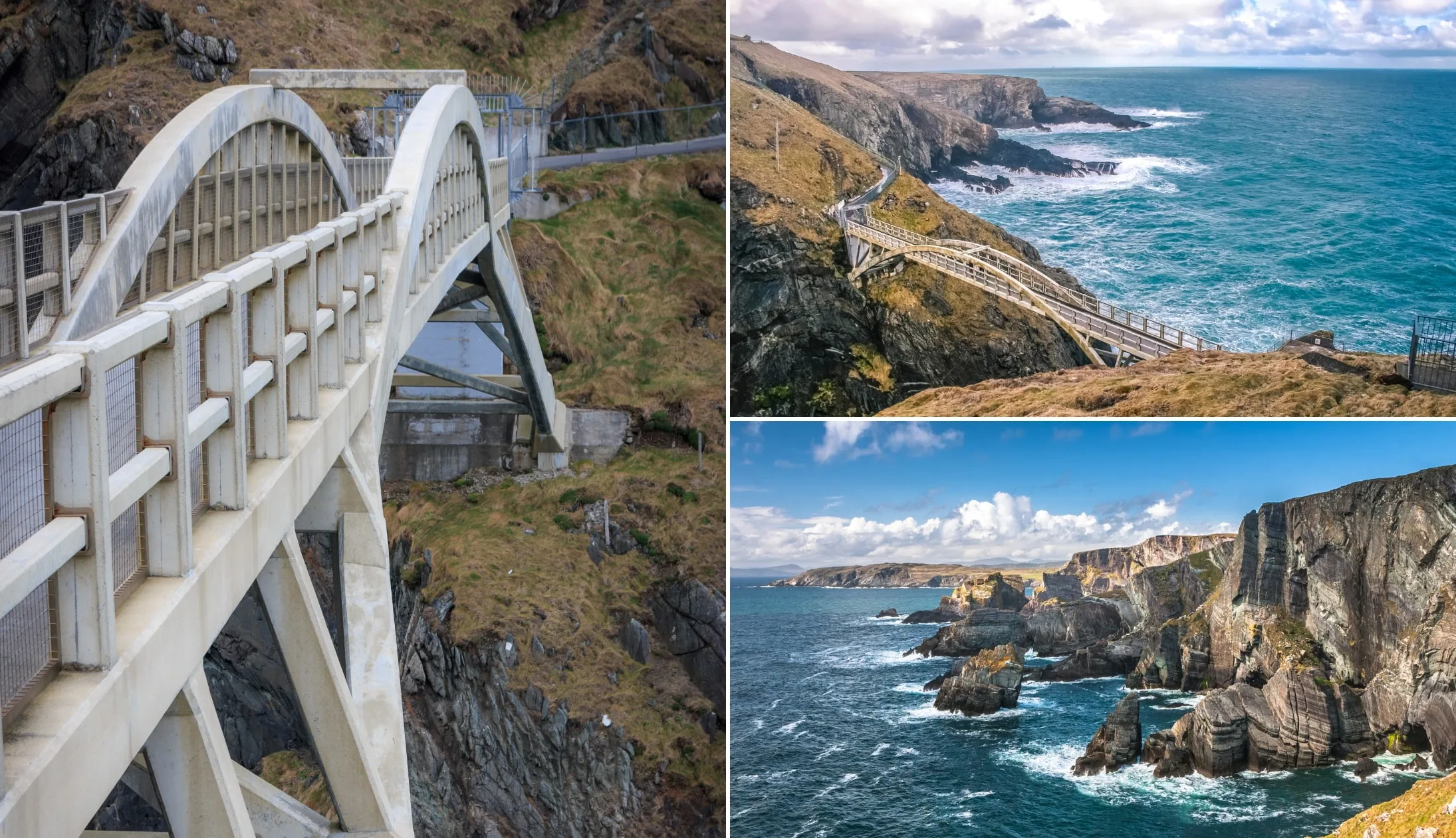
Photos via Shutterstock
After breakfast, jump in the car and drive the 47 minutes to Mizen Head. This is one of the most popular places to visit in West Cork (and for good reason!).
You’ll find Mizen Head right on the tip of the Mizen Head Peninsula. The landscape is wild and rugged, characterized by jagged cliffs that plunge down into the roaring Atlantic.
Aside from the spectacular views, Mizen Head is home to the Mizen Head Visitor Centre (an award-winning Maritime Museum), the historical Signal Station, and the Mizen Head footbridge, which links the mainland to Cloghane Island.
There are some wonderful viewpoints in the area, so if you feel up to some exploring, we recommend checking a few of them out.
Stop 2: Three Castle Head

Photos via Shutterstock
Your next stop of the day is Three Castle Head, which is often overlooked next to Mizen Head. Despite its name, it’s home to a single castle (Dunlough Castle), which is one of our favourite castles in the country (a lofty claim, we know).
The area gets its name from the three towers that make up the impressive Dunlough Castle ruins.
Dunlough Castle is thought to be one of the oldest Norman castles in this part of the country, with the current ruins dating back to the 15th century, although the site dates back to 1207.
Part of what makes the fortification so impressive is its dramatic location high up on the shores of Dun Lough, with views beyond of the Atlantic.
According to legend, the castle is haunted by the ghost of the ‘White Lady’ or the ‘Lady of the Lake’, a heartbroken bride who jumped off the clifftop after discovering her father had mistakenly killed her new husband.
It’s a pleasant 2.9km out-and-back walk to the castle that takes most people just under one hour, although you may want to spend a little extra time exploring the ruins and general area.
The walk starts here at the car park, where you’ll find an ‘honesty box’ asking for a small cash fee (the castle is on private land, and the fee goes towards maintaining the site).
Stop 3: Lunch in Crookhaven
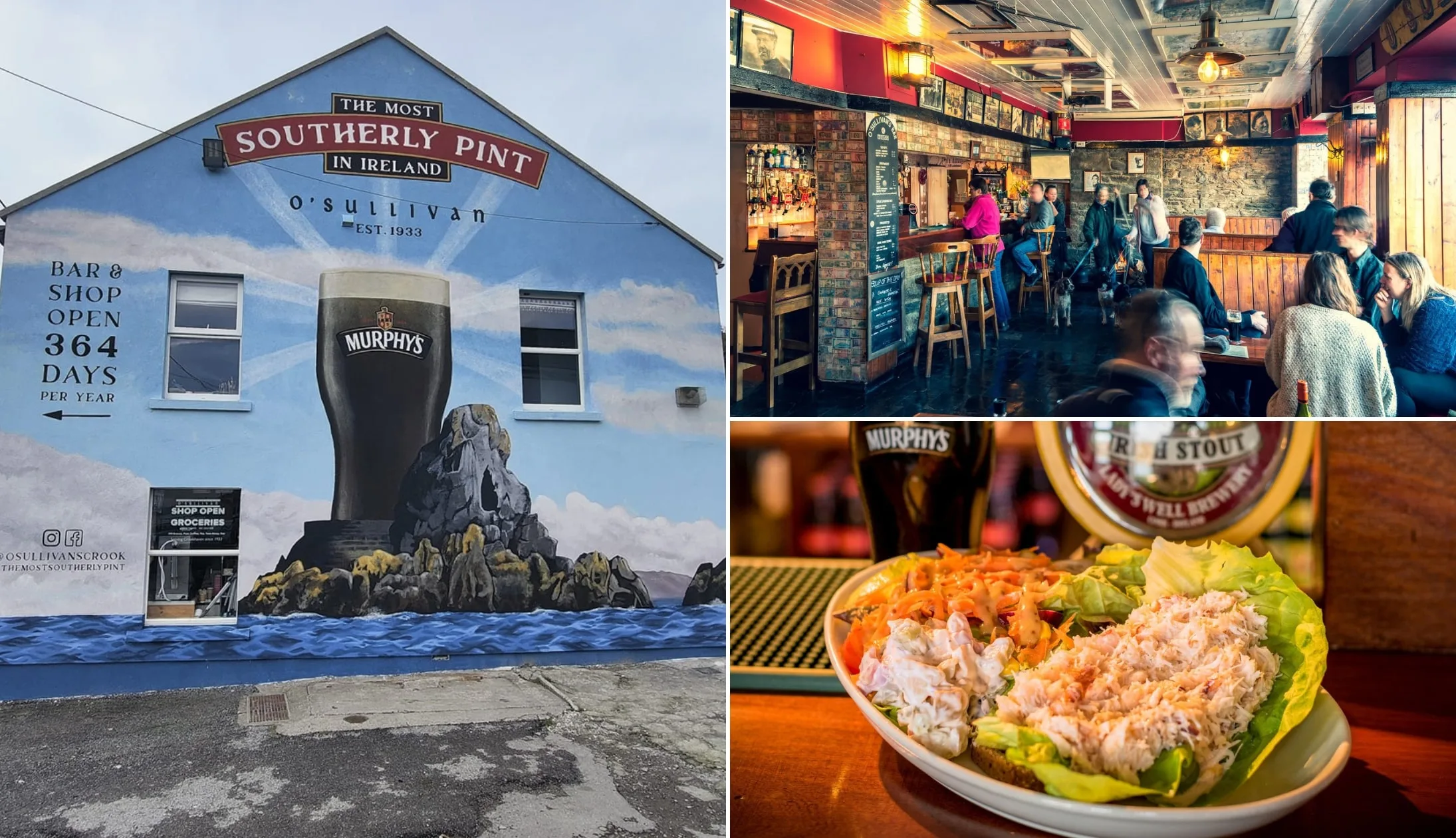
Photos via O’Sullivan’s on FB
It’s time for lunch in the beautiful little fishing village of Crookhaven, a 20-minute drive away, and one of our favourite places in West Cork! We always pop into either O’Sullivan’s Bar or the Crookhaven Inn for a bite to eat.
Both are great choices if you’re after some classic pub grub. O’Sullivan’s Bar has a delicious seafood chowder, and if the weather’s nice, they have some seats outside overlooking the harbour.
The Crookhaven Inn is another harbourside spot, with some outdoor seating and a tasty open-faced crab sandwich.
Stop 4: Altar Wedge Tomb
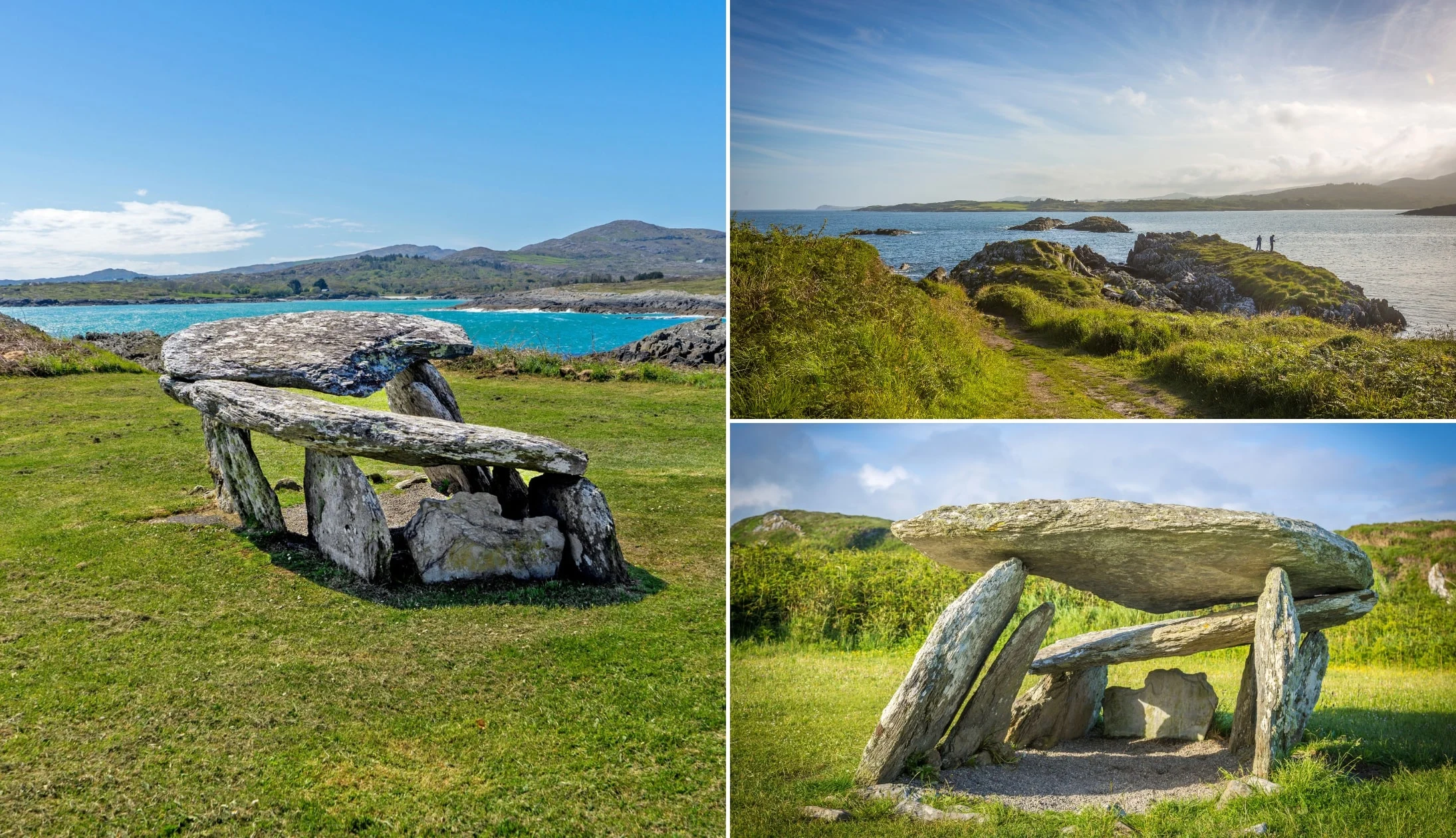
Photos via Shutterstock
After lunch, drive the 20 minutes or so to your next stop, the Altar Wedge Tomb. Also called ‘Tuama Dingeach na hAltora’, this monument dates back to around 2,500 BC – 2000 BC (between the late Neolithic and early Bronze Age).
Interestingly, when it was excavated in 1989, archaeologists found fishbones, periwinkles, and limpets alongside human bones. Presumably, these were part of the ancient burial ritual.
The tomb sits near the edge of a cliff close to Toormore Bay, with breathtaking views of the ocean, nearby islets, and surrounding countryside. You’ll find a small car park nearby here.
Stop 5: Ballydehob
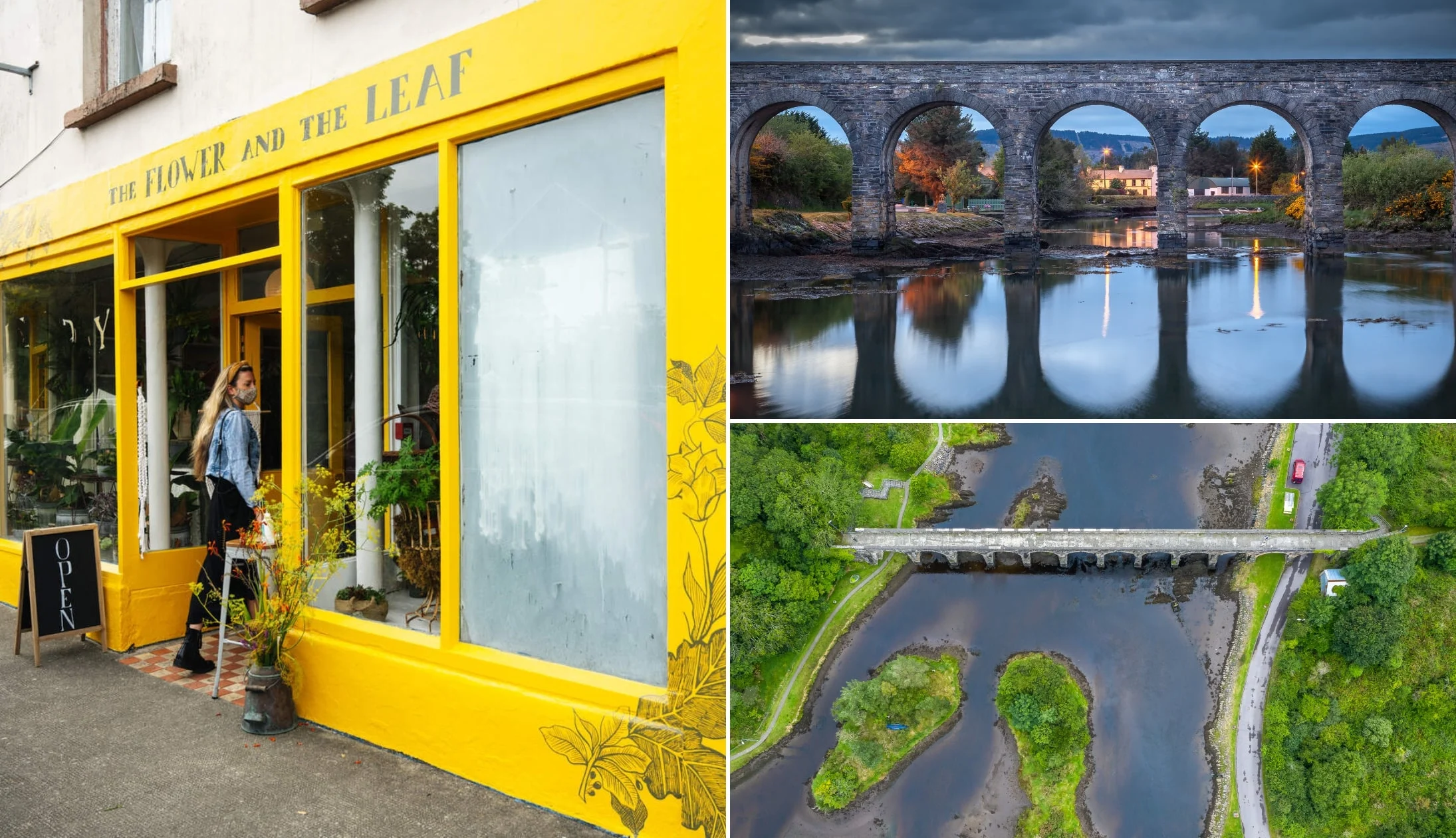
Photo left via Tourism Ireland. Others: Shutterstock
Next up, you’re driving to the 12 Arch Bridge, 16 minutes from the Altar Wedge Tomb in Ballydehob.
Park east of the estuary here, and from there, there is a lovely little nature trail that passes alongside the estuary, crosses the 12 Arch Bridge, and makes its way to Ballydehob Harbour.
The 12 Arch Bridge used to be a part of the old West Carbery Tramway and Light Railway up until 1947. It’s a scenic spot, especially when the waters are still and you can see the bridge’s reflection.
The best viewpoint is here, across a small footpath/bridge that crosses the estuary near the harbour.
Stop 6: Skibbereen Town and Hertitage Centre
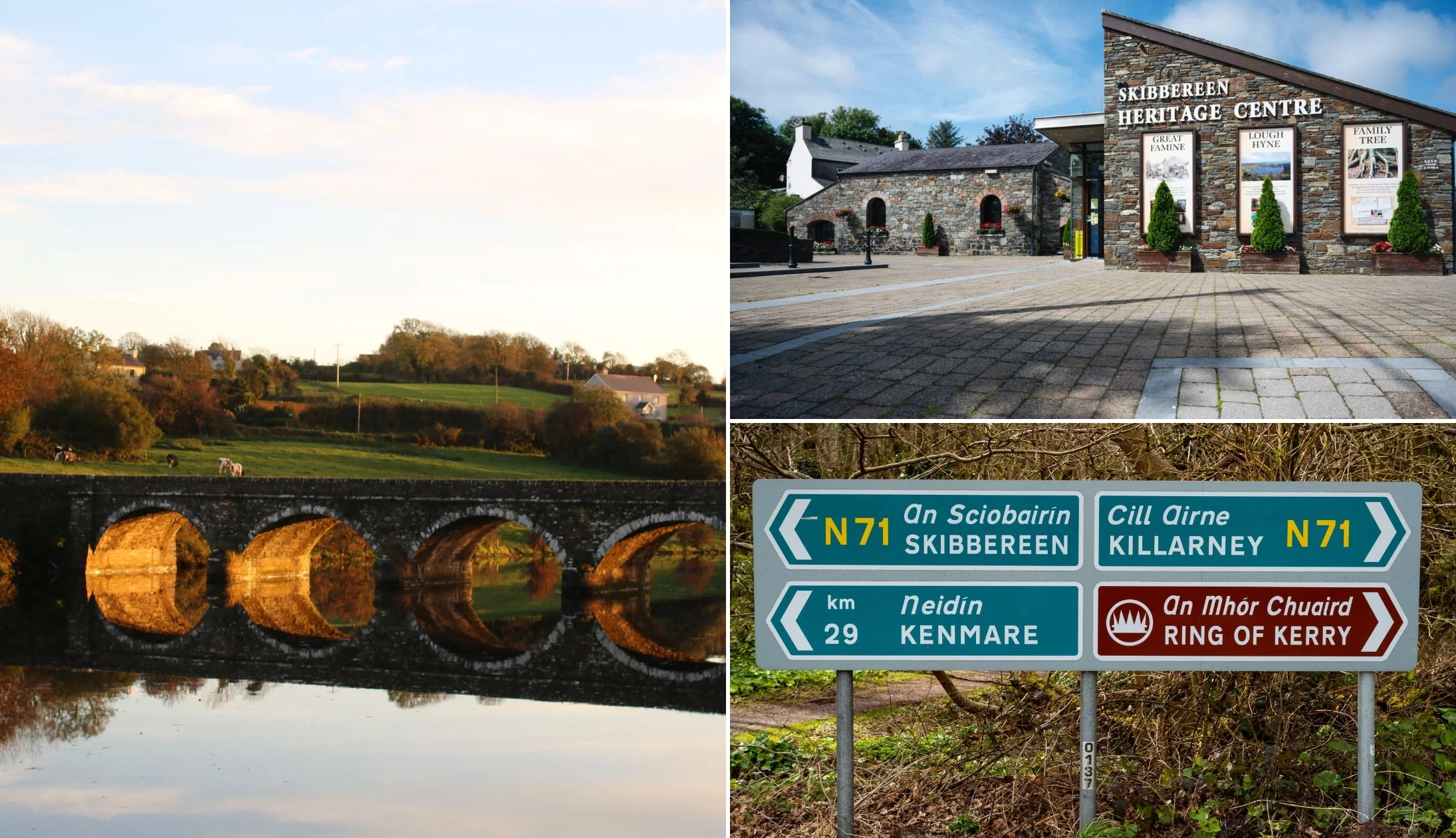
Top right photo: Tourism Ireland. Others: Shutterstock
Jump in the car and drive 15 minutes to the Skibbereen Heritage Centre. Although the Great Famine affected most of Ireland, Skibbereen was hit particularly hard.
The heritage centre tells Skibbereen’s famine story through an interactive famine exhibit.
The centre also has an interesting exhibit on nearby Lough Hyne (your next stop), the first marine nature reserve in the country.
Stop 7: Lough Hyne
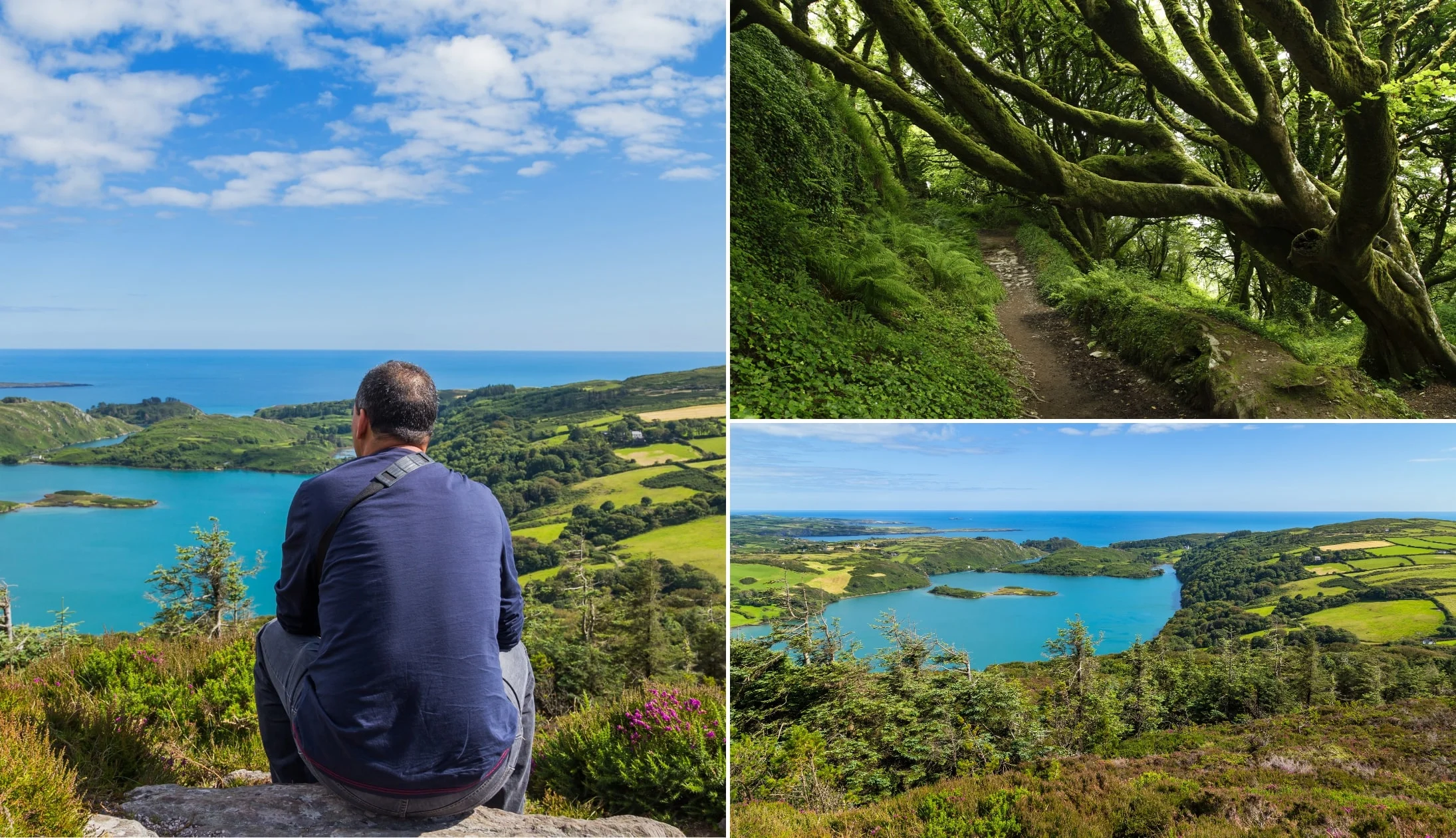
Photos via Shutterstock
Lough Hyne is 12 minutes away from the heritage centre. It’s a really beautiful spot, and there are lots of walks (short and long) in the area.
Our favourite walk is the one up Knockomagh Woods, it starts in the car park, continues up through the woodland, and onto the top of the hill, where you’ll have unbeatable views of the seawater lake! Give yourself 45 minutes to reach the top.
If a steep climb isn’t what you’re after, then you could always head off on a short and sweet ramble along the shore.
Stop 8: Back to Bantry for the night

Photos via The Snug on FB
Hop back in the car and drive the 40 minutes back to Bantry. Freshen up at your accommodation if you need to, or if you’re already quite hungry, head straight out for dinner.
Our dinner recommendations
Bantry has lots of great places to eat, but our go-to’s are The Snug and O’Connor’s Seafood Restaurant.
The Snug is hard to miss with its amazing historical exterior and central location near the town square. You’ll find traditional Irish dishes like slow-roasted lamb shank and fish and chips that wash down well with a pint of Guinness.
O’Connors Seafood Restaurant is a must-try for anyone who loves seafood. It has been featured in the Michelin Guide plus they source their produce and ingredients locally.
Live music and trad bars
For after-dinner drinks, we suggest popping into Ma Murphy’s (a fourth-generation Irish pub, full of charm with a lovely beer garden), The Quays (another traditional Irish pub which we recommend if you’re looking to catch a sports game), and Anchor Tavern (an old-school Irish pub with traditional decor and a cosy atmosphere).
Head to any of the above for some live music. Ma Murphy’s also sometimes puts on events and singing sessions.
Day 5: The Beara Peninsula
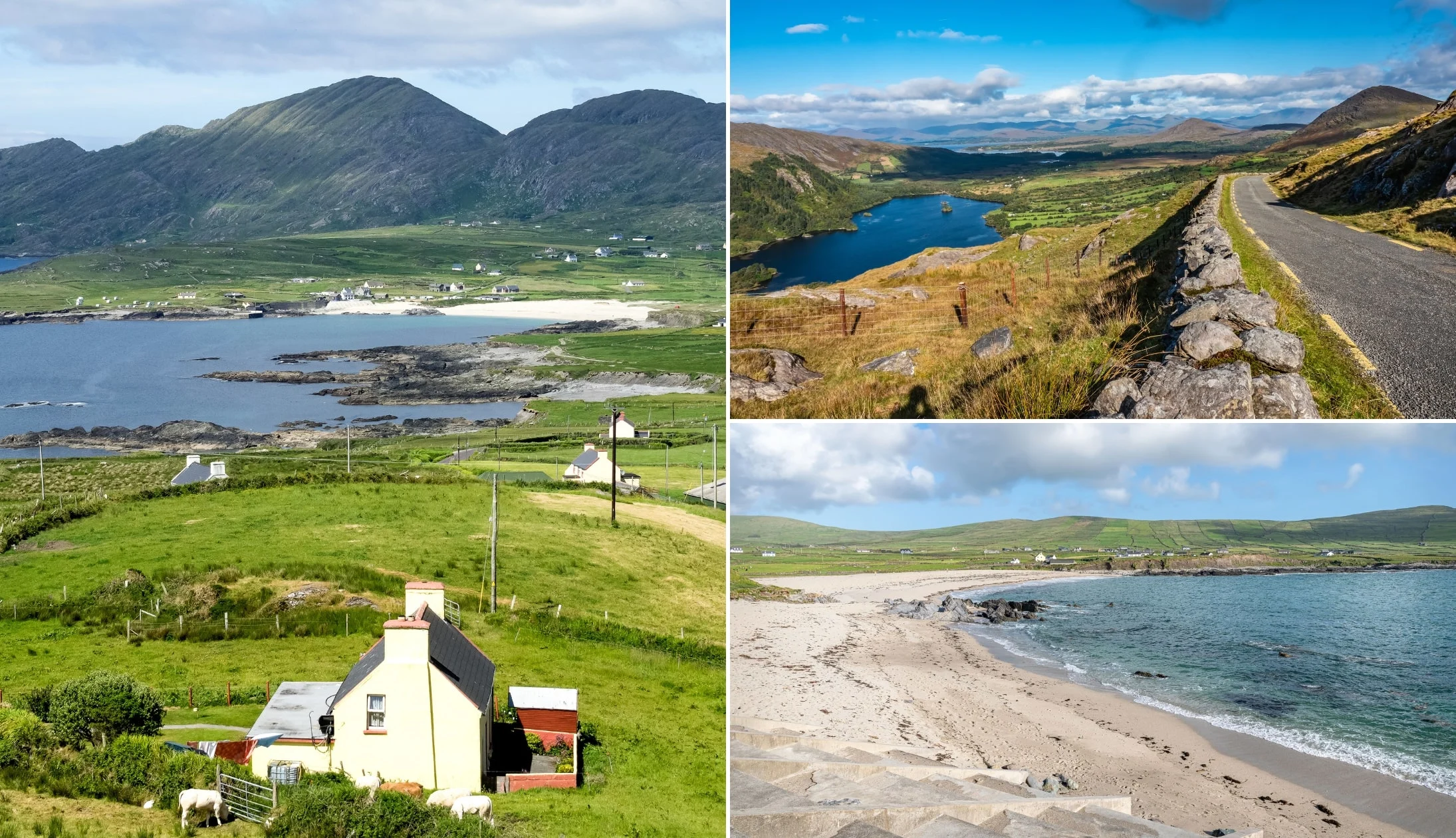
Photos via Shutterstock
You’re halfway through your adventure-filled 10 days in Ireland, and today, you’re checking out of your accommodation in Bantry and heading over to the charming town of Kenmare, where you’ll be spending two nights.
En route to Kenmare, you’ll be exploring the rugged and wild Beara Peninsula.
Fuel up for the day with a big breakfast at your accommodation or, if you’d rather eat breakfast in town, De Barra’s does a cracking full Irish.
Recommended accommodation in Kenmare
Here are a handful of places that we’d recommend staying in Kenmare:
- Budget: An Bruachan B&B (superb reviews less than a 20-minute walk from town) and Hawthorn House (great reviews and super central)
- Mid-range: O’Donnabhain’s and Bridge Street Townhouse (both very central with exceptional reviews)
- Luxury: Park Hotel (fabulous 5-star in the town) and Lansdowne Kenmare (boutique hotel on the main street)
Stop 1: Glengarriff
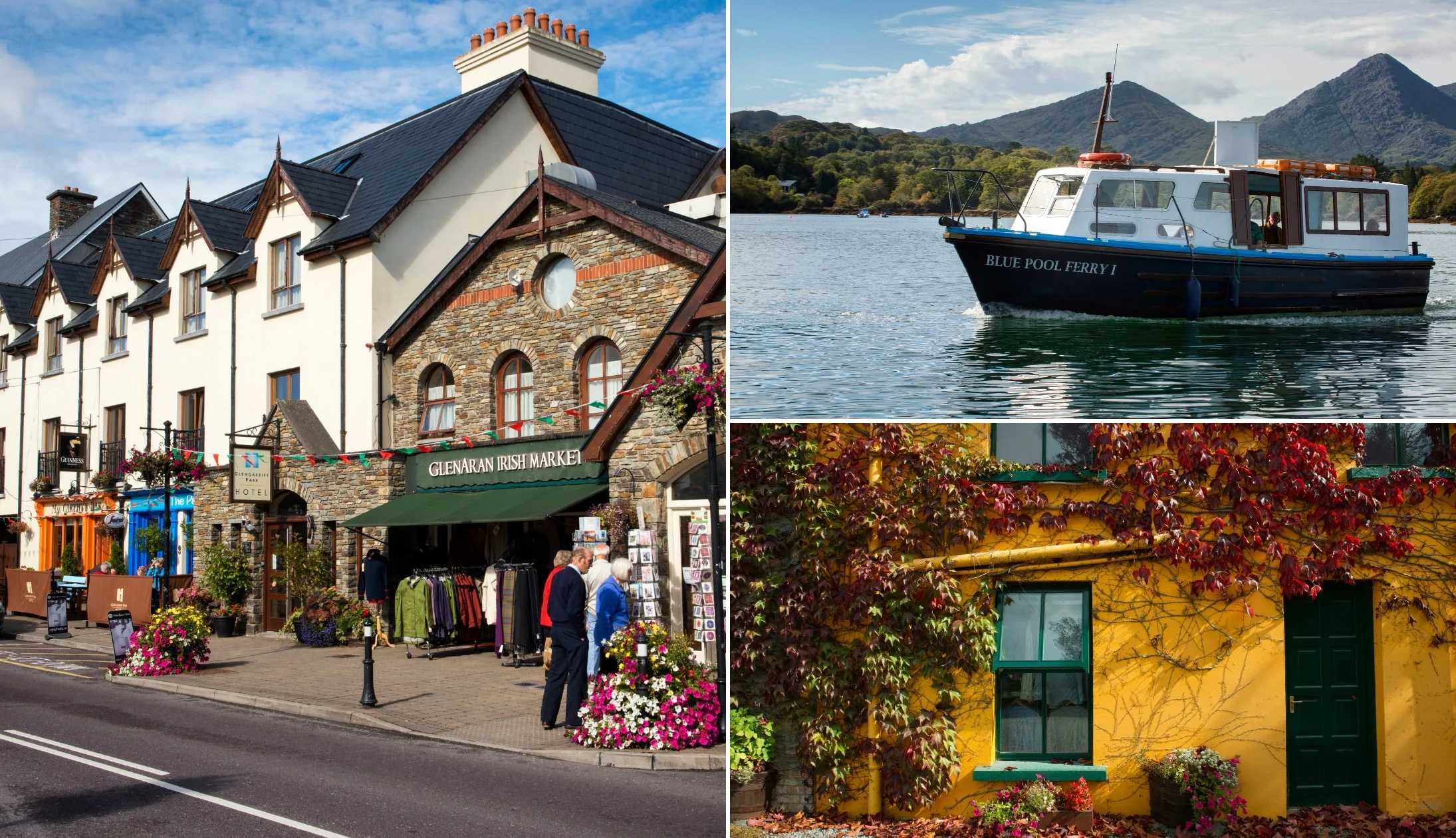
Photos via Shutterstock
Drive the 20 minutes from Bantry to Glengarriff, a quaint little village tucked between the ocean and the mountains. We suggest parking in the centre of Glengarriff next to Quills (here on Google Maps), then walking the short distance to the magical Blue Pool.
The Blue Pool is a natural harbour close to the centre of the village. It’s hidden away amongst lush green vegetation, which adds to the enchanting feel of the place.
It’s a popular and tranquil spot with steps leading down to the water. However, the water is very deep and there’s no lifeguard.
Stop 2: Garnish Island
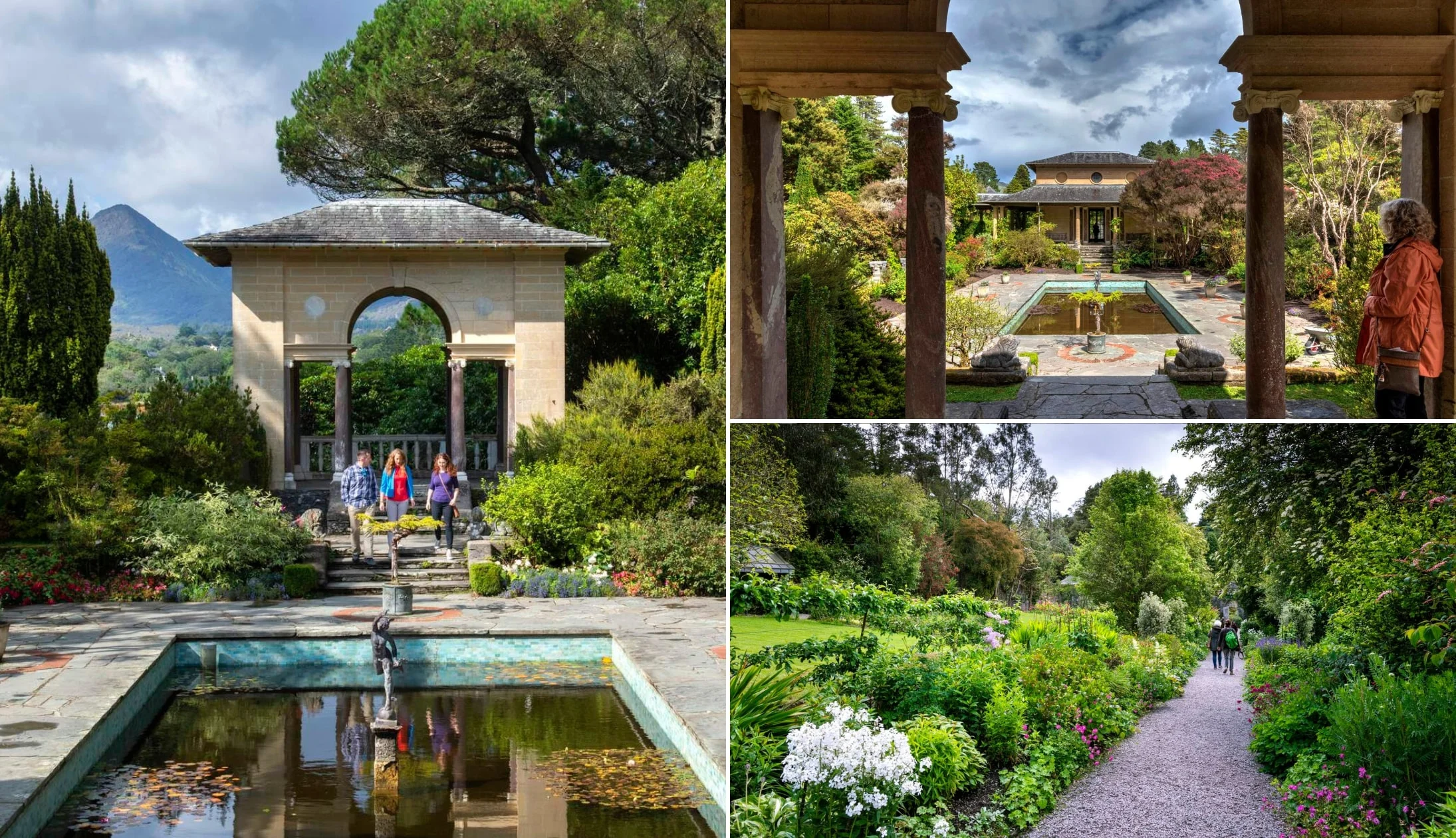
Photos by Chris Hill via Tourism Ireland
Take the ferry out to Garnish Island, a small island off the coast of Glengarriff (it only takes 15 or so minutes).
You need around 1.5 hours out here to really explore as there’s lots to see. It’s an incredible spot with beautiful gardens and a historic home which you can tour (if you’ve got time, this is quite interesting).
Make sure to walk to the round Napoleonic Tower, where (if you’re lucky) you might spot a nesting eagle!
Stop 3: Back to Glengarriff and on to Dursey Island
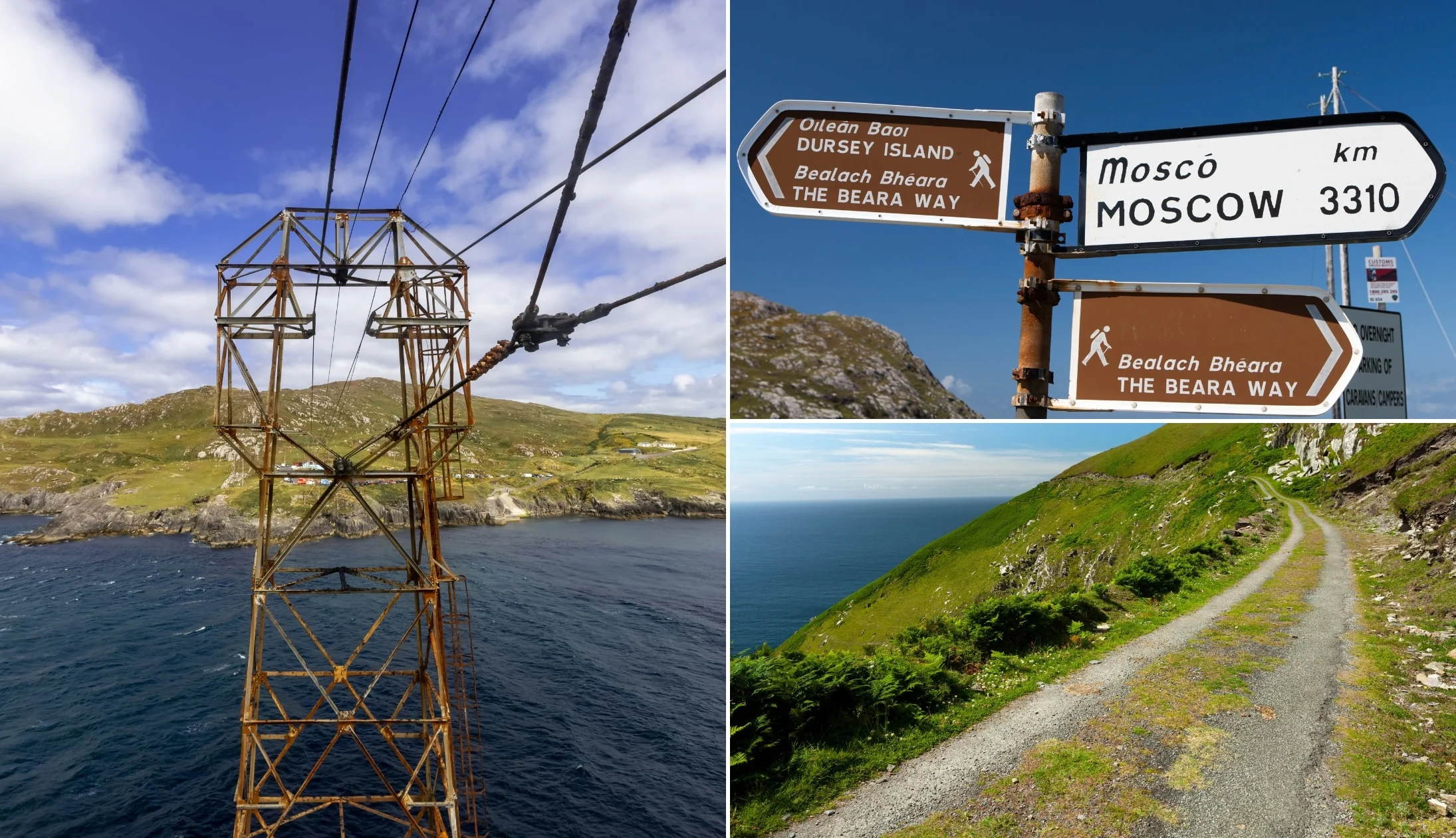
Photos via Shutterstock
The Dursey Island Cable Car is Ireland’s only cable car and one of our favourite things to do on the Beara Peninsula. It’s a 1-hour drive from Glengarriff with lots of space to park, so parking isn’t normally an issue.
The journey from the mainland to Dursey island takes around 10 minutes, with some stunning views on all fronts.
Dursey Island is a wonderful little island roughly 6.5km long and 1.5km wide. With less than 10 permanent residents, and no restaurants, pubs, or shops, it has a beautiful rural and isolated feel to it.
On the island, there is a 14km loop walk that takes most people around 4 hours to complete. We’ve done a part of this fantastic walk, and would recommend everyone to at least spend a couple of hours exploring the island, either on the loop or just looking around.
A particularly interesting point of interest is the ruins of a small church overlooking the ocean, just a short out-and-back walk from where the cable car drops you off. You can find the ruins here on Google Maps.
Stop 4: Back to the mainland and on to Allihies for lunch
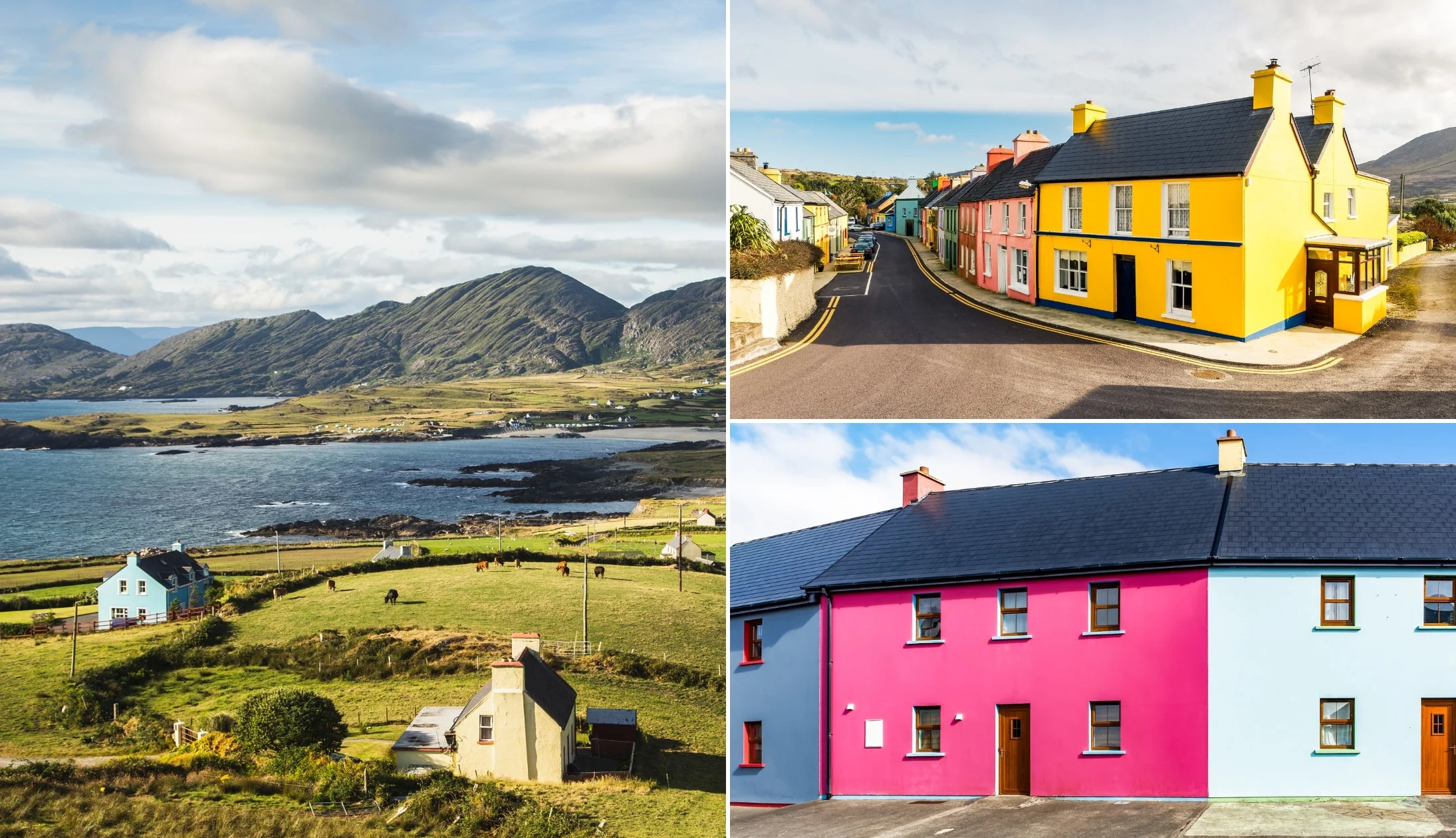
Photos via Shutterstock
Once you’re done looking around, hop back on the cable car and make your way back to Inchinaleega, where you left the car.
Allihies is a scenic 20-minute drive away and where you’ll be stopping to grab a bite to eat. It’s a beautiful spot so make sure to take your time to soak everything in!
We recommend getting lunch at O’Neils Bar and Restaurant, where you’ll find typical bar food on the first floor.
Stop 5: Glenbeg Lough
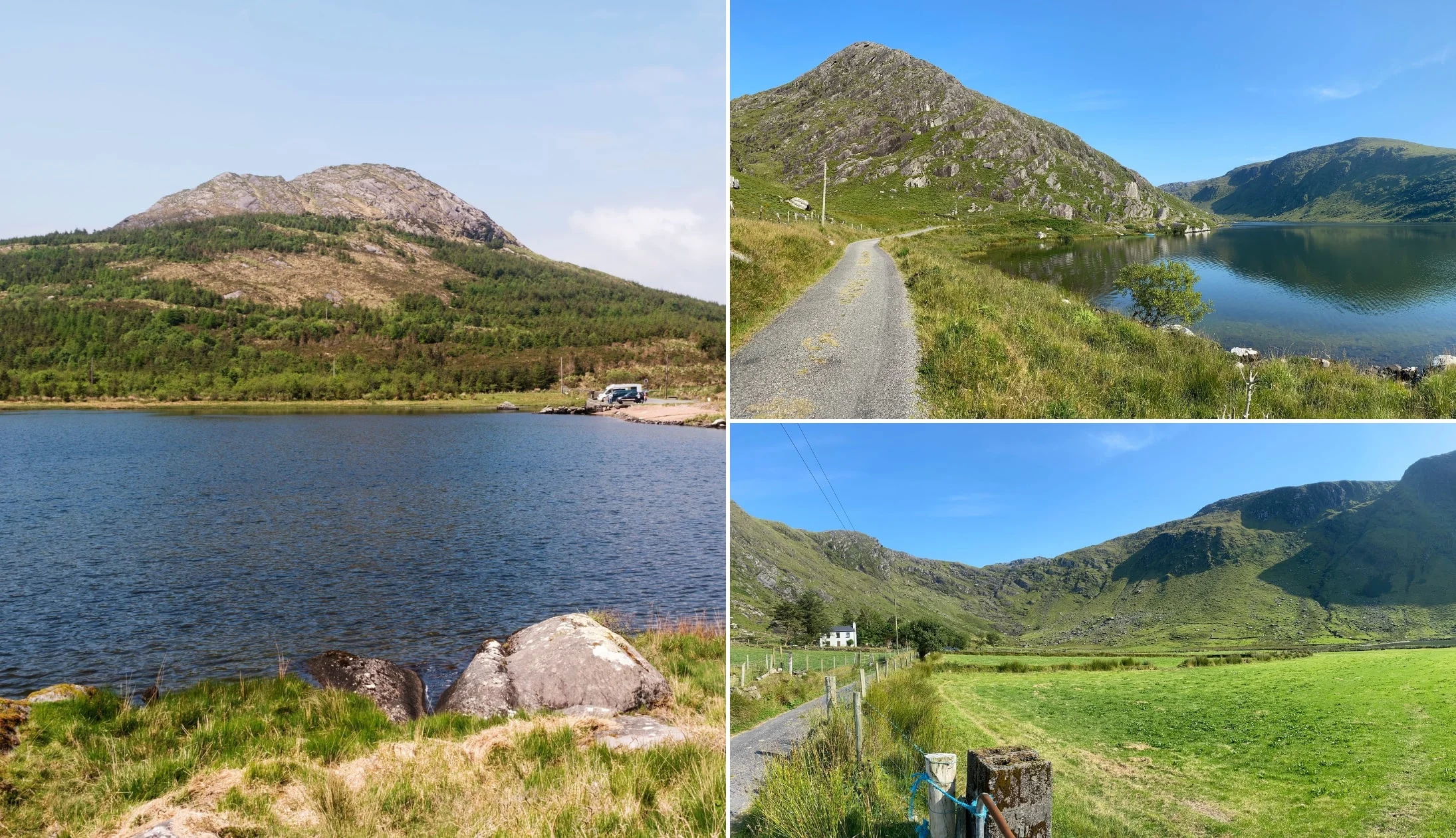
Photos via Shutterstock
After lunch, jump back in the car and drive 40 minutes to Glenbeg Lough, a serene lake hidden away amongst towering mountains.
There’s a small car park and viewing point here, so you can just rock up and take in the amazing views.
Stop 6: Kenmare
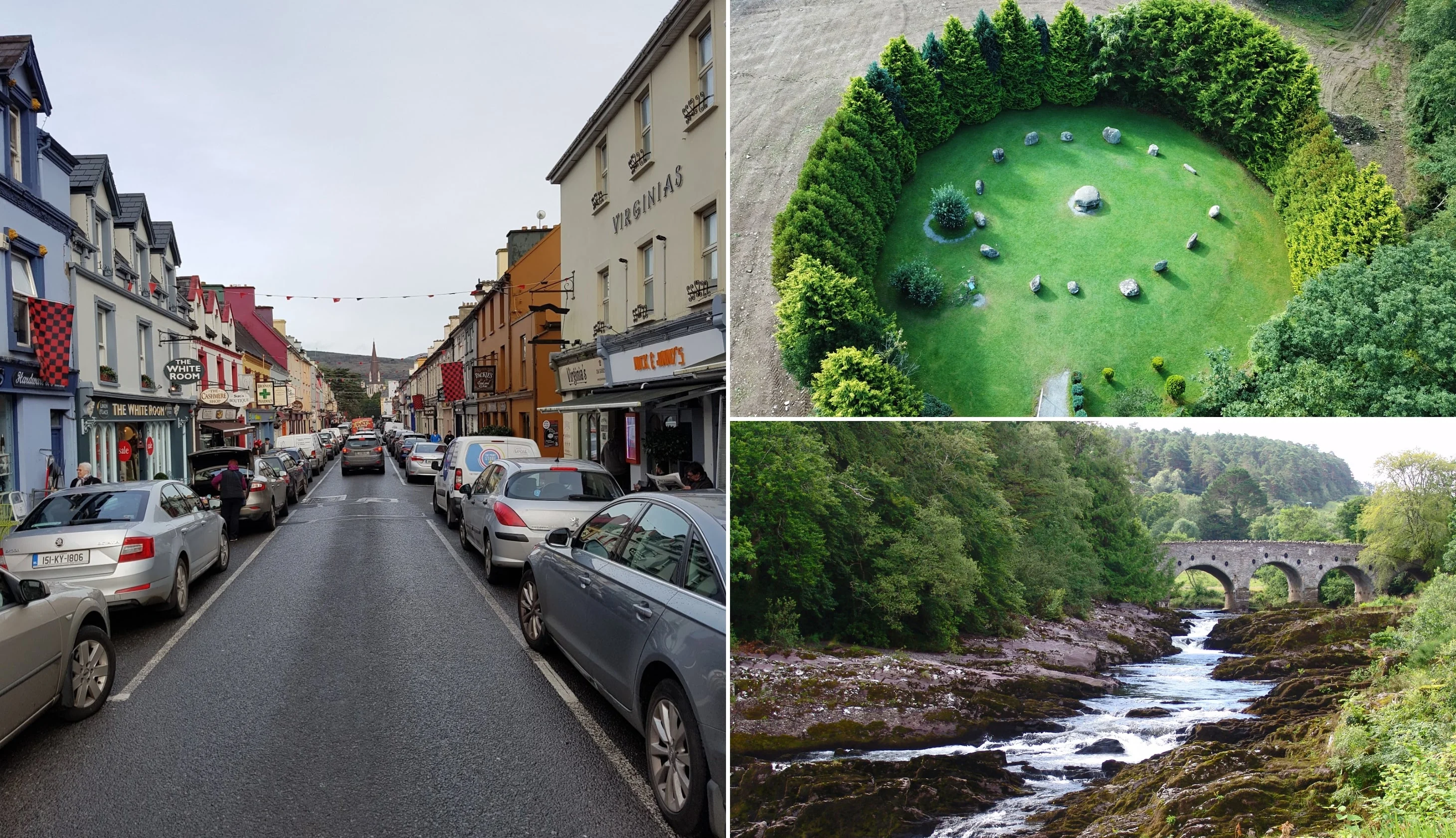
Photo left: The Irish Road Trip. Others: Shutterstock
From Glenbeg Lough it’s a 43-minute drive to Kenmare.
Check into your hotel and then get ready to hit the town for a pre-dinner tipple and a bite to eat!
Stop 7: Dinner, drinks and live music
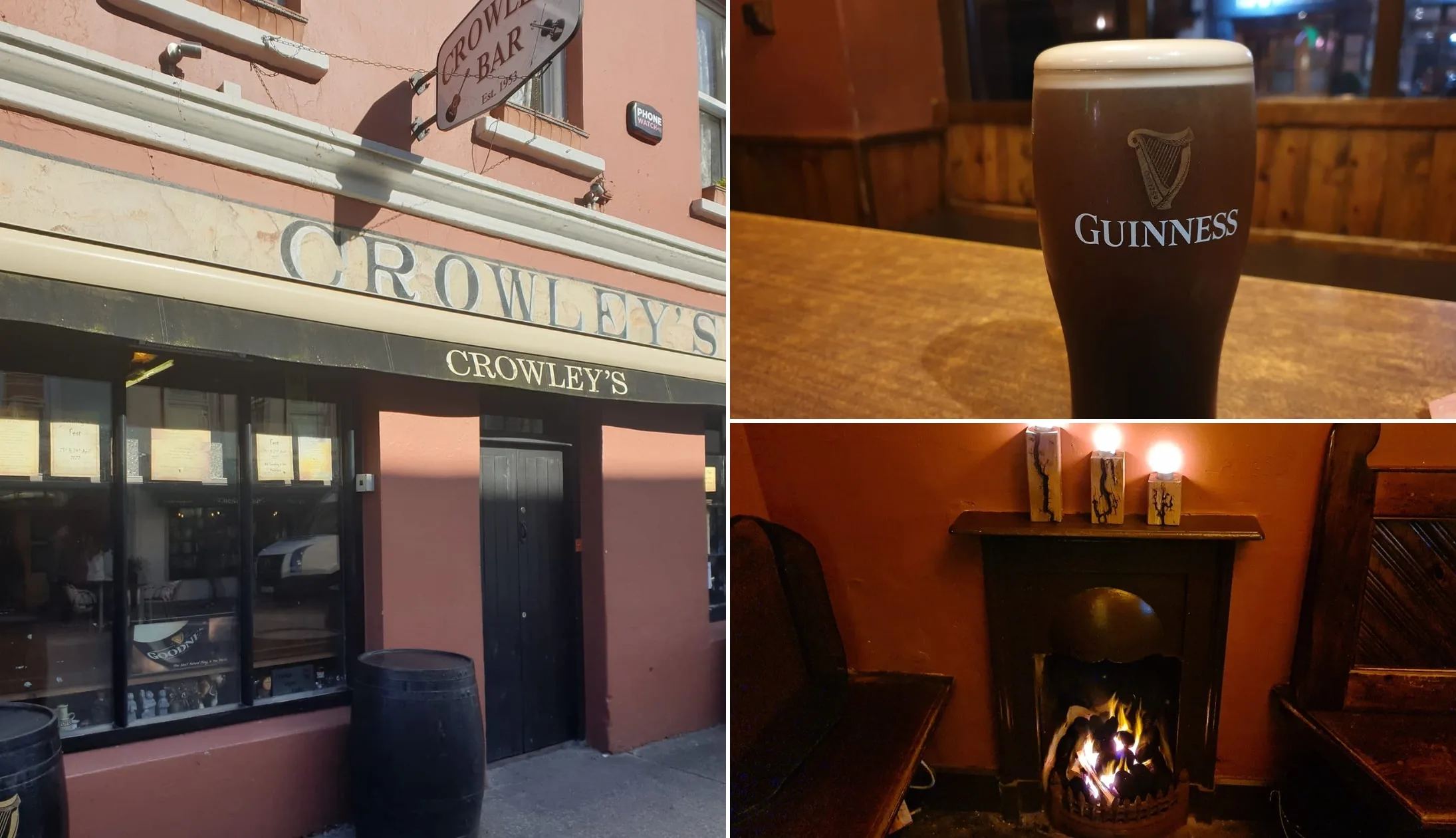
Photos via Crowley’s Bar on FB
If you’re visiting Kenmare for the first time, you’re in for a treat. There’s a handful of exceptional restaurants in Kenmare and there’s heaps of great pubs in Kenmare, too!
Our Kenmare food recommendations
For dinner, we recommend No. 35, The Lime Tree, and Mulcahy’s.
No. 35 is a family-run Irish restaurant with a 3-course set menu during dinner. The menu features dishes such as handmade sausage as a starter, free-range pork belly with Carraway cabbage and apple for the main course, and mouth-watering chocolate pudding.
The Lime Tree, which is run out of a historic building that dates back to 1832, is another place to go if you’re craving Irish food. As is Mulcahy’s, although it has more of a tapas vibe with small and large plates.
Our Kenmare pub recommendations
For after-dinner drinks, head to PF McCarthys, Crowley’s Bar, or Roughty Bar.
Stick around Crowley’s Bar for music, or check out The Coachmans Townhouse.
Day 6: The Ring of Kerry
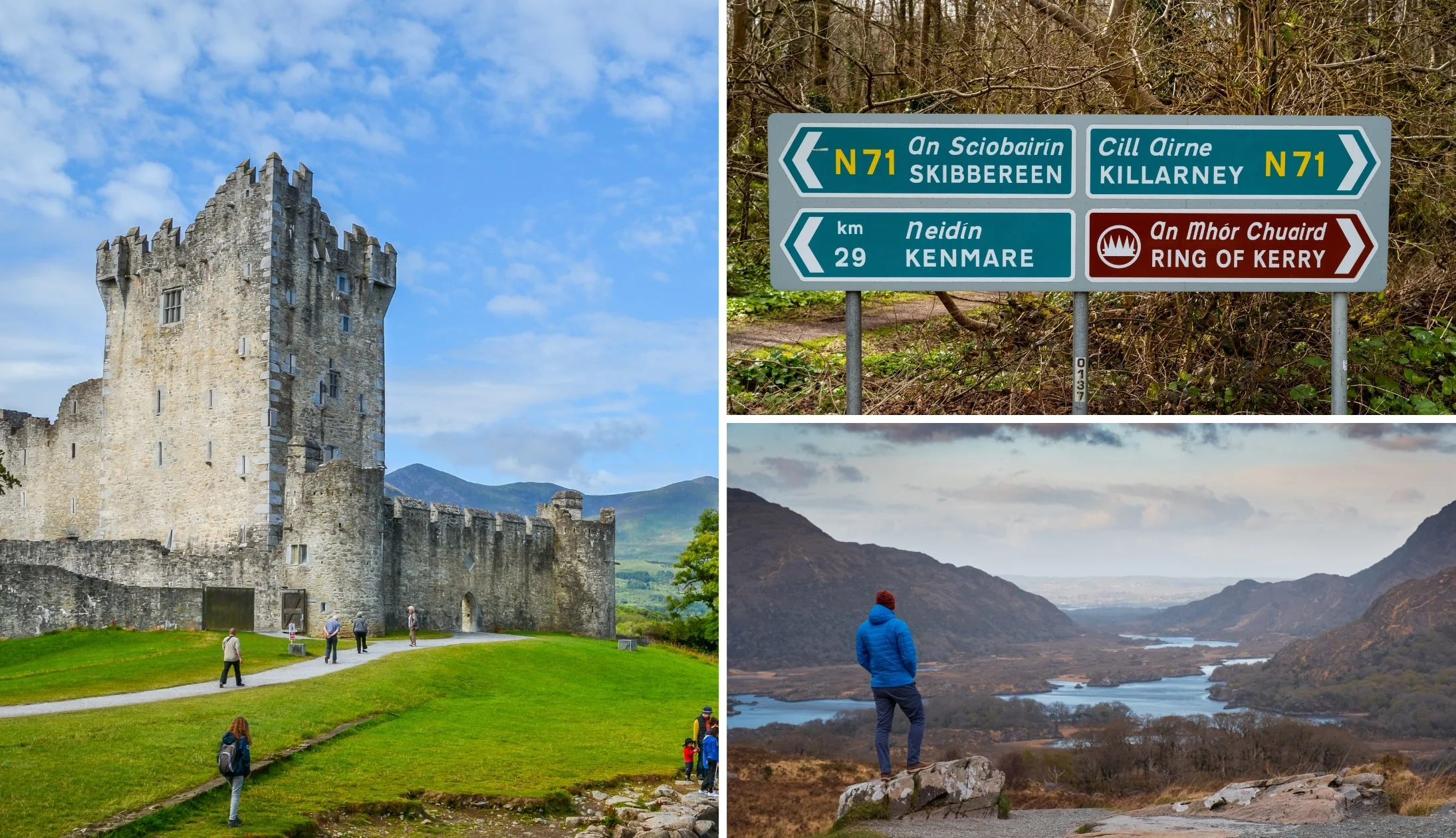
Photos via Shutterstock
Today we are setting off on the Ring of Kerry. You are going to be exploring the ring of Kerry clockwise, stopping at some of our favourite locations that most tour buses just skip by.
Be prepared for breathtaking views, stunning landscapes and the type of scenery that imprints itself upon your mind forever.
We’d strongly recommend reading this Ring of Kerry guide (with a handy Google Map) before you set off as it’ll tell you everything you need to know.
Start the day by grabbing breakfast at your accommodation, or if you feel like eating breakfast out, we normally hit up Poffs or Cafe de Mocha.
Stop 1: Derrynane Beach
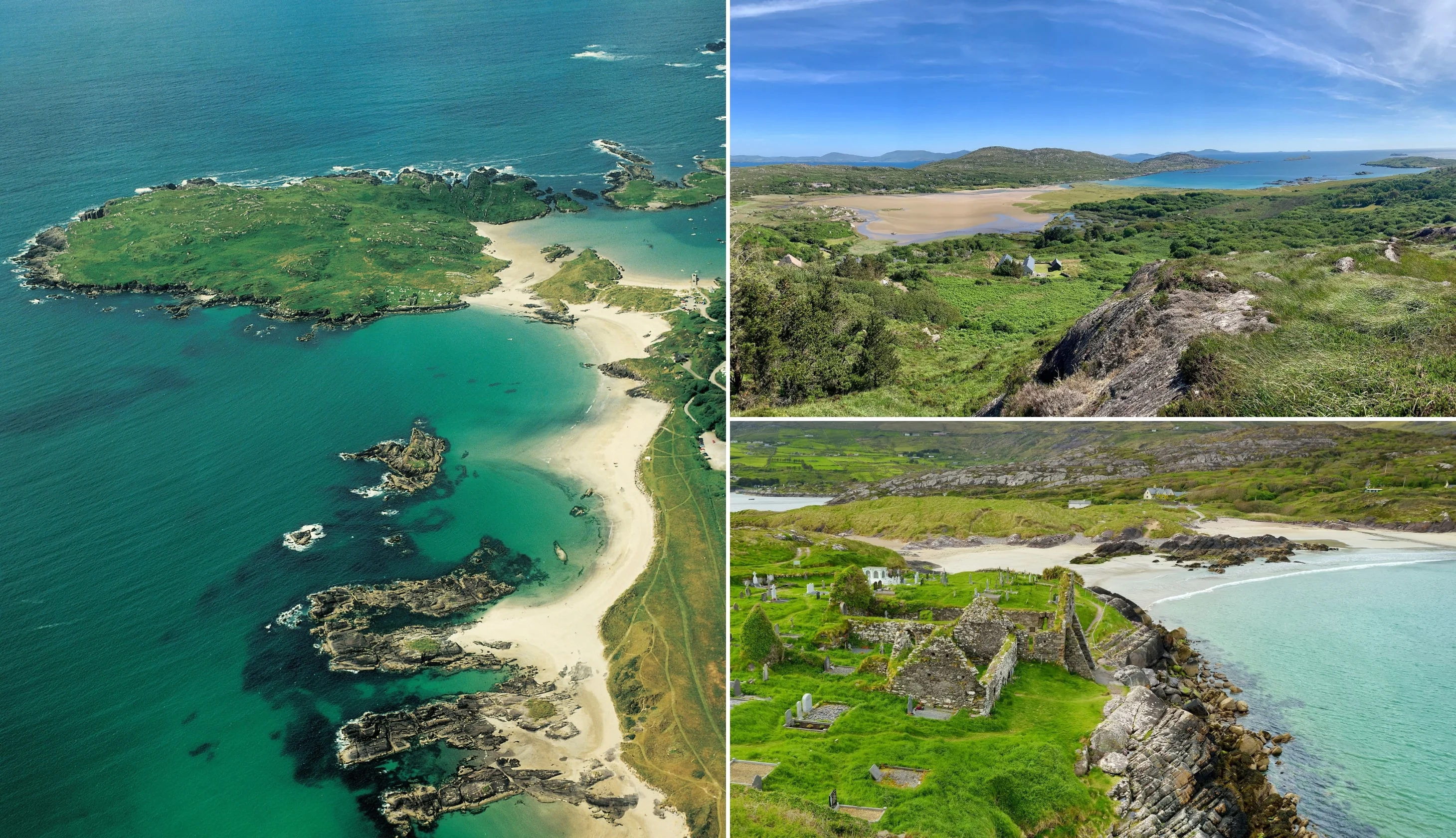
Photos via Shutterstock
Enjoy the incredibly scenic hour drive from Kenmare to Derrynane Beach, a lovely white-sand beach backed by soft sand dunes.
There are wonderful views on all sides, with a nature reserve at the back, Derrynane Abbey to the right, and rocky outcrops to the left.
Although the water might look inviting, there are dangerous currents, and a small section is known locally as “Danger Beach”.
Stop 2: Waterville
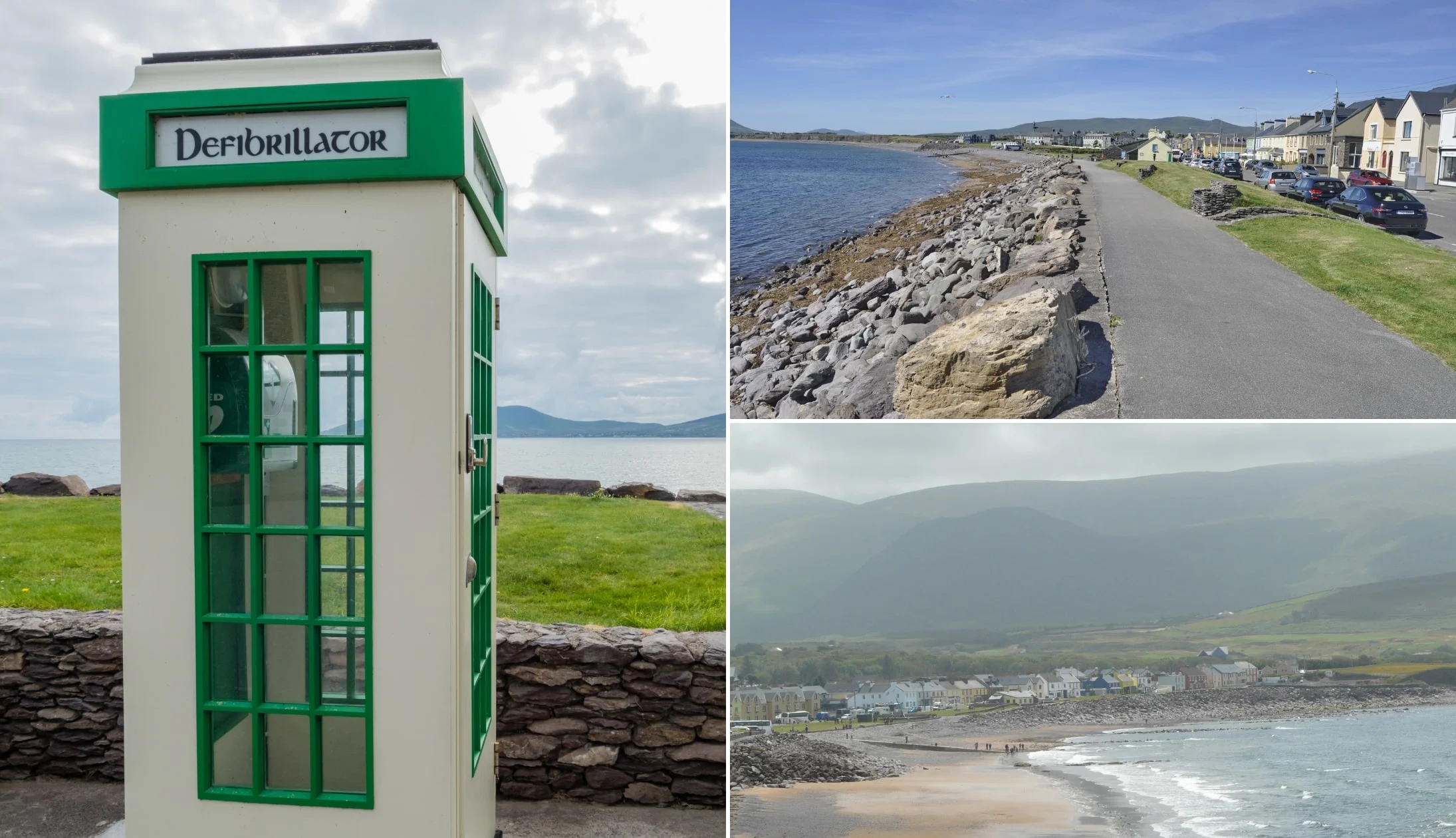
Photos via Shutterstock
Drive 20 minutes to reach Waterville, a seaside resort town known as Charlie Chaplin’s favourite village in Ireland!
It’s a great place for a wander, just don’t forget to pass by the Charlie Chaplin statue in front of Waterville Beach.
Stop 3: Ballinskelligs
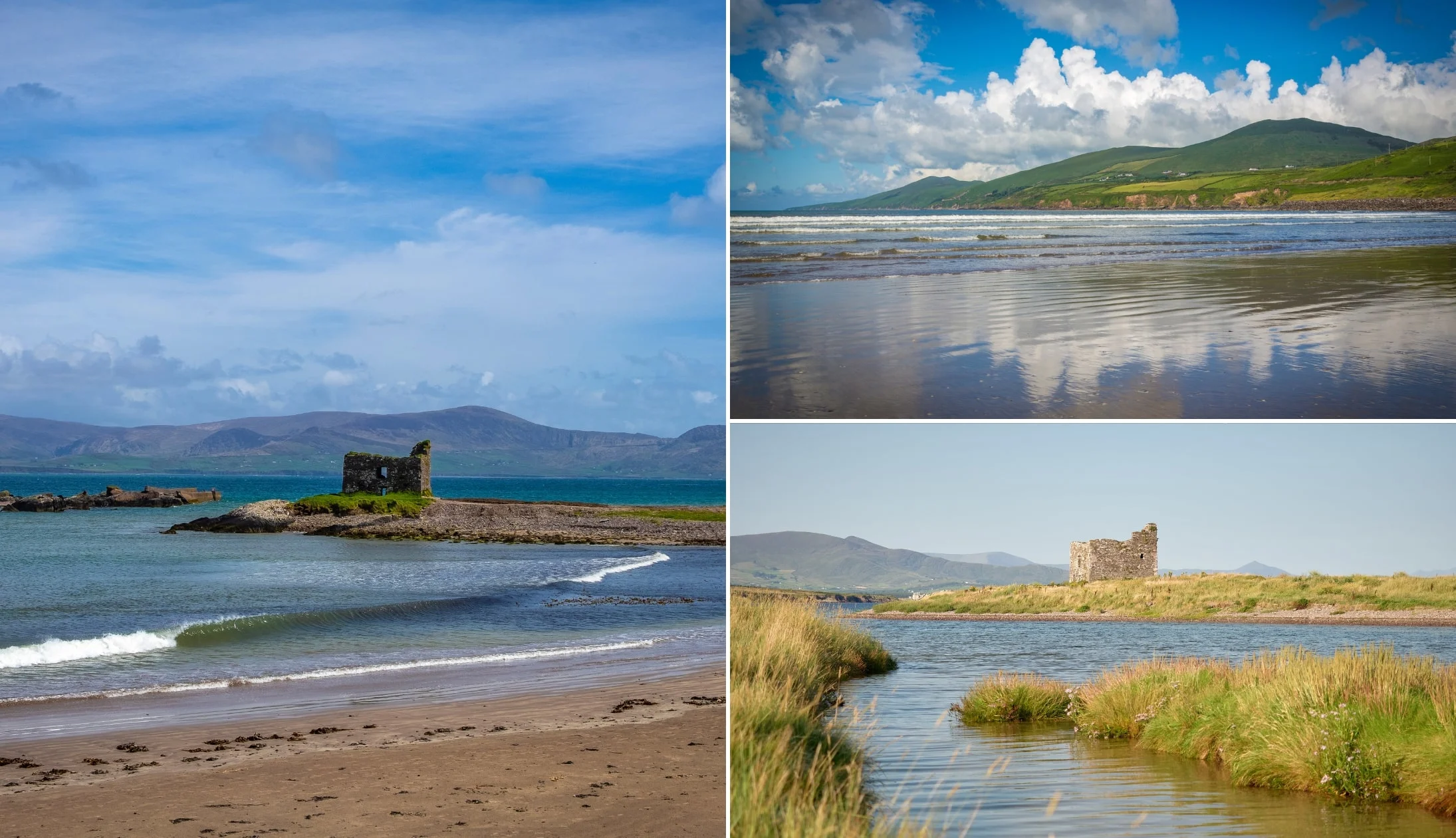
Photos via Shutterstock
Ballinskelligs is a 15-minute drive from Waterville, and this section of the route takes you onto what’s known as the Skellig Ring.
The village’s history dates all the way back to the 5th or 6th century, to the monks who lived on the almost uninhabitable Skellig Michael nearby.
There’s lots to do in the area, from visiting the beautiful sandy beaches and checking out the Ballinskelligs Abbey ruins to exploring the Ballingskelligs Castle ruins a short walk away along the shore.
Stop 4: Coomanaspig Pass
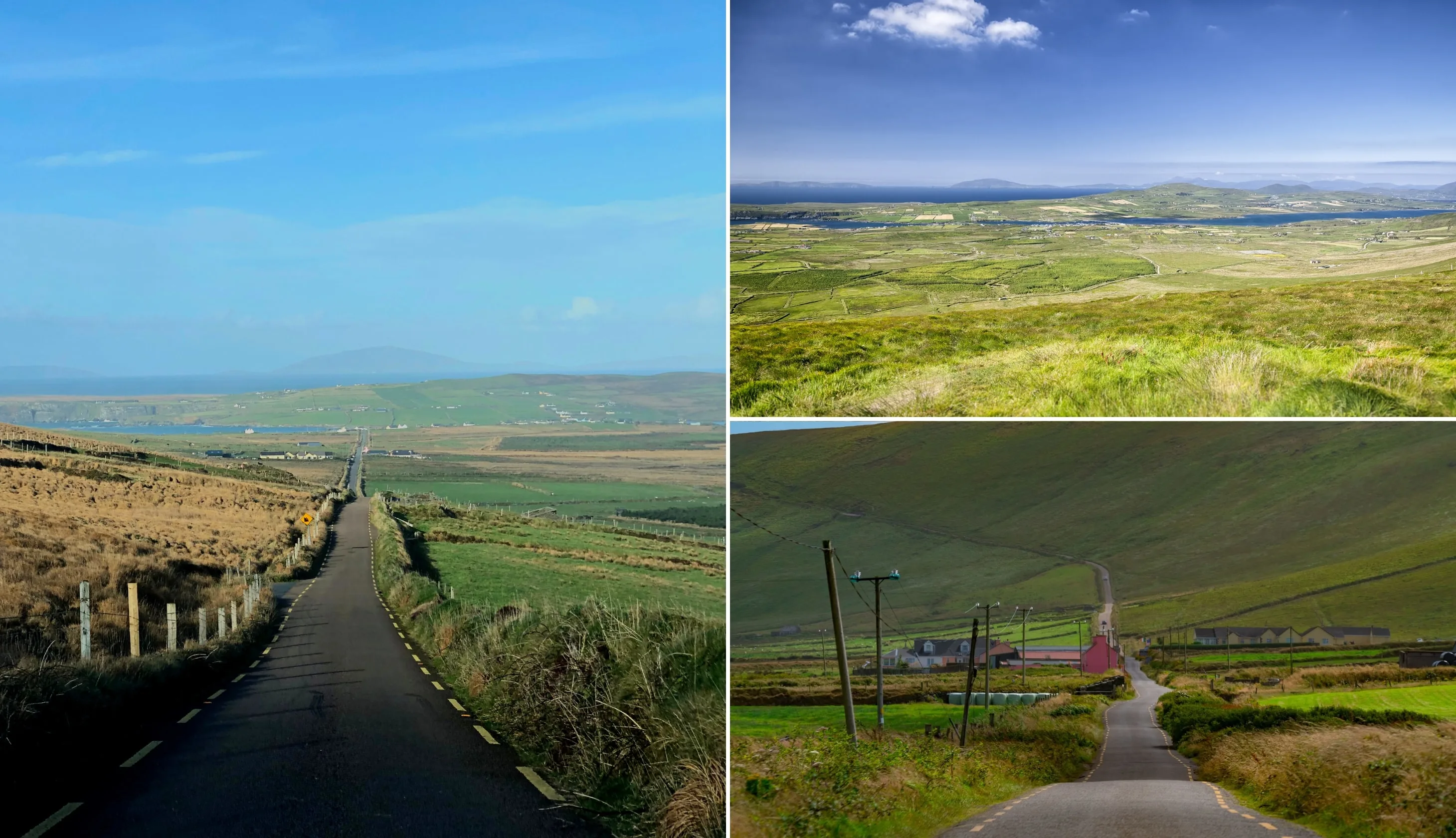
Photos via Shutterstock
The Coomanaspig Pass is one of the highest points in Ireland that can be accessed by car. From the top, the views are spectacular, and the drive up to the pass is equally as stunning.
Approach the pass via the R565 and Skellig Ring. The drive takes just under 30 minutes, with plenty of places to pull over and take in the view.
Stop 5: The Kerry Cliffs
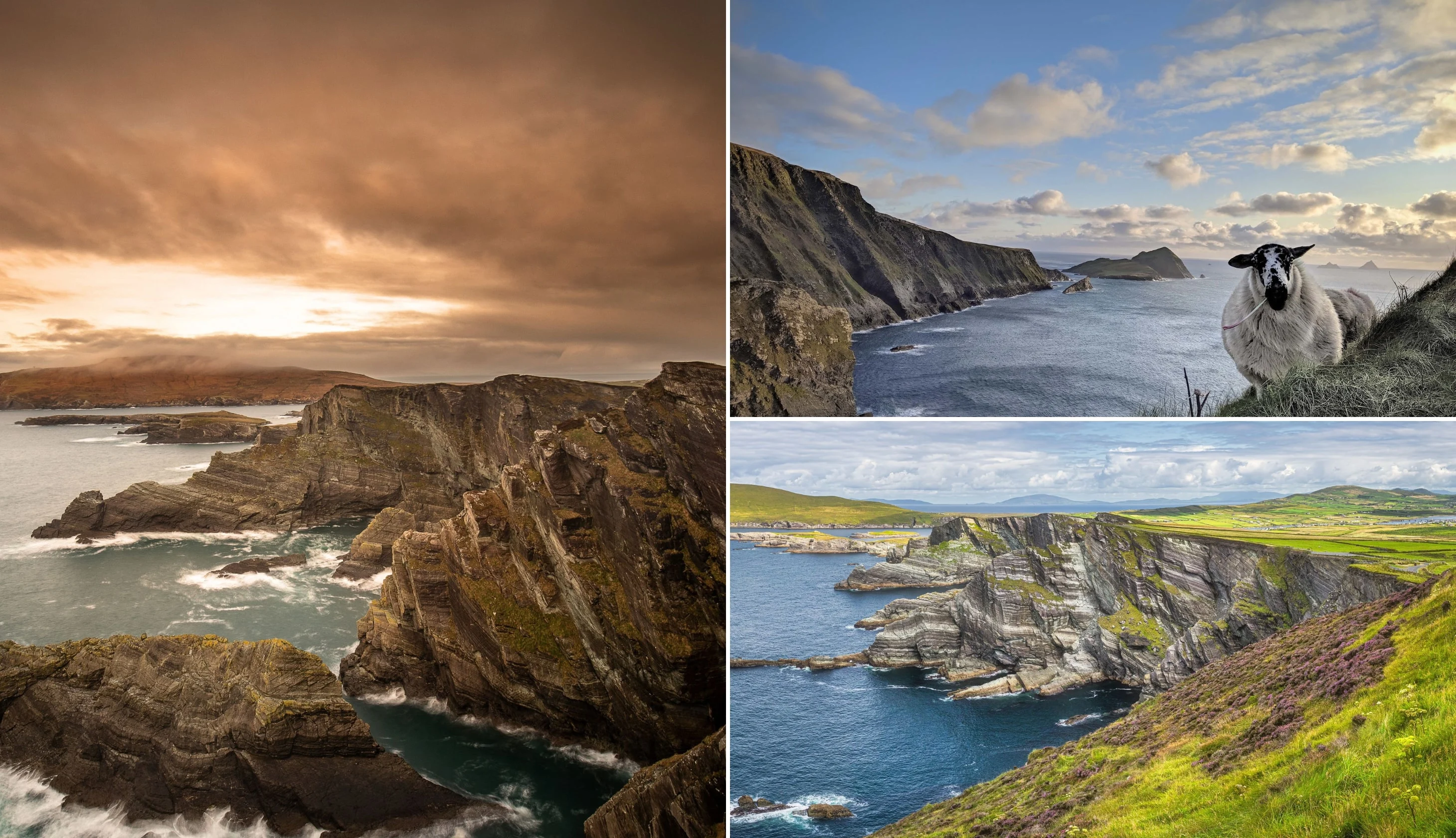
Photos via Shutterstock
Continue onto the Kerry Cliffs less than 5 minutes down the road. The cliffs are absolutely magnificent, rising 300 metres above the Atlantic Ocean.
The views from the Kerry Cliffs are wonderful, and on clear days you can see The Skelligs to the west as well as Puffin Island!
Admission to the cliffs cost €4 and there are plenty of places to park. The cliffs are open daily from 9am to 7:30pm.
Stop 6: Lunch in Portmagee
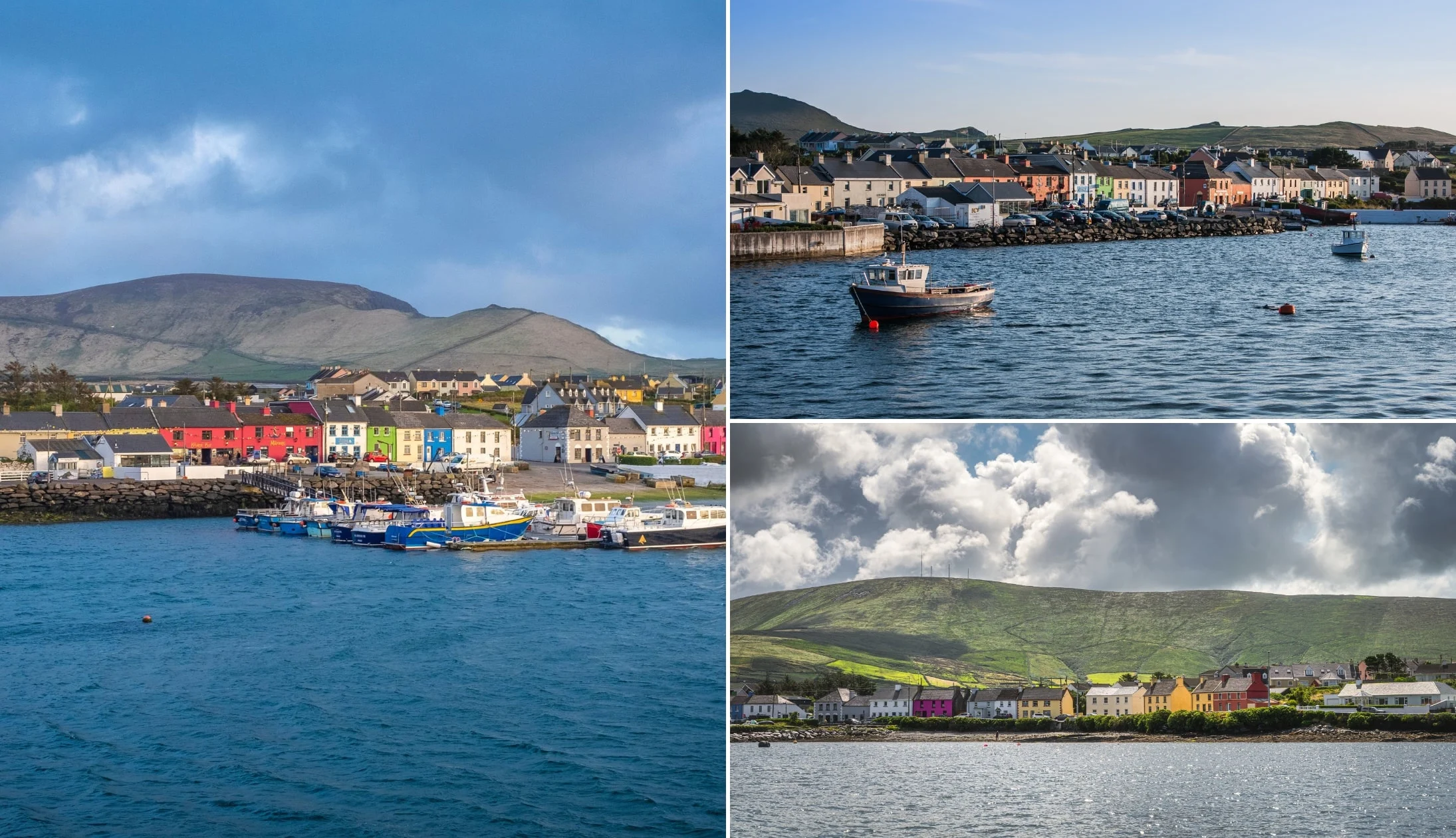
Photos via Shutterstock
It’s time for lunch, and we suggest heading to the Smuggler’s Cafe or The Fisherman’s Bar in nearby Portmagee.
Both restaurants serve delicious seafood, so take your pick! The village is absolutely tiny and it comes alive during the summer months.
Stop 7: Valentia by way of Portmagee
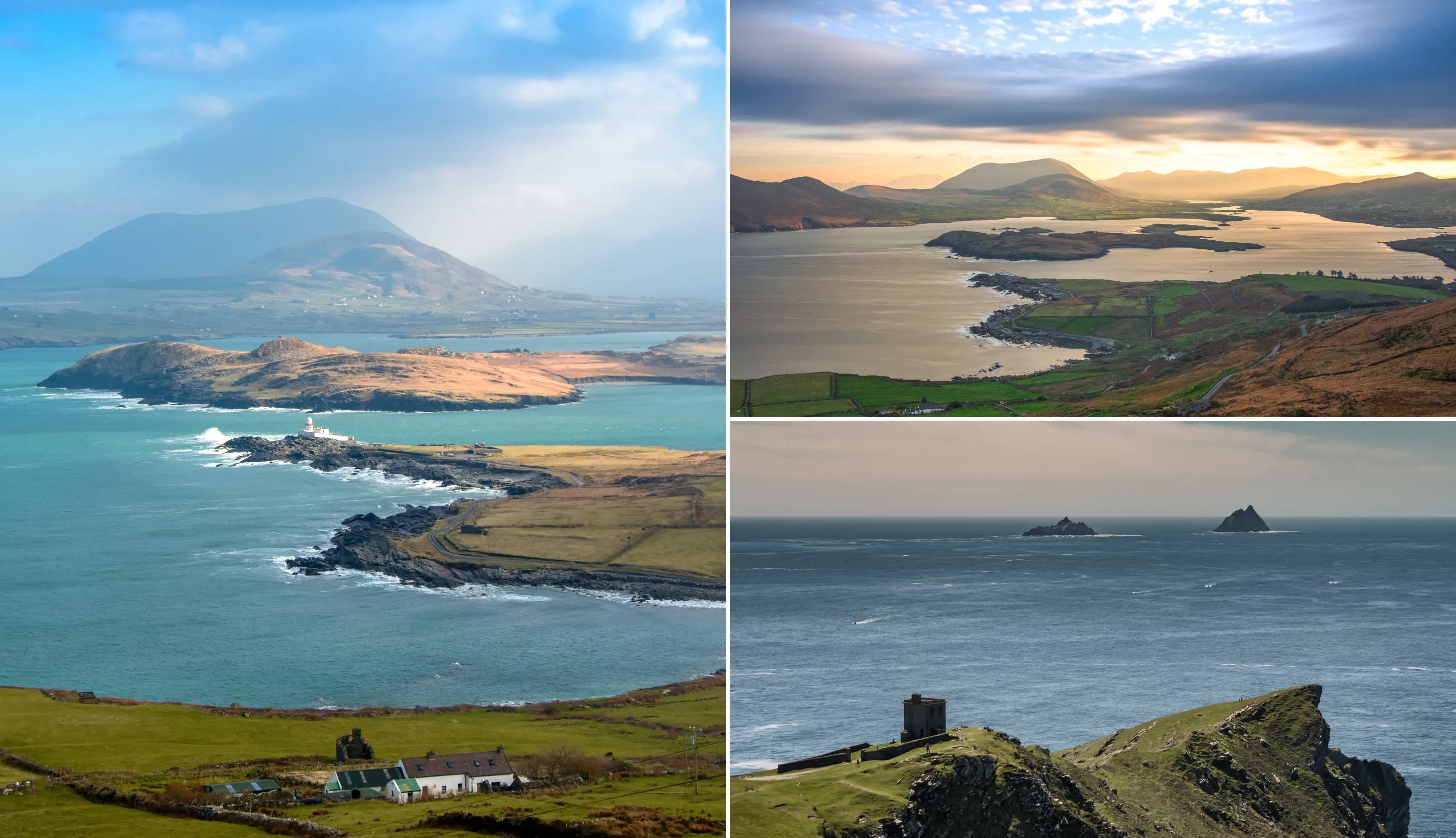
Photos via Shutterstock
It’s time to head to Valentia Island, one of Ireland’s most westerly points. From the Kerry Cliffs, it’s a short drive onto the island via the bridge in Portmagee.
You’ll be using this route to get onto the island, but please note that to get off the island, you’ll be taking the ferry in Knight’s Town (more details below).
There’s lots to do in Valentia, but some of our favourite things are the Valentia Island Lighthouse, the Slate Quarry, and the stunning Geokaun Mountain and Fogher Cliffs.
The Slate Quarry is the most westerly quarry in Europe and the oldest quarry in production in Ireland. Slate from the quarry can be found in Westminster Abbey, the Paris Opera House, and the Houses of Parliament.
Geokaun Mountain is the highest point on the island, standing 270 metres tall. The Fogher Cliffs are on the northern face of Geokaun, with incredible views of the Atlantic, distant mountains, and several islands.
There are three car parks/viewing points along the way. The last one here is the closest to the summit. The landowner charges a small entry fee.
Once you’re finished exploring Valentia, it’s time to take the ferry from Knight’s Town off the island. The ferry runs between 7:45am and 9:25pm Monday – Saturday and 9am to 9:25pm on Sunday. Check the latest timetable on their Facebook Page.
Stop 8: Cahersiveen
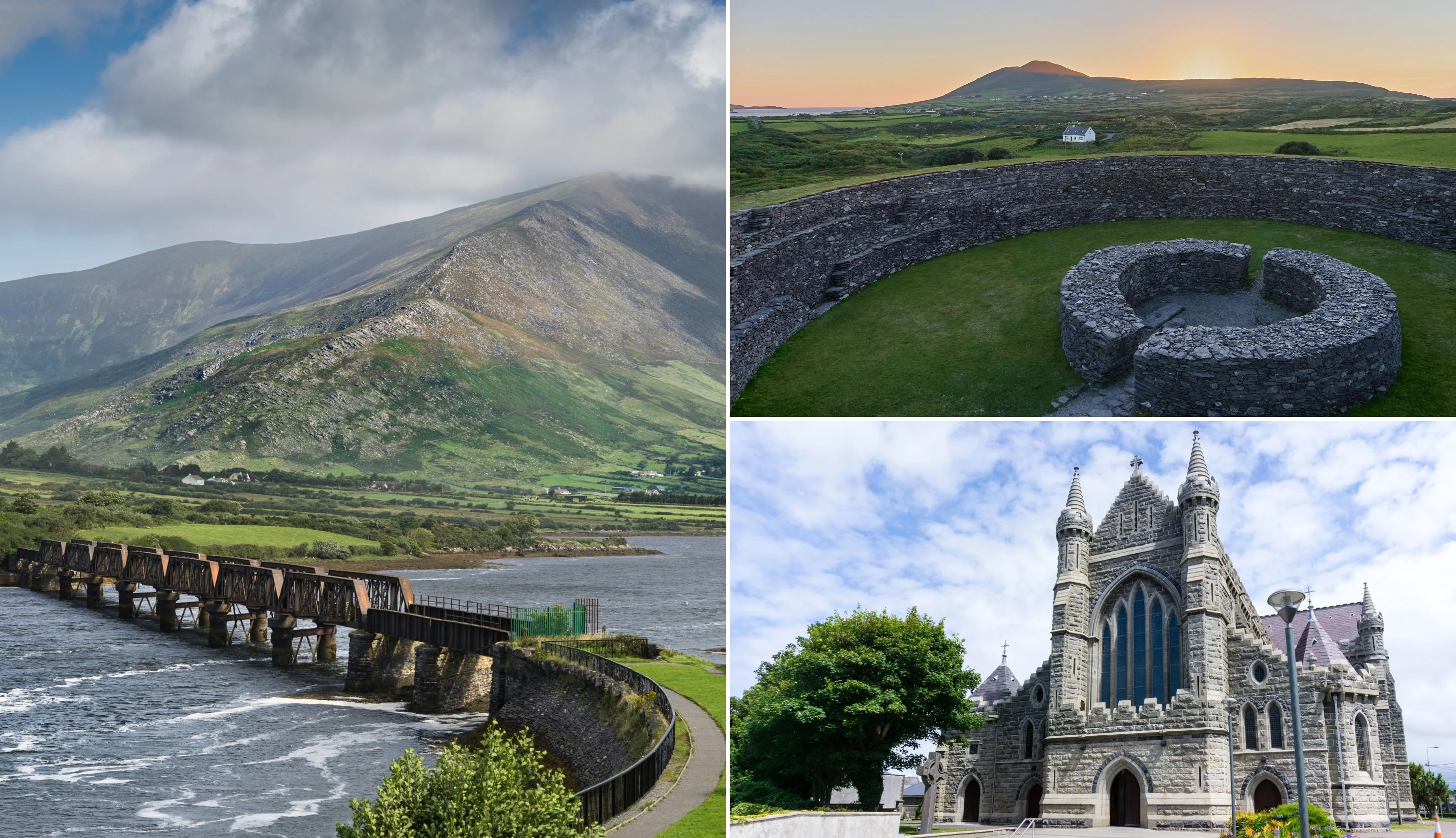
Photos via Shutterstock
From the pier in Reenard Point, it’s a 7-minute drive to Cahersiveen. Some cool places to check out in the area are the Old Barracks, which has several exhibitions about the history of the local area, including The Life and Times of Daniel O’Connell, and the Cahersiveen ring forts, which are roughly 3km from town.
Park here to explore the Leacanabuaile Ring Fort and the Cahergall Stone Fort on foot.
Stop 9: Rossbeigh
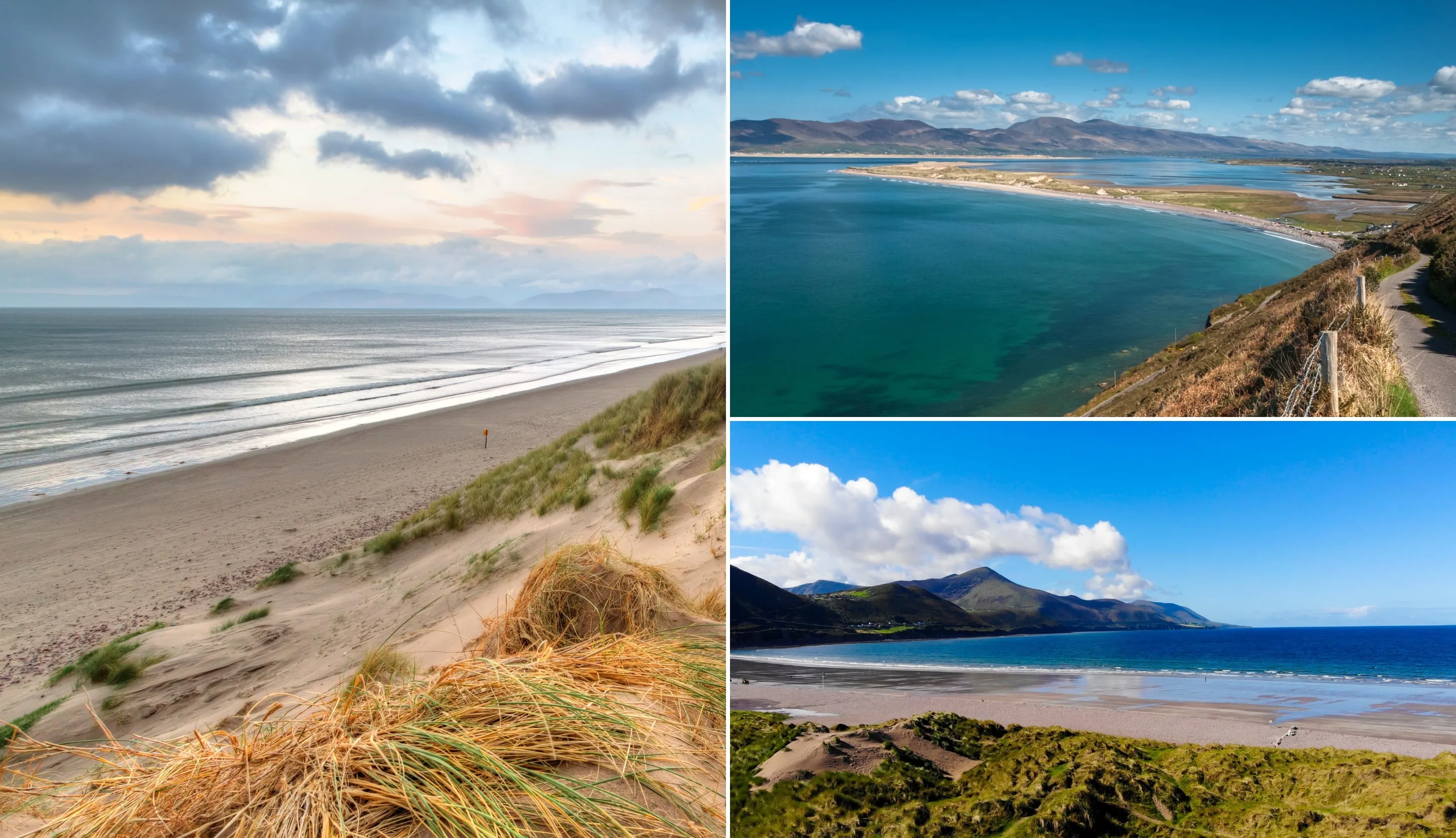
Photos via Shutterstock
From Cahersiveen, Rossbeigh Beach is a 30-minute drive. Rossbeigh Beach is a beautiful 6km long sandy beach with great views over Dingle Bay.
It’s a Blue Flag beach and one of the most popular in the area! We love it for a summer swim or a nice scenic walk in the winter.
Stop 10: Killarney Town
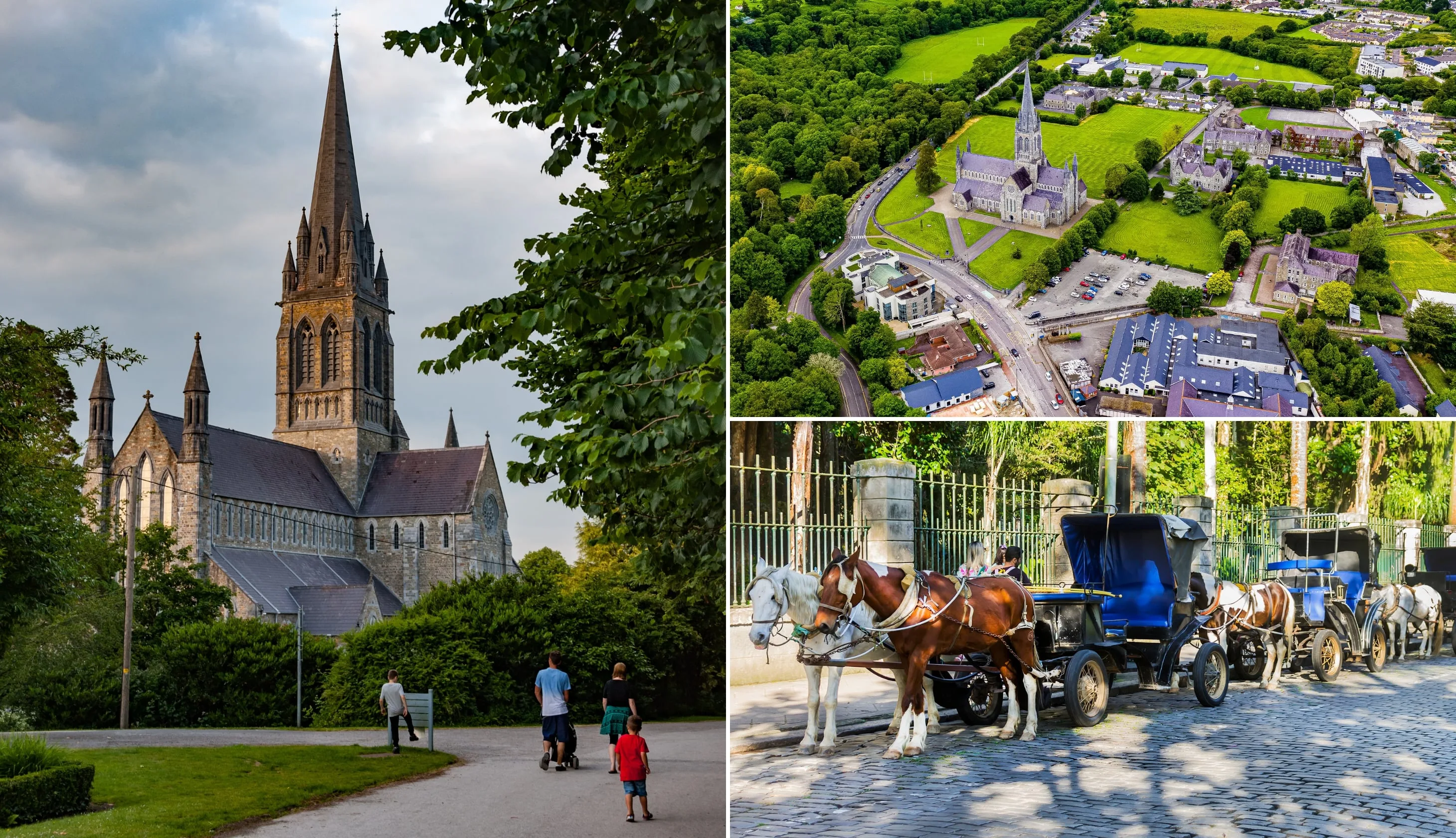
Photos via Shutterstock
You’re a good 45-minute drive from the next stop of the day, Killarney Town – arguably the busiest spot along the route.
If you feel like stretching your legs a bit, consider grabbing a coffee to go from Bean in Killarney and then going for a little wander through this lovely town.
Stop 11: Ross Castle
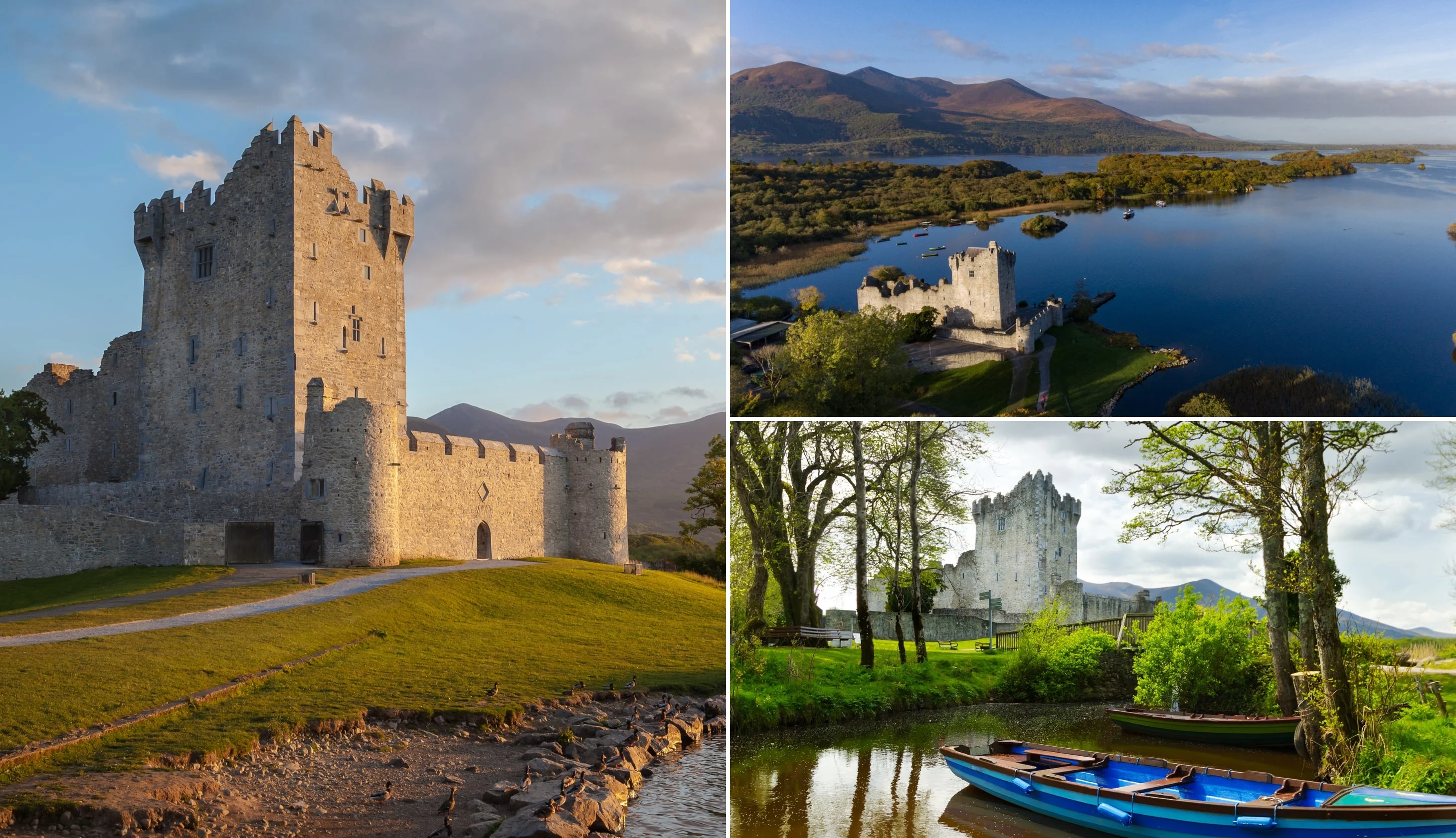
Photos via Shutterstock
From Killarney, it’s a 7-minute drive to Ross Castle in the glorious Killarney National Park. The castle was built by O’Donoghue Mór, an Irish Chieftain in the 15th century.
The castle is in great condition and sits on the shores of Lough Lenane. It’s steeped in mystery, and according to local legend, O’Donoghue still sleeps under the lake’s waters, rising every seven years on the first morning of May.
You can either visit the grounds and admire the castle from the outside or buy a ticket and join a guided tour. During the tour, you’ll be taken through the various rooms and given information about the castle’s past inhabitants. The tour lasts around 45 minutes.
Stop 12: Torc Waterfall
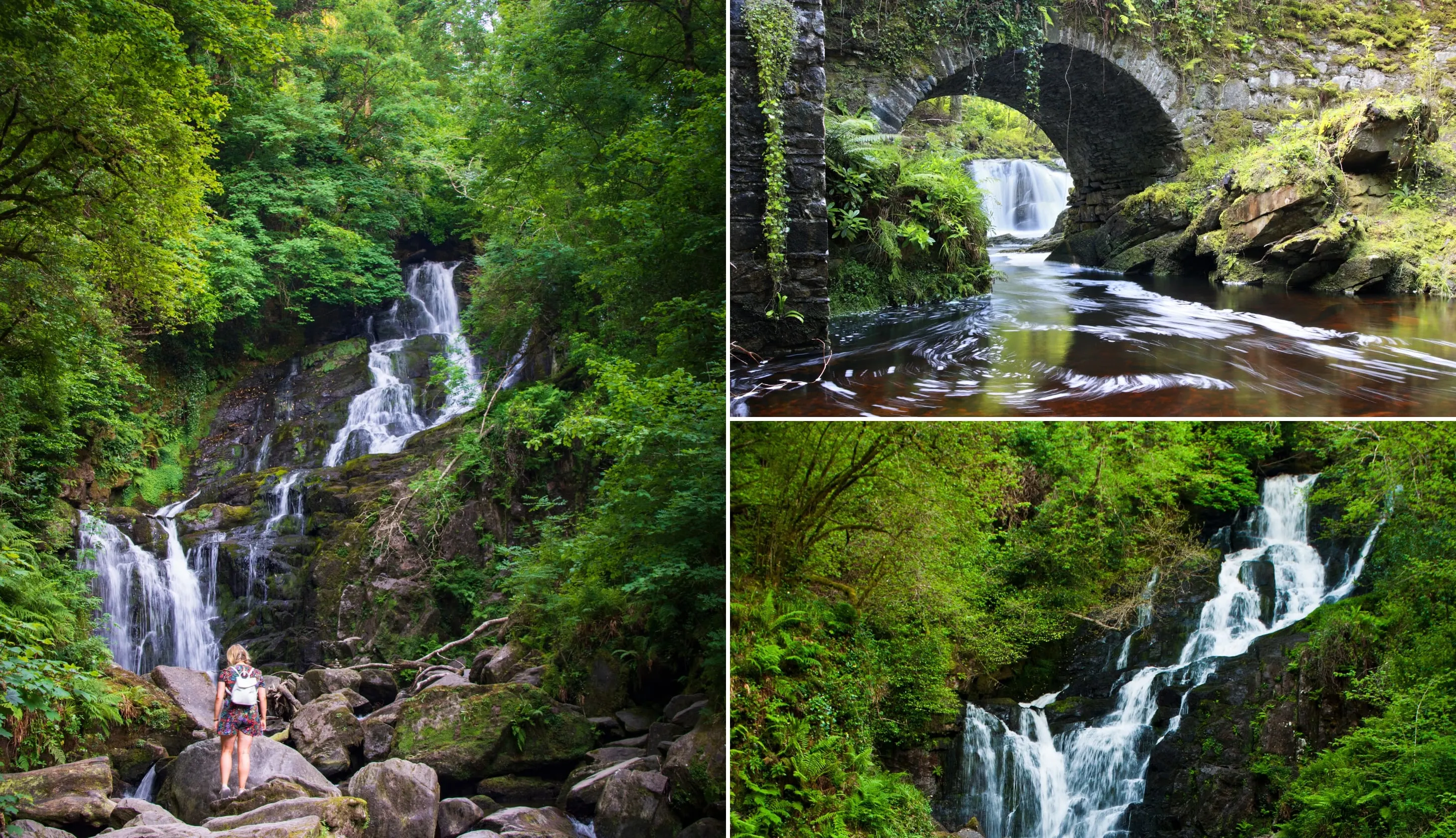
Photos via Shutterstock
From Ross Castle, drive 15 minutes to the enchanting Torc Waterfall. According to local folklore, the waterfall was home to a man who was cursed by the devil to turn into a boar each night.
When his secret was revealed by a farmer, the man burst into flames and retreated to the Devil’s Punchbowl.
There are two car parks close by, but in our experience, the closest car park, Killarney Hiking Parking Lot (here) is often full. So, you may need to park in the Torc Waterfall Lower Parking on the N71 (here).
From the Torc Waterfall Lower Parking, it’s roughly 1km to the waterfall along a paved cycle path that passes by some gorgeous scenery.
From Killarney Hiking Parking Lot, there’s a small path that cuts through the forest and joins up with the cycle path roughly 250 metres from the waterfall.
Stop 13: Ladies View
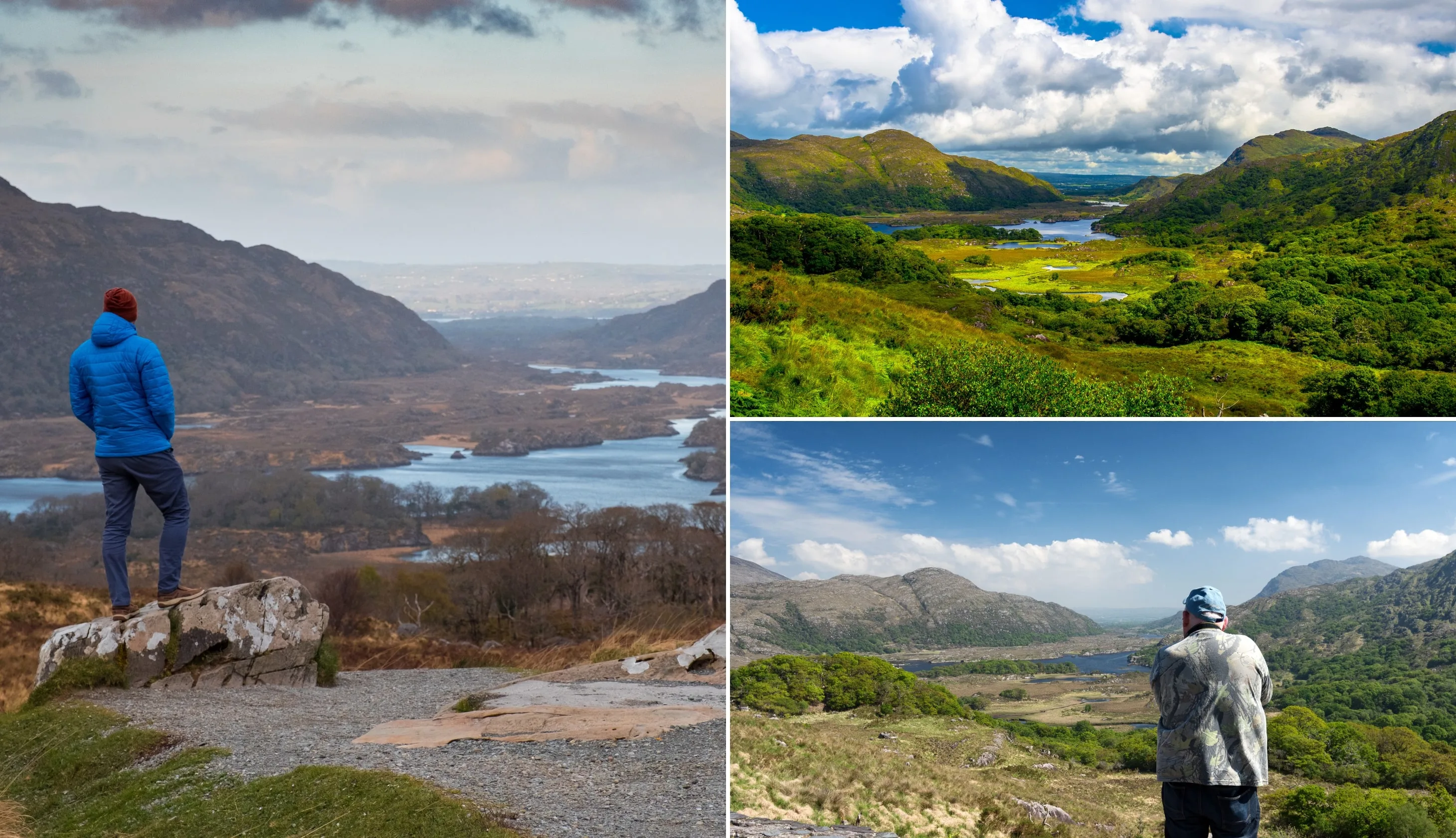
Photos via Shutterstock
From Torc Waterfall, it’s roughly a 15-minute drive to Ladies View. The viewpoint here is a popular stopping point on the Ring of Kerry road, with roadside parking directly facing the view (see parking here on Google Maps).
The viewpoint was named in honour of Queen Victoria’s ladies-in-waiting who were in awe when they visited in 1861 during a royal visit. The view looks out over the Upper Lake with mountains rising up on either side.
Stop 14: Moll’s Gap
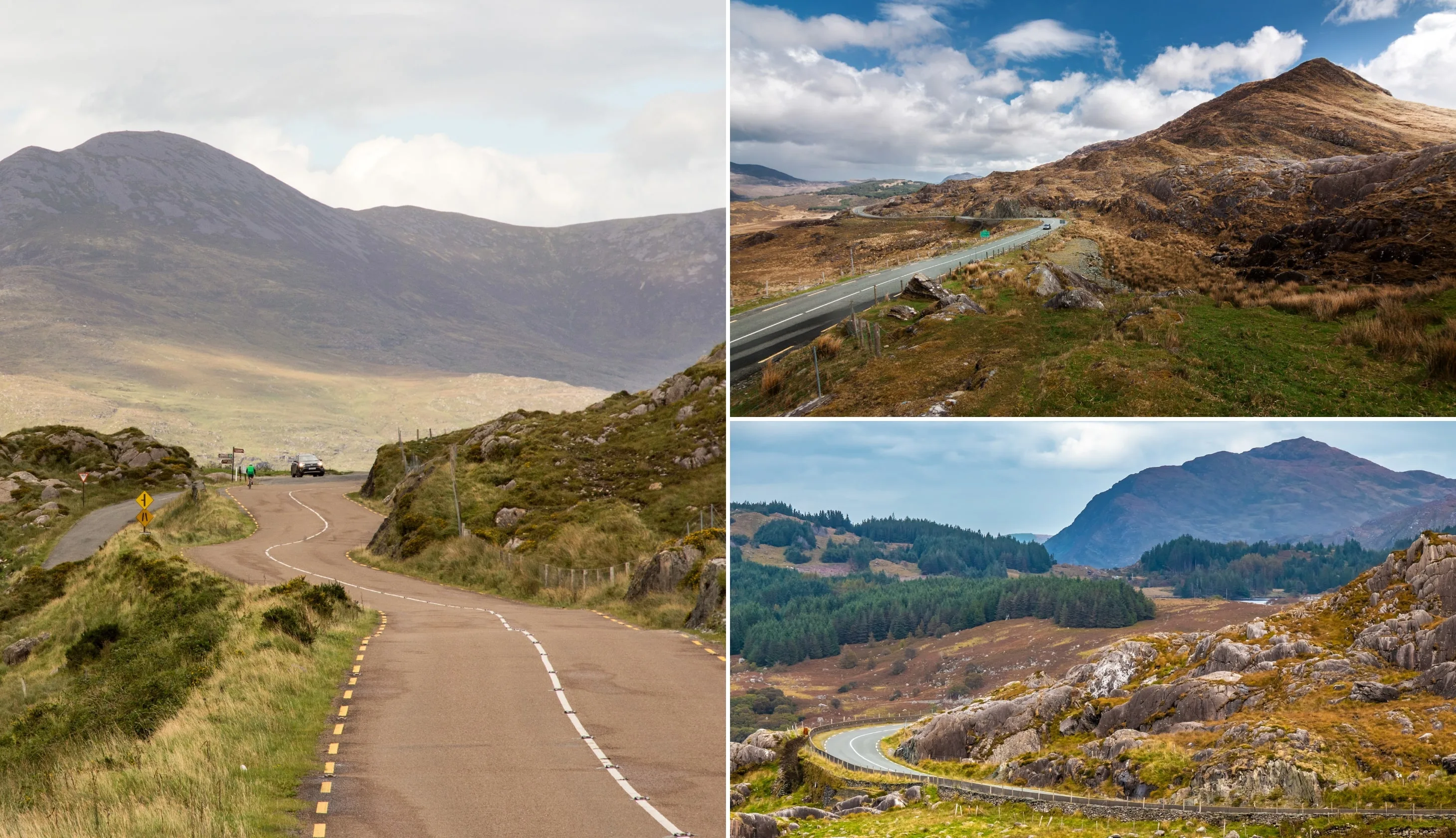
Photos via Shutterstock
Drive for around 9 minutes along the N71 to another popular spot on the Ring of Kerry road, Moll’s Gap! There’s plenty of parking at Molls Gap, but take care as the parking area is on a sharp bend.
Molls Gap is also known as Céim an Daimh in Irish or ‘Gap of the Ox’, but it gets its nickname after Moll Kissane, owner of a local shebeen (unlicensed pub).
The pub was established in the 1820s when the road was being built, and Moll’s homemade poitin (a strong liquor sometimes made from potatoes) was a favourite with the construction workers!
Stop 15: Kenmare for the night

Photos via Crowley’s Bar on FB
Continue on the N71 for 12 minutes to get back to Kenmare.
Our Kenmare food recommendations
For dinner, we recommend No. 35, The Lime Tree, and Mulcahy’s.
No. 35 is a family-run Irish restaurant with a 3-course set menu during dinner. The menu features dishes such as handmade sausage as a starter, free-range pork belly with Carraway cabbage and apple for the main course, and mouth-watering chocolate pudding.
The Lime Tree, which is run out of a historic building that dates back to 1832, is another place to go if you’re craving Irish food. As is Mulcahy’s, although it has more of a tapas vibe with small and large plates.
Our Kenmare pub recommendations
For after-dinner drinks head to PF McCarthys, Crowley’s Bar, or Roughty Bar.
Stick around Crowley’s Bar for music or check out The Coachmans Townhouse.
Day 7: Dingle Peninsula
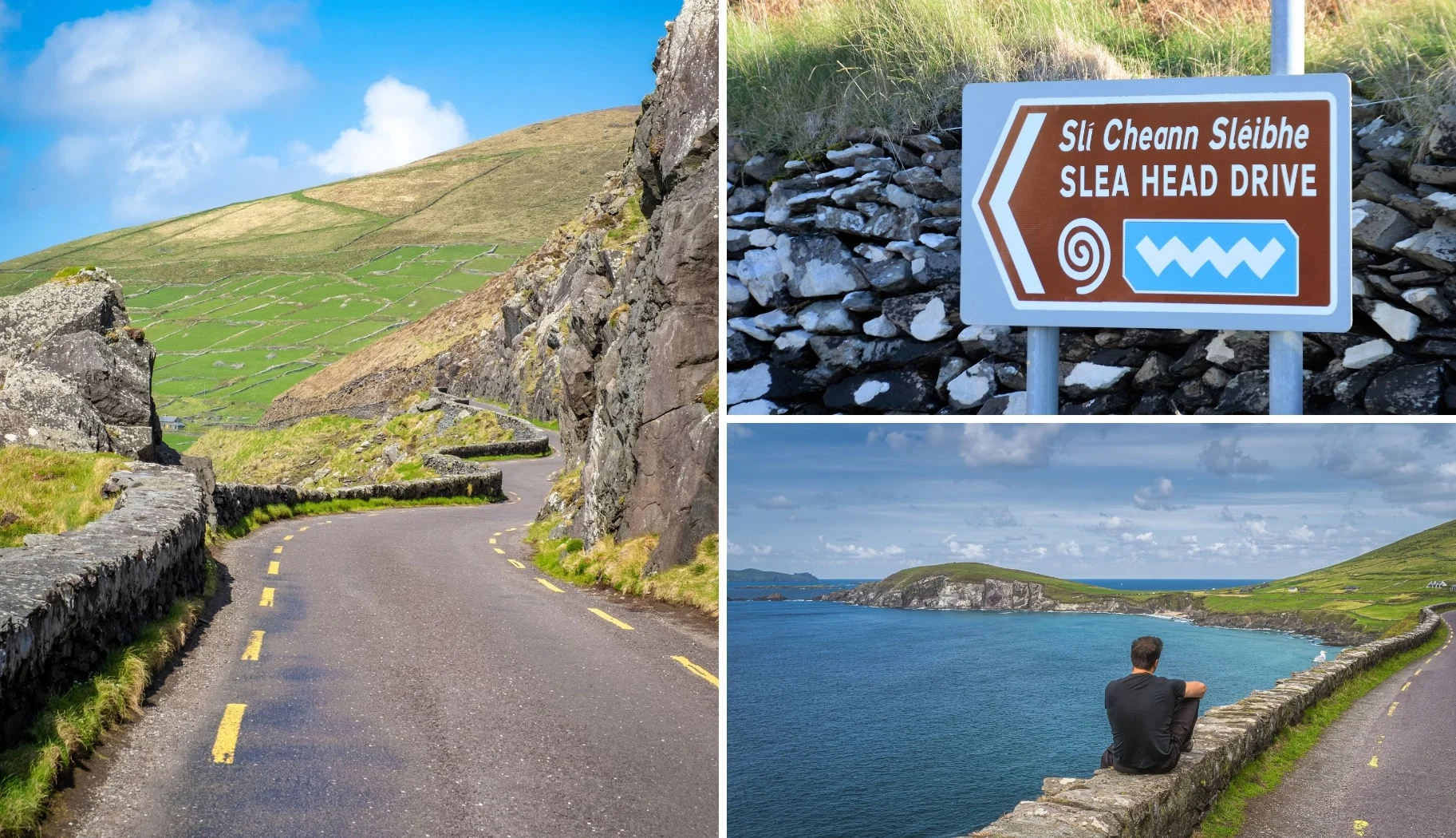
Photos via Shutterstock
Today, you’ll be exploring the Dingle Peninsula. A beautifully remote corner on the country’s southwest coast, with rugged coastline, lovely beaches, and rolling green hills. You’ll end the day in Limerick City, where you’ll be spending 3 wonderful nights (we’ll pop some of our top places to stay below).
Recommended accommodation in Limerick
- Budget: Woodfield House Hotel (15-minute walk from the city with excellent reviews) and Shelbourne House (cosy spot 20 minutes walk from the castle)
- Mid-range: Limerick City Hotel (very central hotel near the river) and The Bedford (very central boutique townhouse with exceptional reviews)
- Luxury: The Savoy Hotel (central, boutique 5-star) and The George (central spot on O’Connell Street in Limerick city centre)
There are some beaches on today’s agenda, so bring some swimwear if this is a summer trip or some extra layers if it’s winter.
Start the day with a big breakfast at your accommodation before you check out, or look back on our breakfast suggestions from previous days!
A note about today
We’re going to give you all of the main attractions located along what’s often referred to as the Dingle Peninsula Loop – you don’t have to visit all of them.
But we want to give you a sense of the stops, some of which get missed, so you can decide which you’d like to see and which you’d like to avoid.
In this guide you’ll find a map with the looped drive outlined along with all the key stops.
Stop 1: Inch Beach
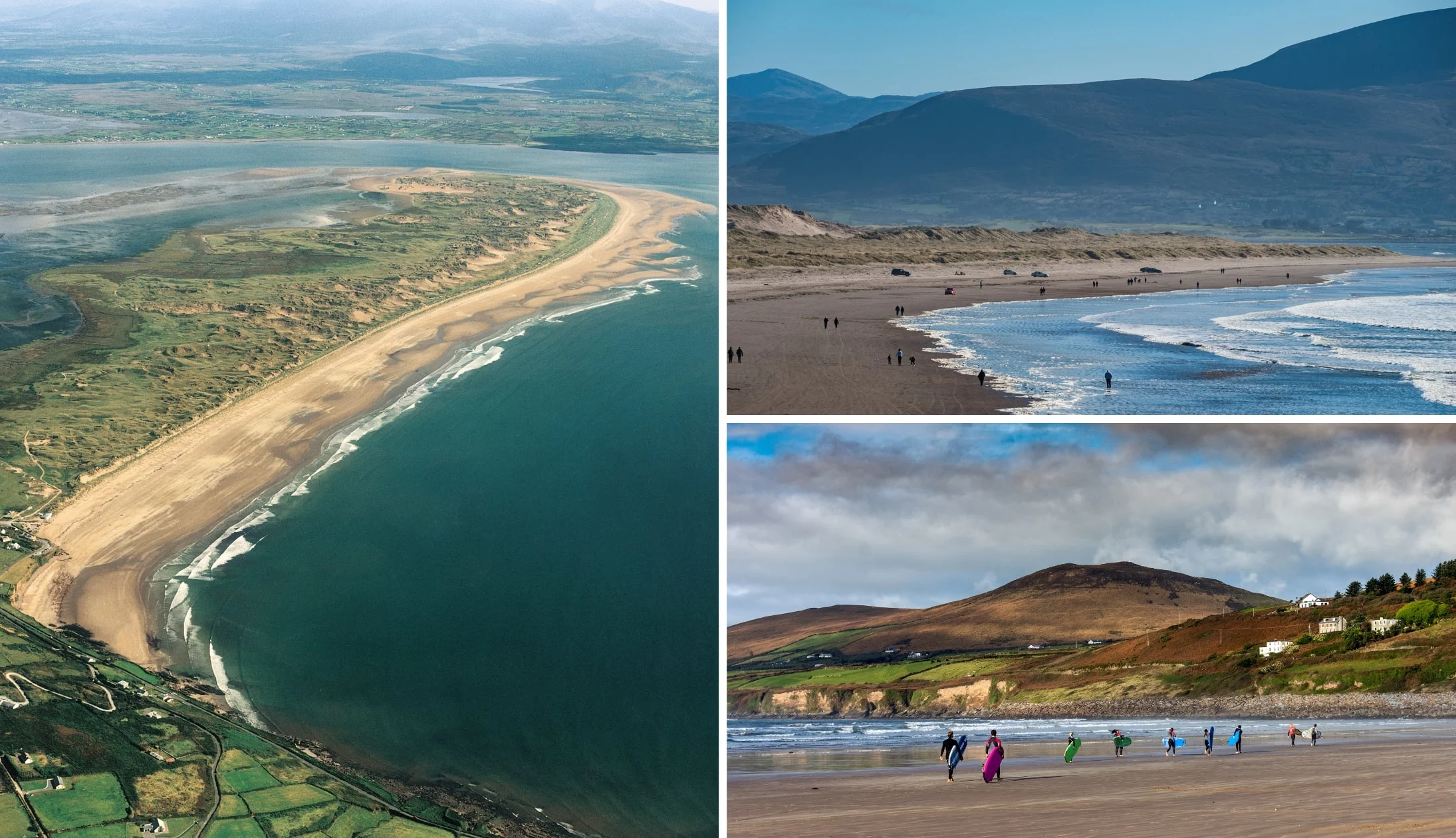
Photos via Shutterstock
Our first stop of the day is a 1.5 hour spin from Kenmare.
Inch Beach, as you’ll see from the photo on the left above, is nearly like a little peninsula in itself. It stretches for an impressive 5.5km and it’s a lovely spot for a stroll.
There’s a small car park up front and, before you braze the chill Atlantic breeze, you can grab a coffee from Sammy’s (you can’t miss it).
As you ramble, you’ll see surfers attempting to conquer the waves whole the mountains of Kerry off in the distance seem to loom over you from every angle.
Stop 2: Minard Castle and beach
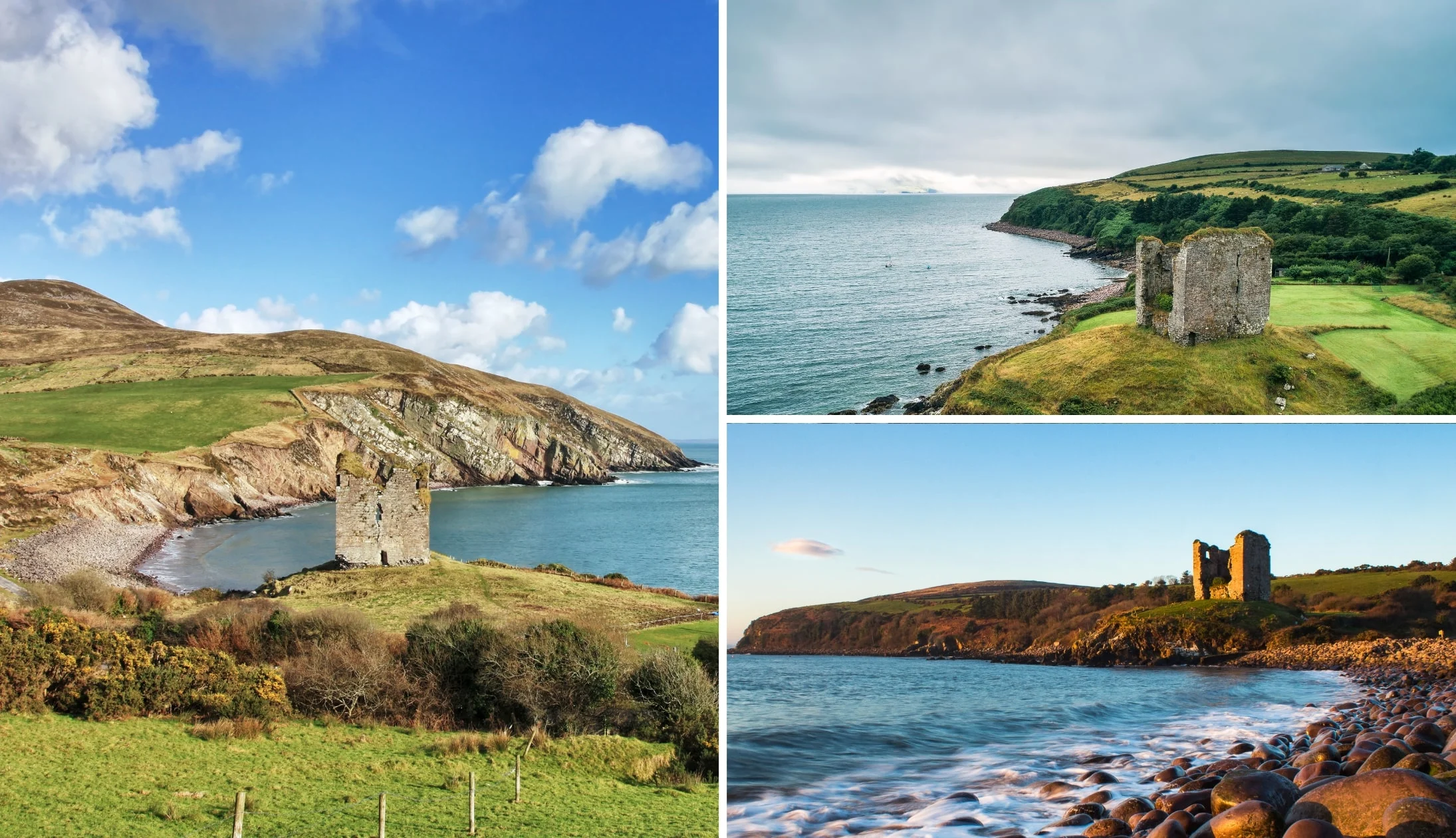
Photos via Shutterstock
Now, if you’ve ever watched the 1970’s film ‘Ryan’s Daughter’, you might recognise Minard Castle, which was referred to in the movie as ‘The Tower’. It’s a 15-minute drive from Inch Beach.
The castle here is finely plonked on a little grassy hill that overlooks the water, commanding breathtaking views on a clear day.
Minard Castle dates to the 16th century and it is one of several ‘Fitzgerald castles’ that were built by the Knight of Kerry on the Dingle Peninsula.
Stop 3: Conor Pass
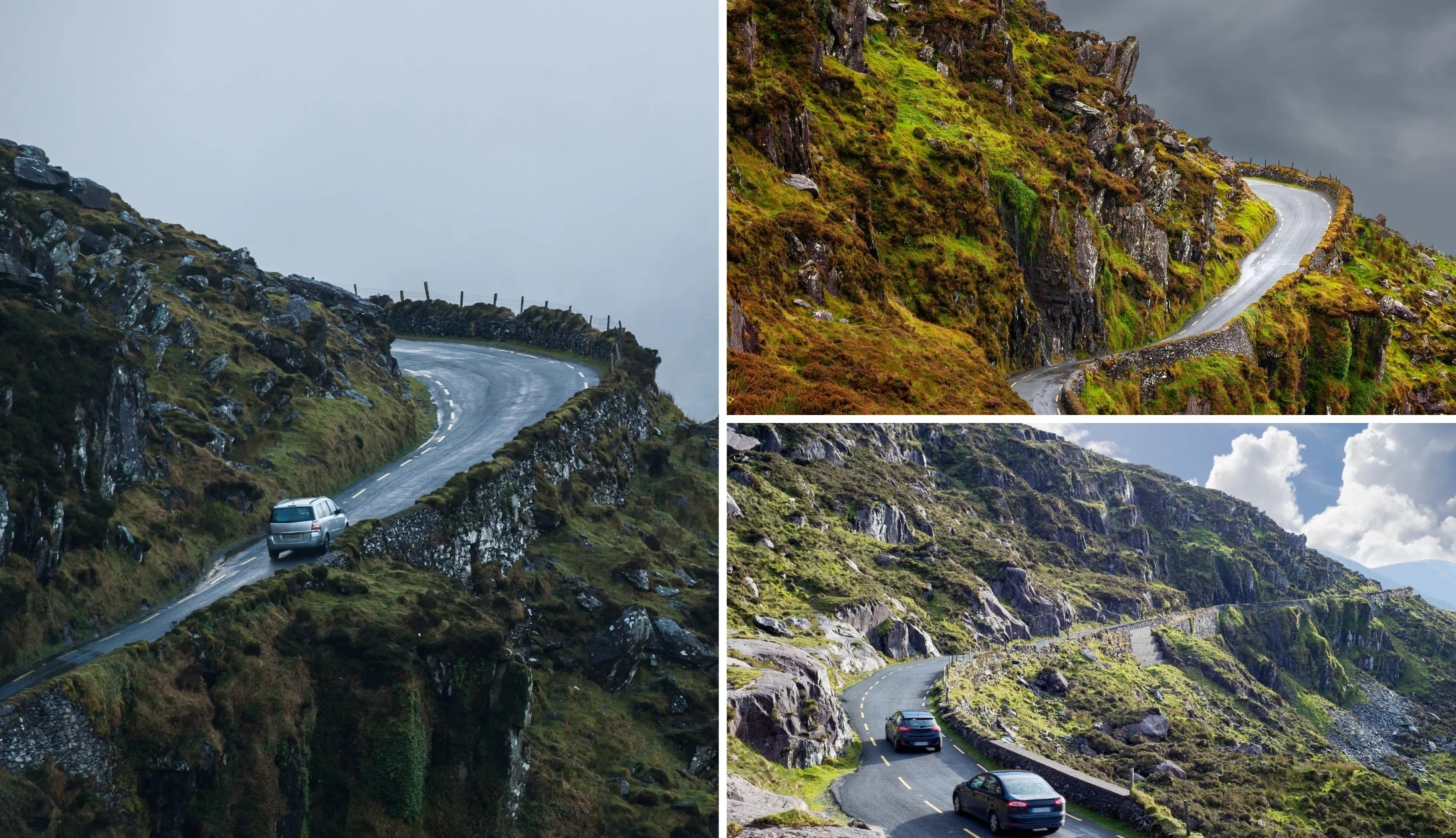
Photos via Shutterstock
Next up is Conor Pass – a 25-minute drive from Minard Castle. At an impressive 410m above sea level, the mighty Conor Pass is one of Ireland’s highest mountain passes, and it can be the stuff of nightmares for nervous drivers.
However, you don’t have to drive it. If you head up to it from the Dingle side, you’ll reach a car park before you hit the narrow road.
From here, you can soak up views of the surrounding valley and watch the cars navigate its narrow bends from afar.
Stop 4: Dingle Town
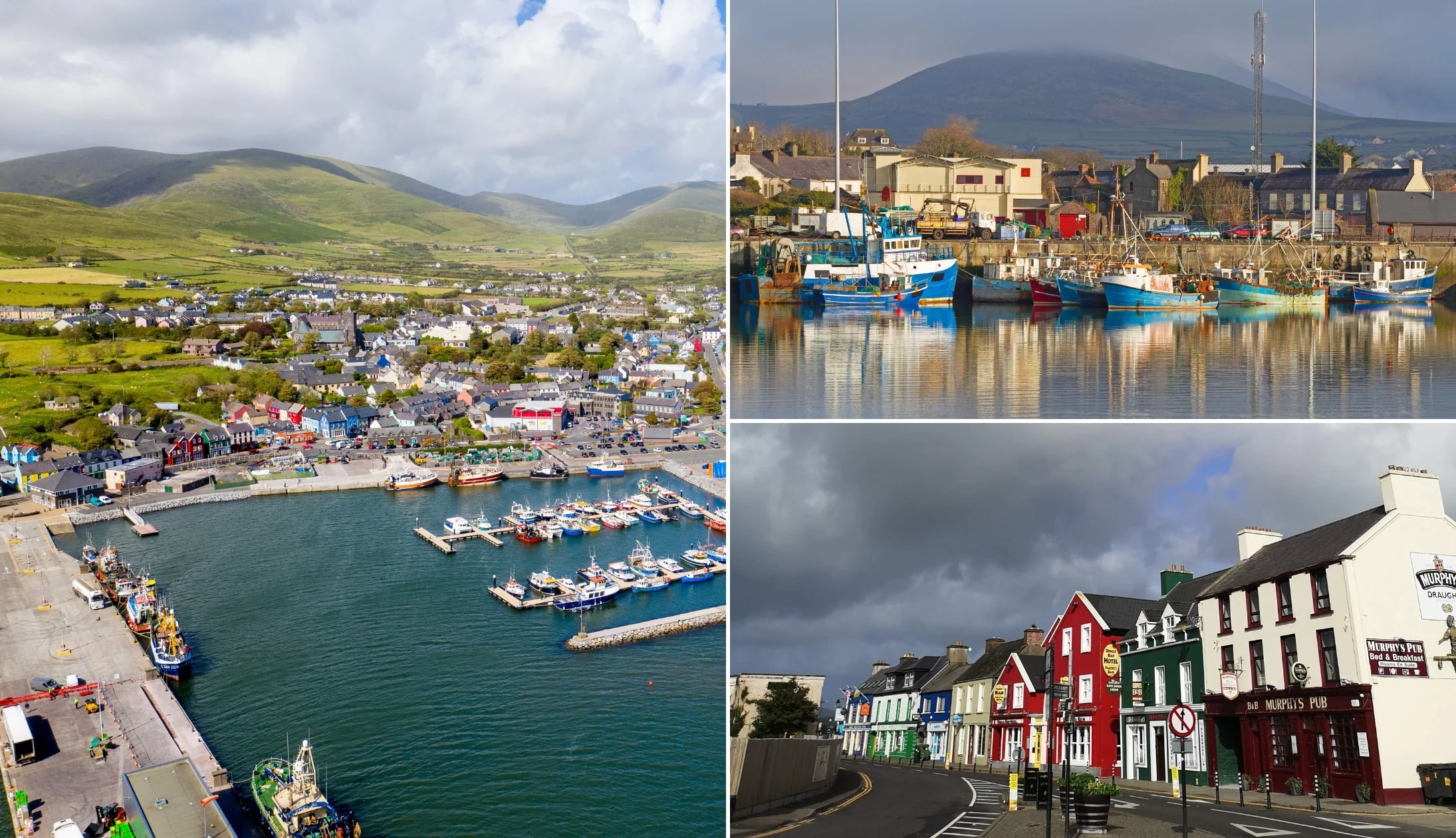
Photos via Shutterstock
You’ll have to double back on yourself next, and drive the short 10 minutes to the lively Dingle Town.
It’s well worth parking up (you’ll find a car park at the pier), hopping out and heading for a stroll around this colourful little town.
It’s very walkable and, while very touristy, it boasts a fine bit of charm and character. In the town, you have attractions like the Dingle Distillery and the Dingle Aquarium.
There’s also plenty of great restaurants in Dingle (Fish Box is our go-to!) and there are endless old-school pubs in Dingle, too!
From the town, you can join one of the various Dingle Tours, like the Sea Safari or the boat trip to the Blasket Islands.
Stop 5: Eask Tower
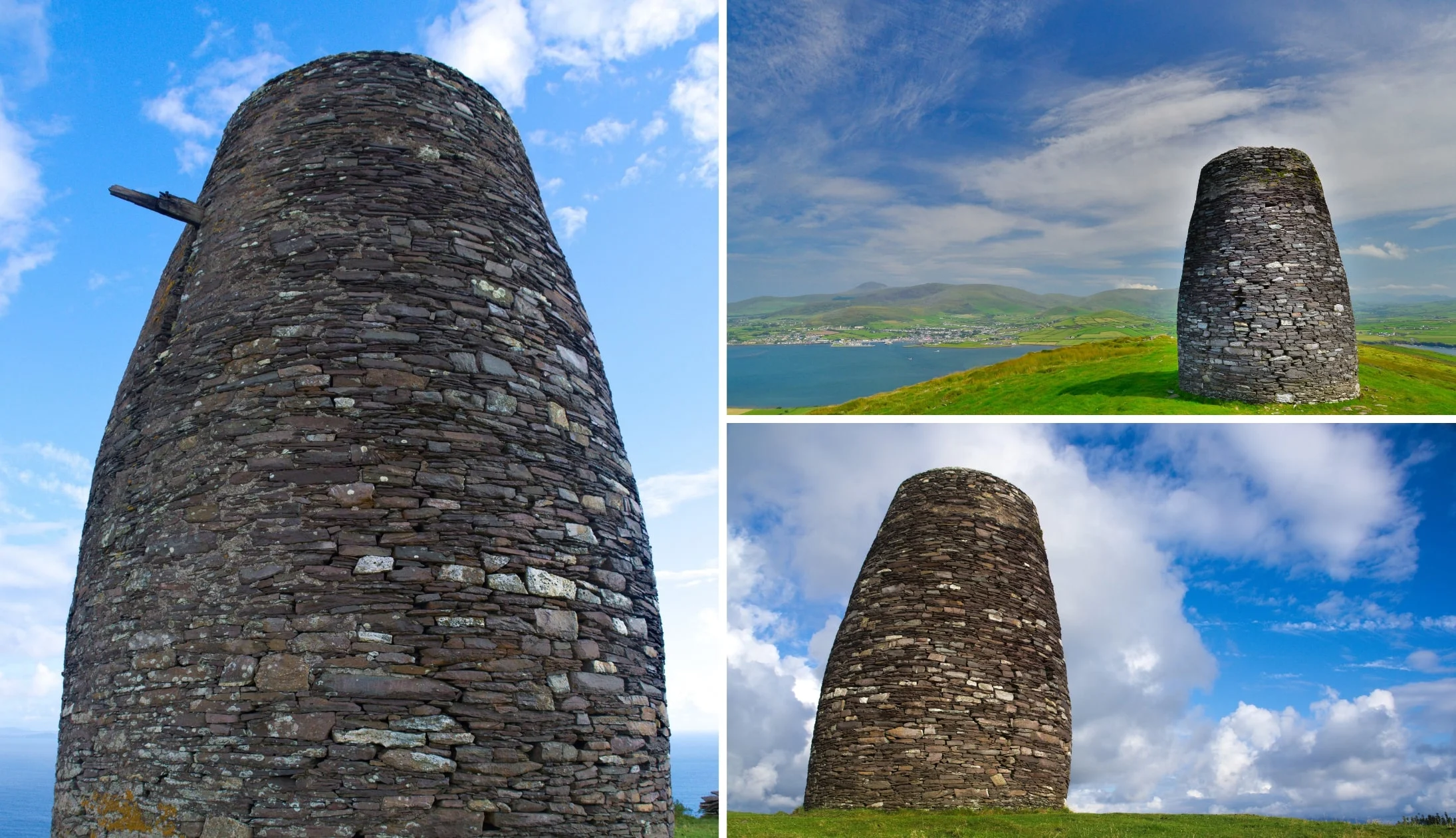
Photos via Shutterstock
So, our next Dingle Peninsula attraction is Eask Tower – a 15-minute drive from the town. Now, if you’ve zero interest in history, don’t worry – there’s outstanding 360 views from here!
The solid stone tower has been perched at the top of Carhoo Hill since 1847 when it was constructed to aid vessels into Dingle Harbour.
There’s an entrance fee (€2 – prices may change) that you need to pay into an honesty box as it’s located on private land.
Note: It’s a steep walk up to the top of the hill and shoes with good grip are essential when wet.
Stop 6: Ventry Beach
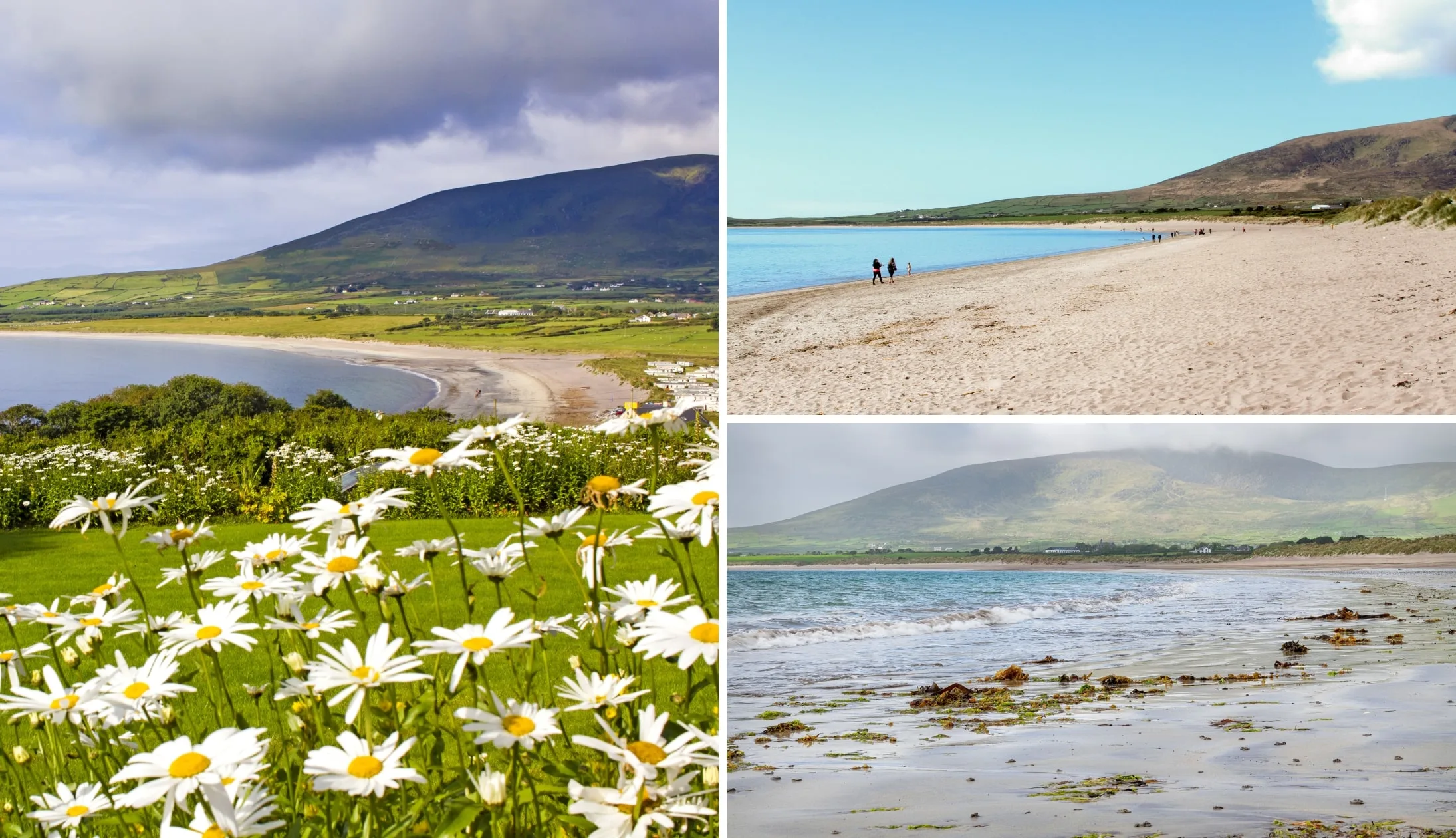
Photos via Shutterstock
Ventry Beach (10-minute drive from Eask) is a Blue Flag Beach and it has a lifeguard service throughout the summer months. On a warm day, there’s few places like it.
One of the more popular beaches in Kerry, Ventry Beach stretches for around 4.5km, and, for me, it marks the beginning of the Slea Head Drive.
Hop out, flick off your shoes and head for a stroll or a paddle. It’s from this point that the Dingle Peninsula Drive goes from good to great!
Stop 7: Beehive huts, forts and sheepdog demonstrations
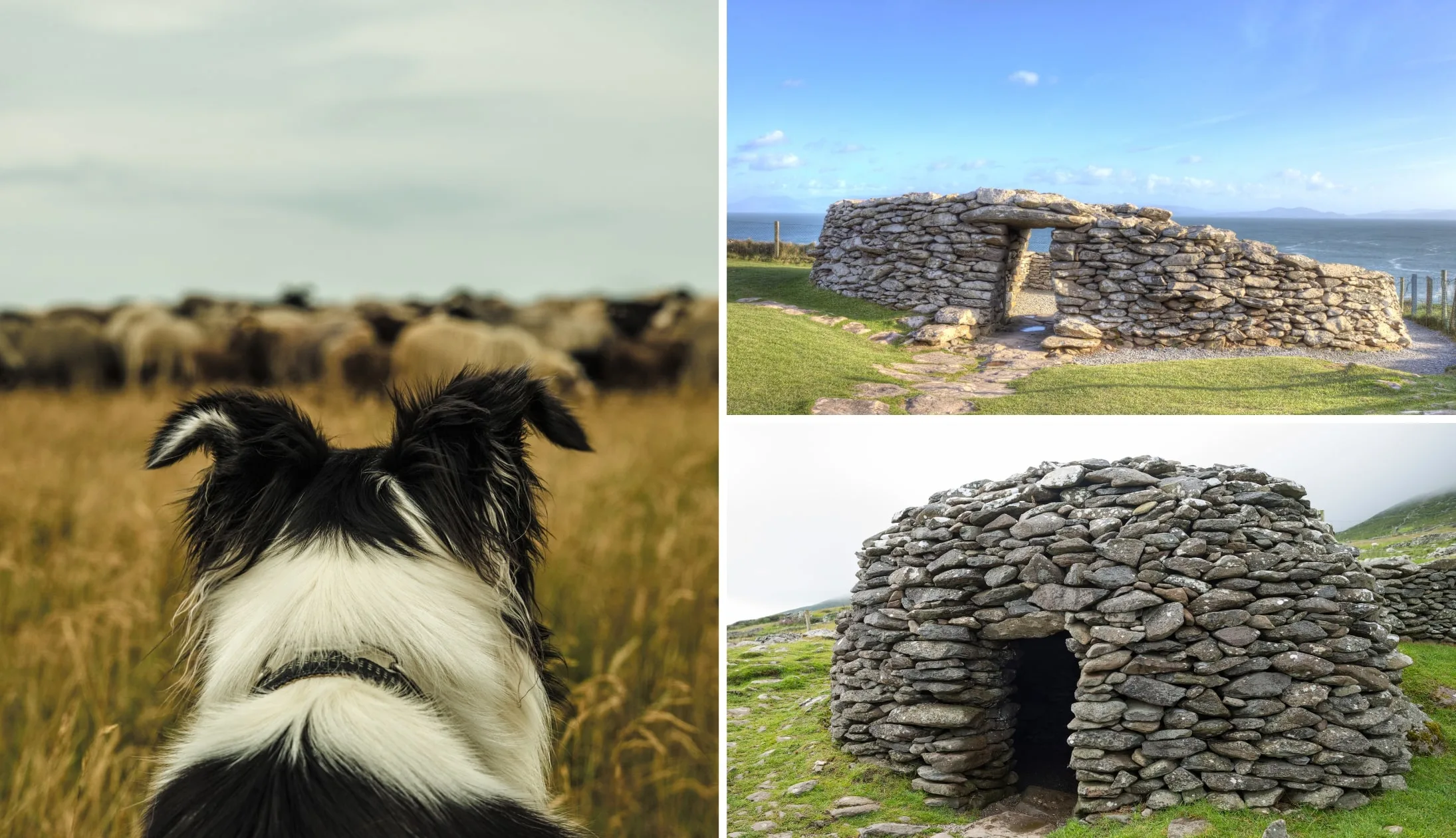
Photos via Shutterstock
So, these next stops are completely optional. After you leave Ventry, you’ll follow the road to the coast and it’s here that there are several paid and free attractions.
The first you come to is the Celtic Prehistoric Museum, the second is the FairyFort Ringfort, the third are the Dingle Sheepdog Demonstrations, the Famine Cottages and Dunbeg Fort and the fifth is the Beehive Huts.
You’ll then drive around a bend and reach Cashel Murphy followed by a place where you can hold a baby lamb
Personally, I’ve never done them, and I likely never will, but I know of many visitors to the Dingle Peninsula that have.
Stop 8: The viewpoints
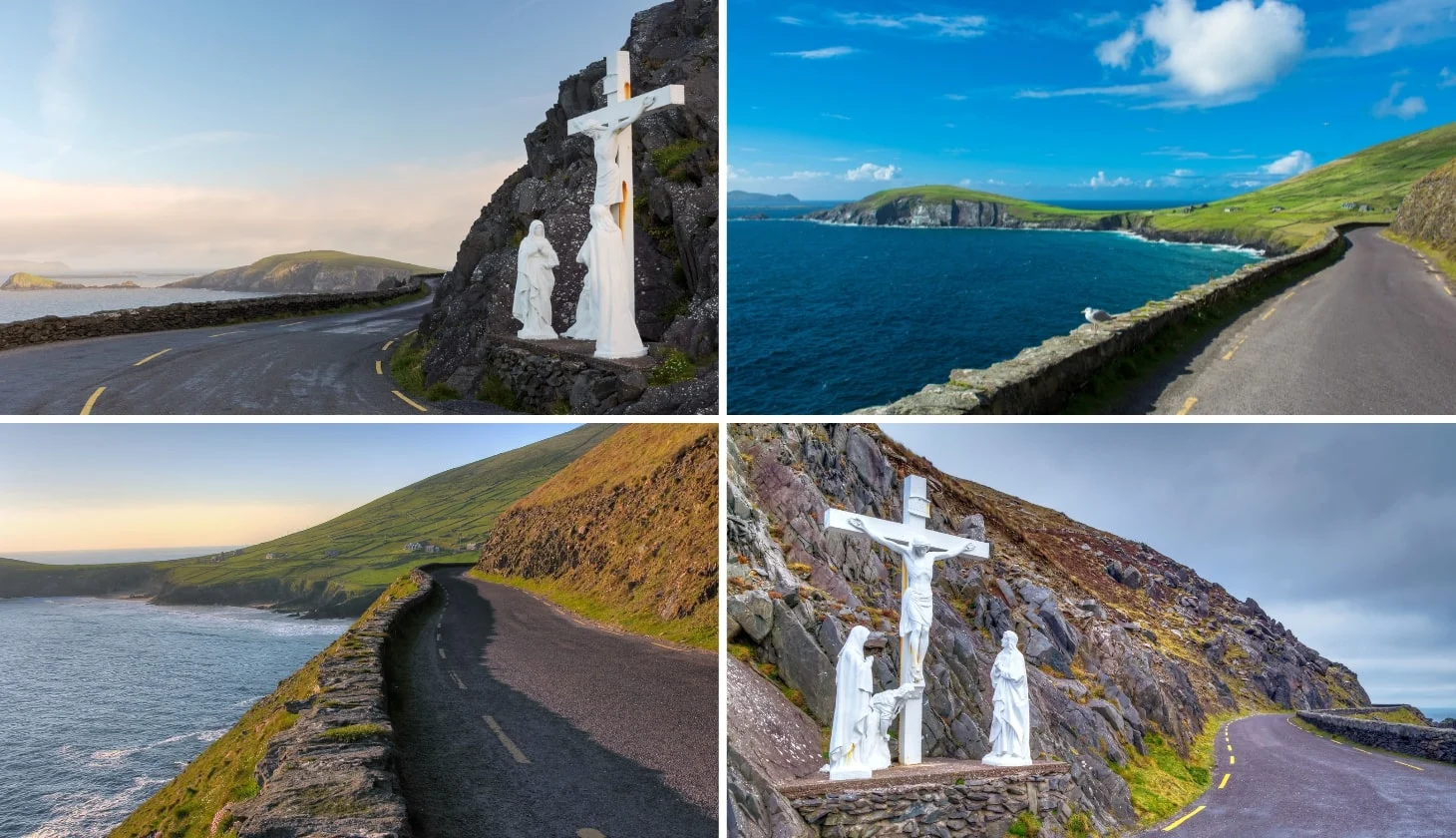
Photos via Shutterstock
Now, a word of warning – the Dingle Peninsula Drive has numerous viewpoints. Unfortunately, many of them are beyond bends in the road and you often find yourself missing them.
The issue then is that, at certain stages of the route, there’s very few places to turn. The first two you arrive to are Ceann Sleibhe and the White Cross.
Both are next to each other and each is worth stopping at if there’s room to do so.
Stop 9: Radharc na mBlascaoidí viewpoint
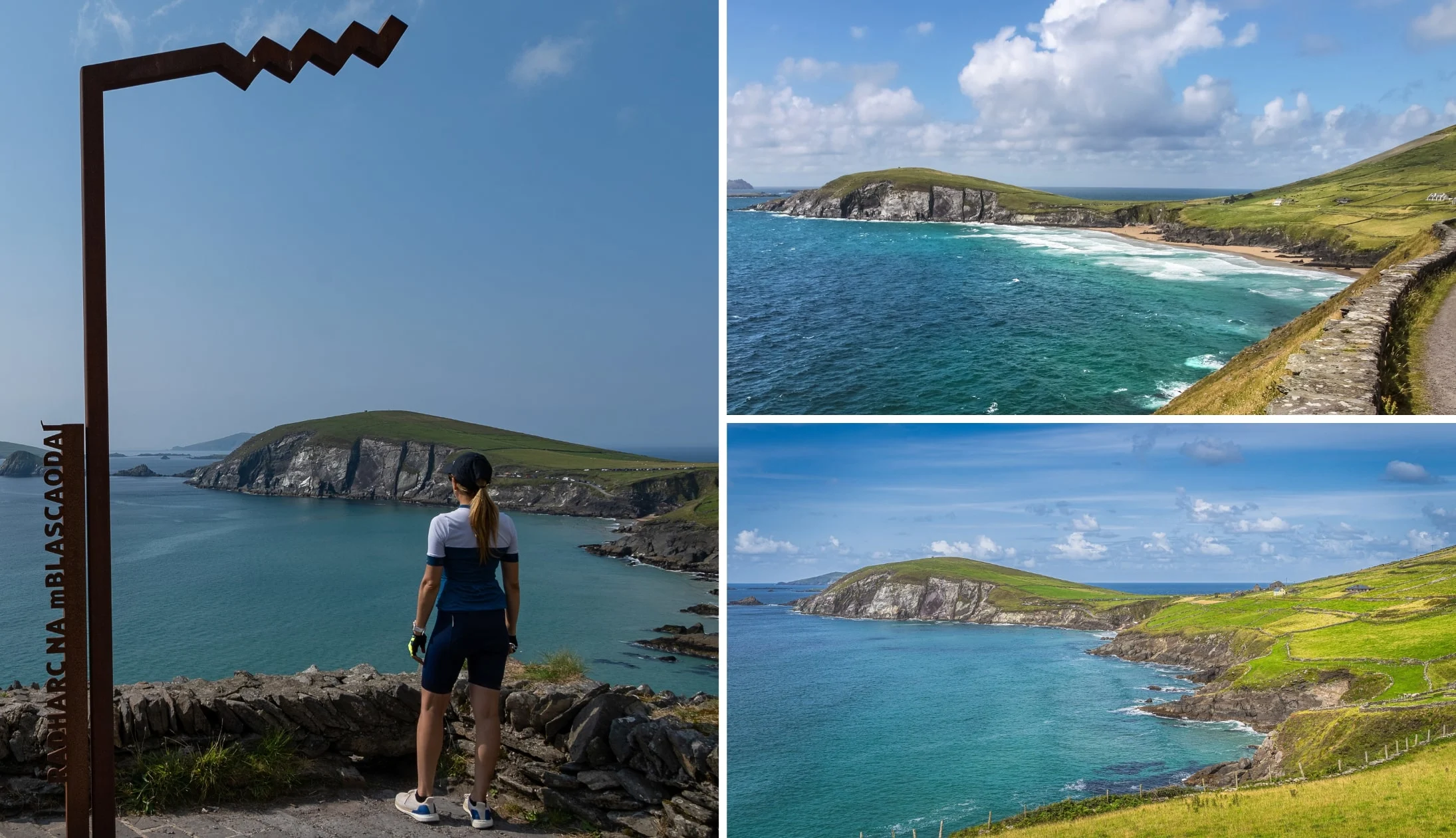
Photos via Shutterstock
The next viewpoint, listed as Radharc na mBlascaoidí or Blasket’s View on Google Maps is one of my favourites on the Dingle Peninsula Drive.
There’s a nice bit of parking here and you’ll be treated to a good eyeful of Dunmore Head. If you’re here when the weather is wild, you’ll see (and hear!) waves bashing against the craggy cliff face below.
Stop 10: Coumeenoole Beach
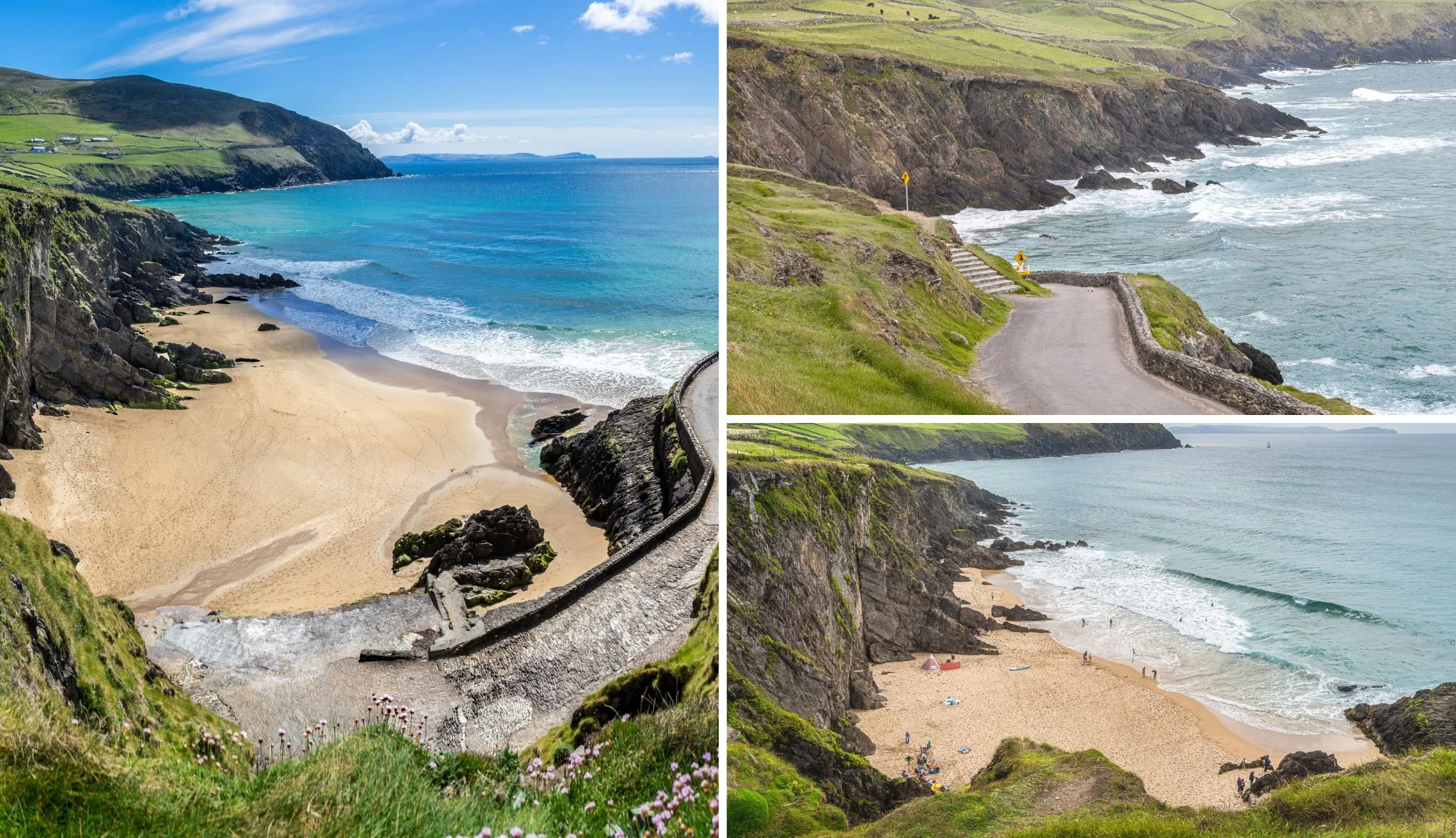
Photos via Shutterstock
Next up is Coumeenoole Beach – another filming location for the movie ‘Ryan’s Daughter’. However, this one comes with a WARNING.
No matter how inviting the water looks here, never enter it – the bay here catches the full force of the Atlantic which creates strong and unpredictable currents.
There’s a little parking area next to the beach and you can either admire it from above or walk down the winding track to the sand.
Stop 11: Dun Chaoin Pier
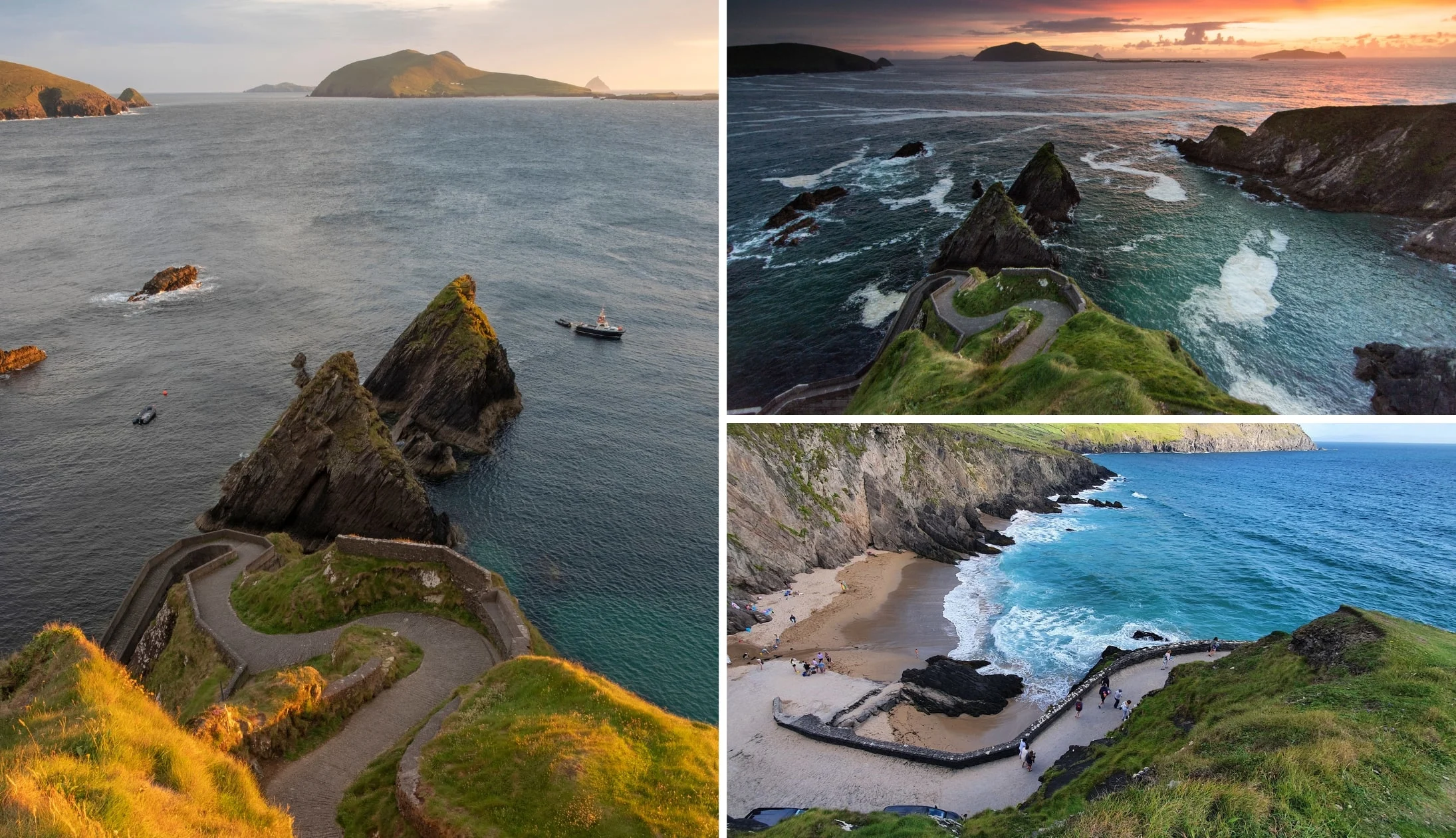
Photos via Shutterstock
Dun Chaoin Pier is arguably the most notable of the many Dingle Peninsula attractions, thanks to its quirky appearance.
This is the departure point for the ferry to the Blasket Islands and it’s particularly impressive at sunrise and sunset.
Now, another warning – every year a tourist attempts to drive down the path here and gets stuck, destroying their car in the process.
There’s a bit of parking near the ticket office – never… ever attempt to drive down it!
Stop 12: The Blasket Centre
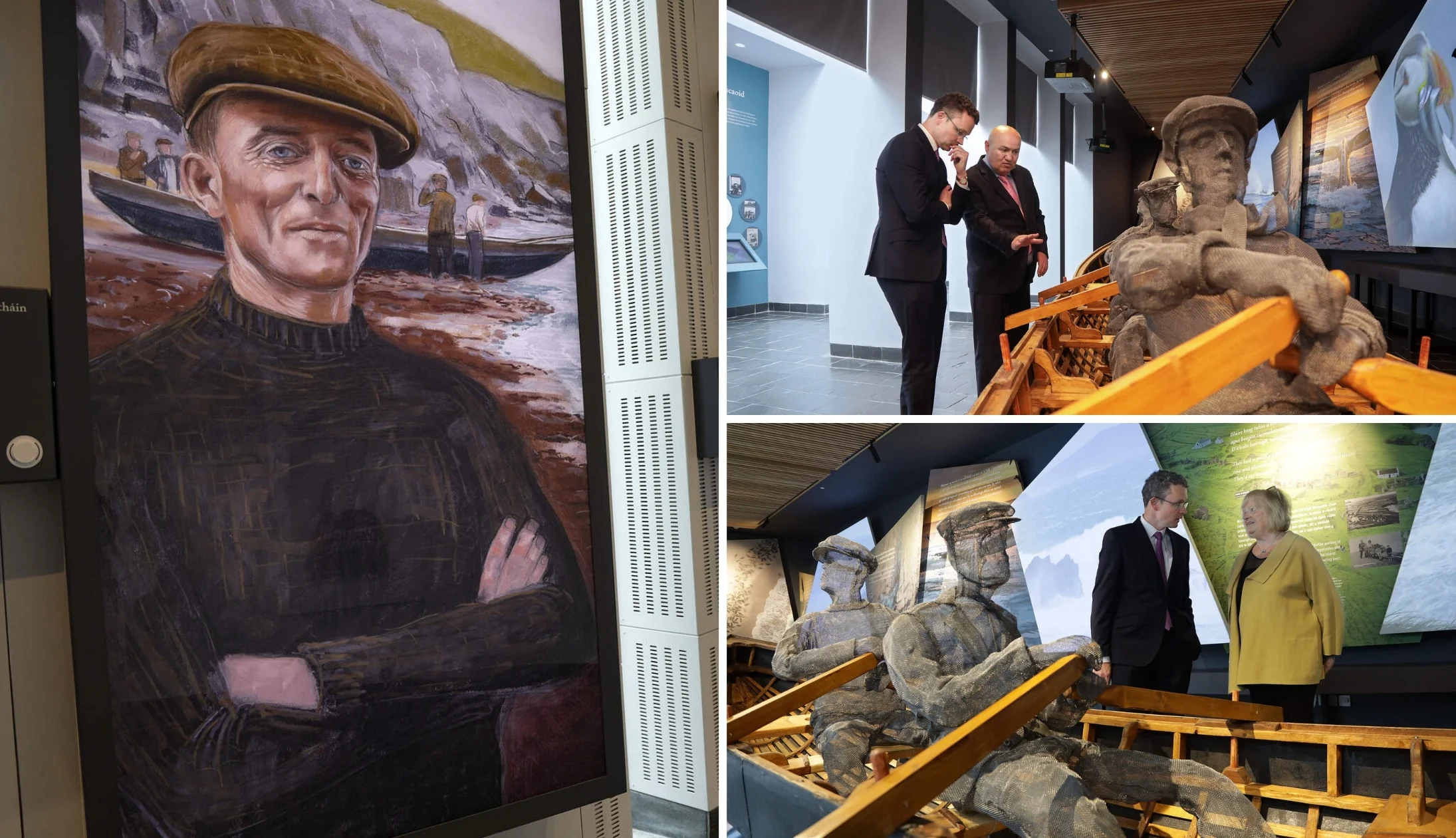
Photos courtesy Valerie O’Sullivan via Ireland’s Content Pool
The Blasket Centre is a good option if you’re doing the Dingle Peninsula Drive when it’s raining and you need a bit of respite.
Boasting magnificent views of the coast and the islands, the Blasket Centre offers an insight into the unique community that lived on the remote Blasket Islands prior to they were evacuated in 1953.
As you walk around it, you’ll get an insight into island life, how the island’s inhabitants made ends meet and plenty more.
Stop 13: Ceann Sraithe (Star Wars filming location)
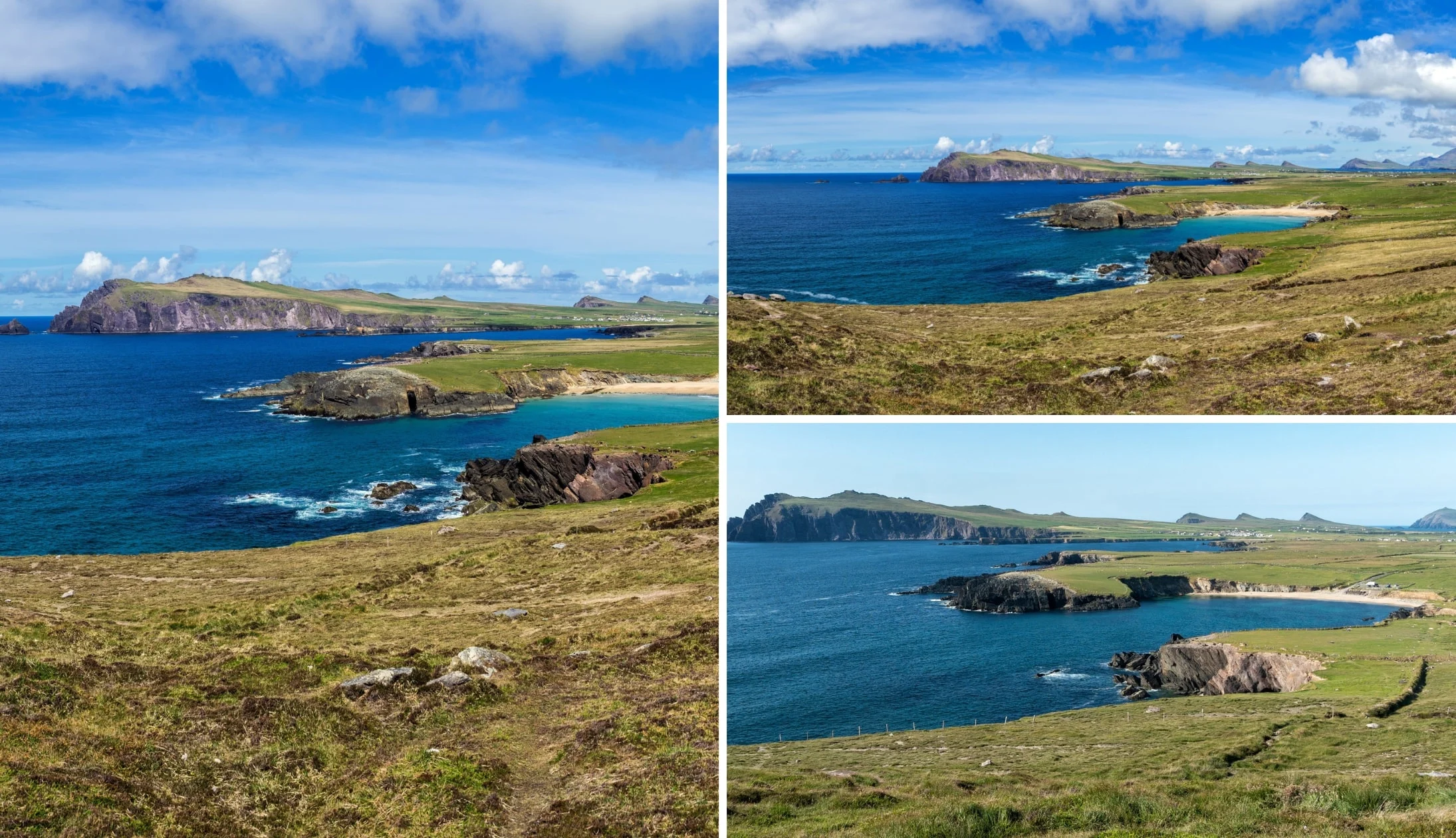
Photos via Shutterstock
As you may be aware, parts of Star Wars: The Force Awakens were filmed in Ireland, most notably on Kerry’s Skellig Michael.
However, a section of the Dingle Peninsula was also used to recreate the Skellig Michael set for later movies. We have this point plotted on the map above.
Now, a warning – there’s no dedicated parking area here, just hard shoulder, so please use caution and never block the road.
Stop 14: Clogher Strand
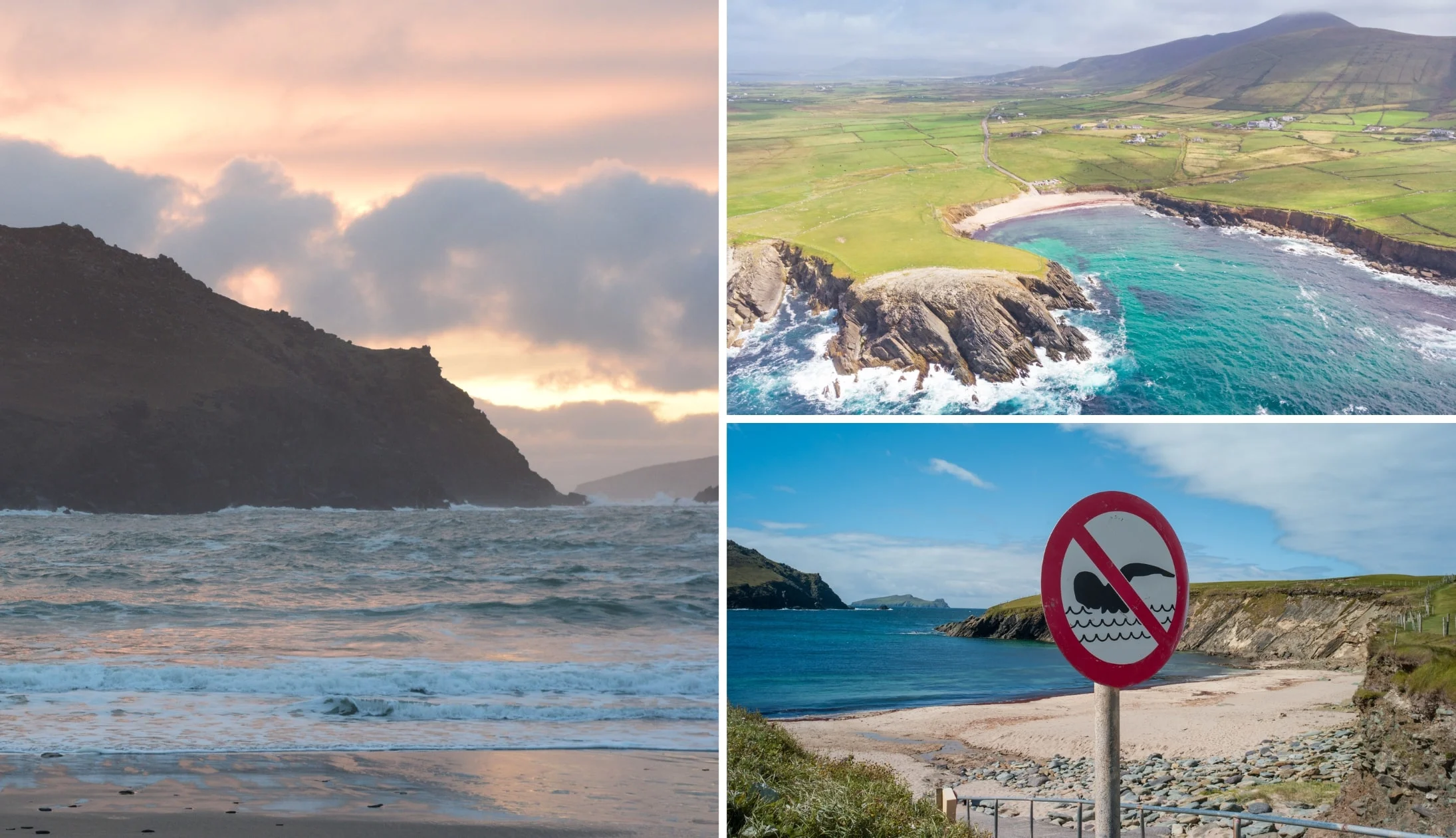
Photos via Shutterstock
Our next stop is Clogher Strand – one of many little coves that you’ll find dotted around the Dingle Peninsula.
While swimming isn’t allowed here, Clogher Strand is a gorgeous little beach that’s surrounded by rugged cliffs on all sides.
It can make a nice little stop-off point as it’s generally nice and quiet.
Stop 15: Wine Strand

Photos via Shutterstock
One of the more impressive beaches on the Dingle Peninsula is the mighty Wine Strand, a short spin from the previous stop.
There’s a little car park here and, as it’s tucked a little out of sight, tends to get missed by those driving Slea Head.
The views from here are outstanding and you’ll often have the place all to yourself in the off-season,
Stop 16: Gallarus Oratory
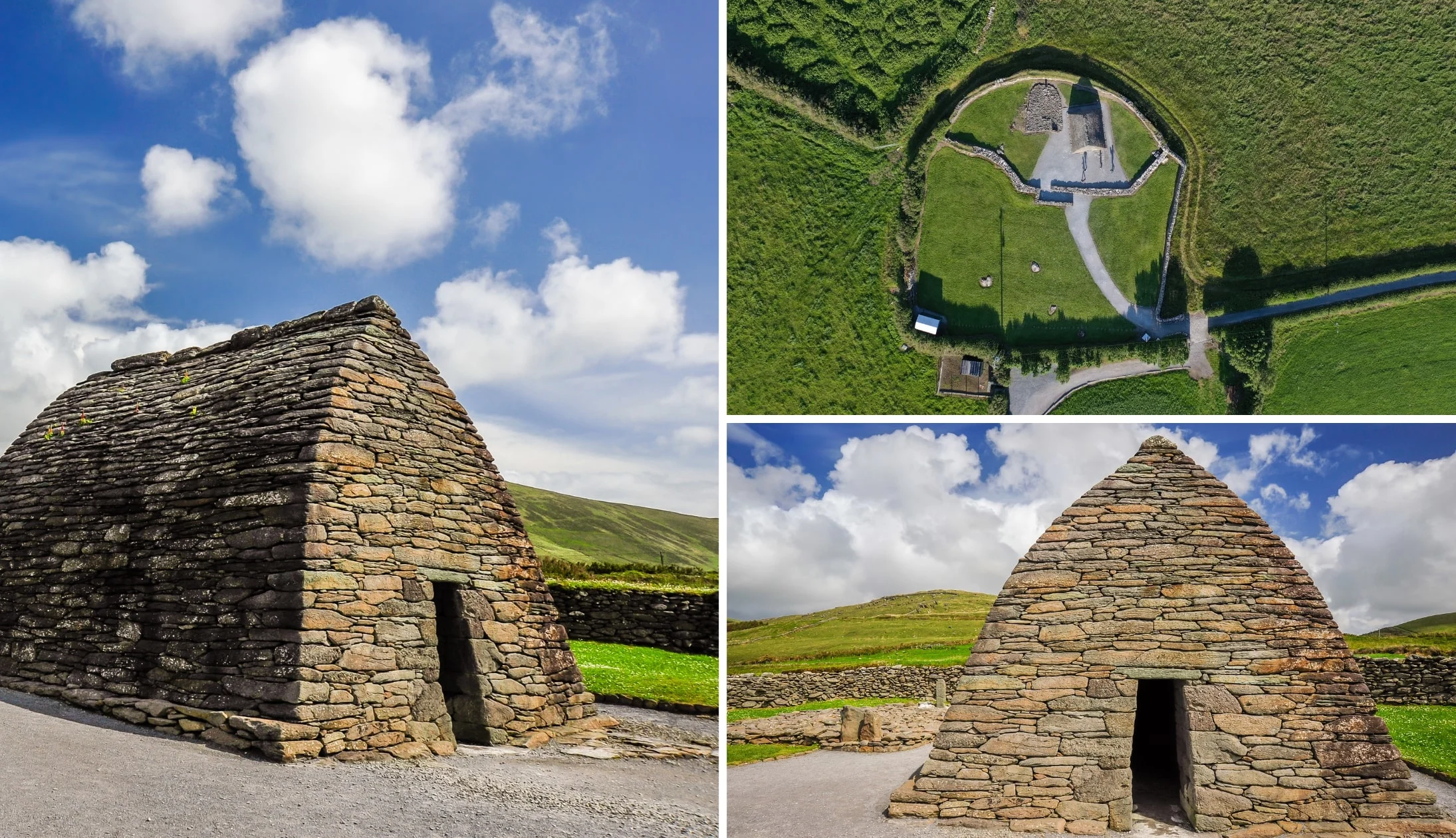
Photos via Shutterstock
Gallarus Oratory is one of the final stops on the Dingle Peninsula Drive, and it’s a place that gets plenty of mixed reviews.
There’s a visitor centre (which you need to pay into) or, if you can find parking nearby, you can access it for free via a public path.
It’s believed that Gallarus Oratory was built around the 11th or 12th century. It’s a pokey little structure, standing at just 4.8m by 3m in size.
Stop 17: Dinner in Tralee
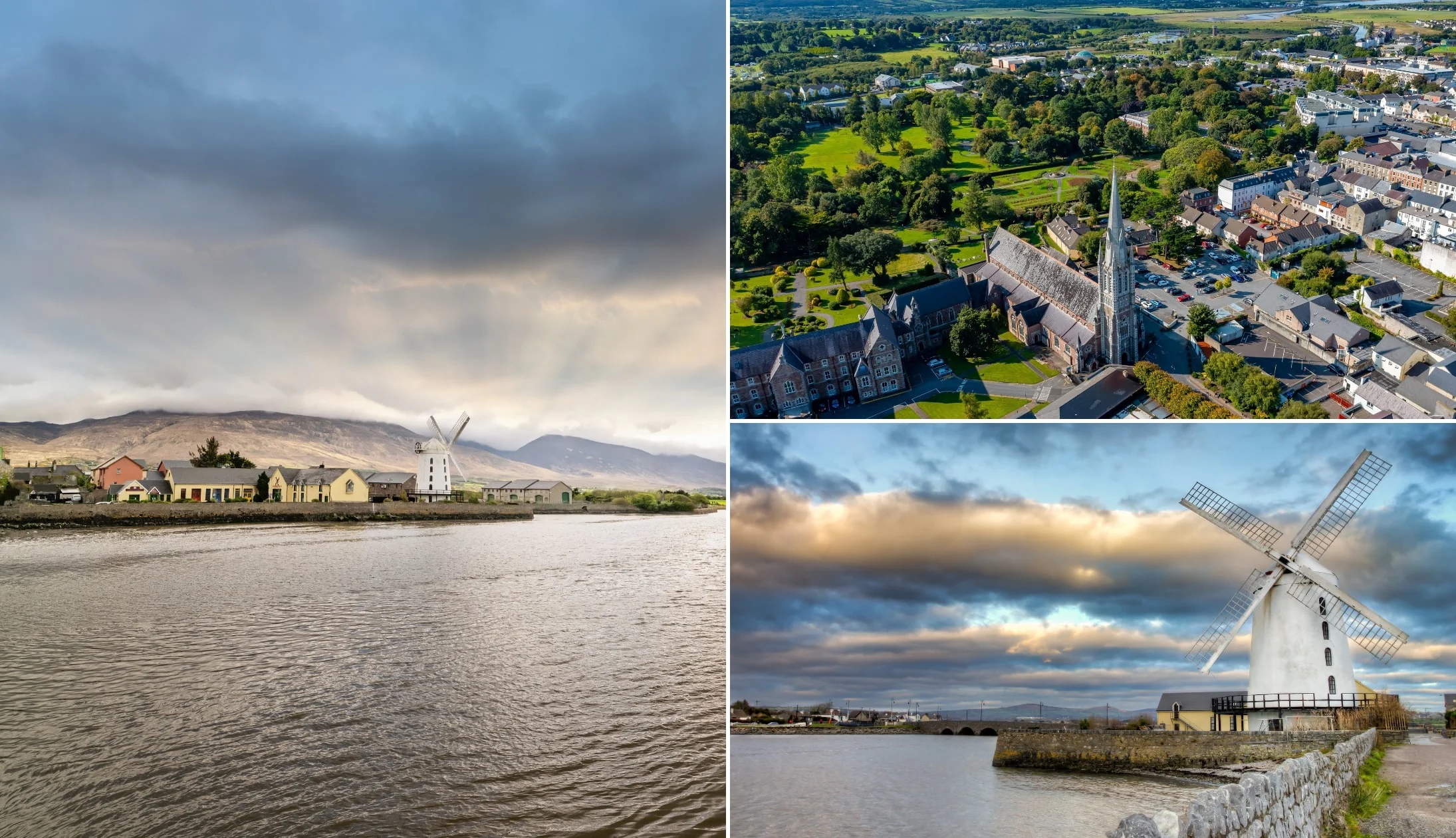
Photos via Shutterstock
Tonight, you’ll be enjoying dinner in Tralee, a town roughly one-hour from Gallarus. Our favourite dinner spots are Cassidy’s (gourmet pub grub) or for something a little different, Lana Asian Street Food.
Stop 18: Limerick City for the night
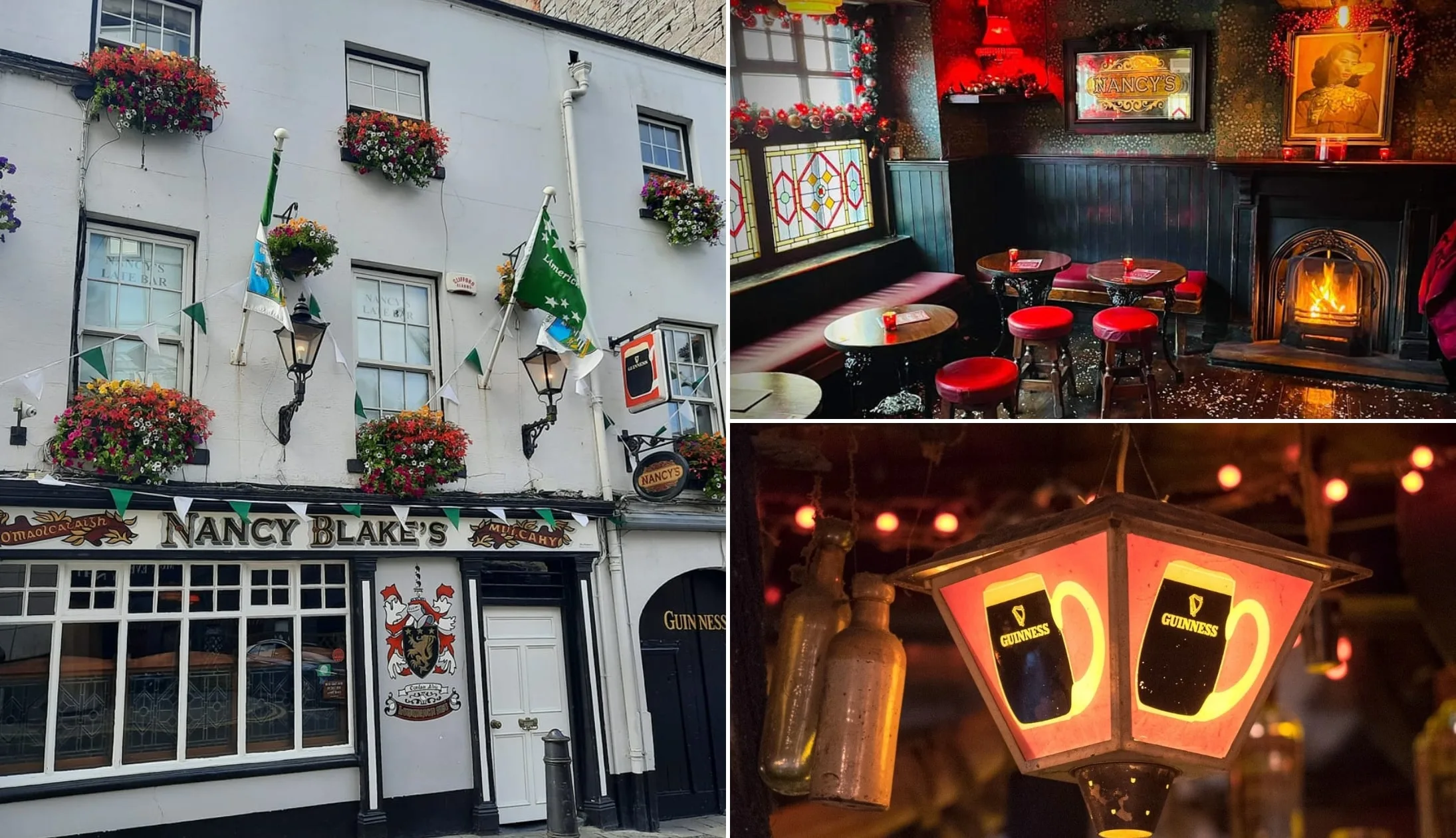
Photos via Nancy Blakes on FB
From Tralee, it’s a 1.5-hour drive to Limerick City. It’s been a long day, so once you arrive, check into your hotel, then hit the sack.
Our Limerick pub recommendations
For drinks, again, we love the Curragower but Tom Collins is another lovely pub.
Another great trad pub is Nancy Blakes and depending on the night, they might have some music on. However, if you don’t mind heading a little out of the city centre, then Charlie Malones is a must-visit.
In our opinion, it’s one of Limerick’s best-kept secrets, with a real old-school pub vibe.
Limerick is a great city for trad music. The Locke often has music and even dancing on some nights if you’re lucky! Dolans is also great, but it’s a short walk from the city centre.
Day 8: Limerick City and Bunratty
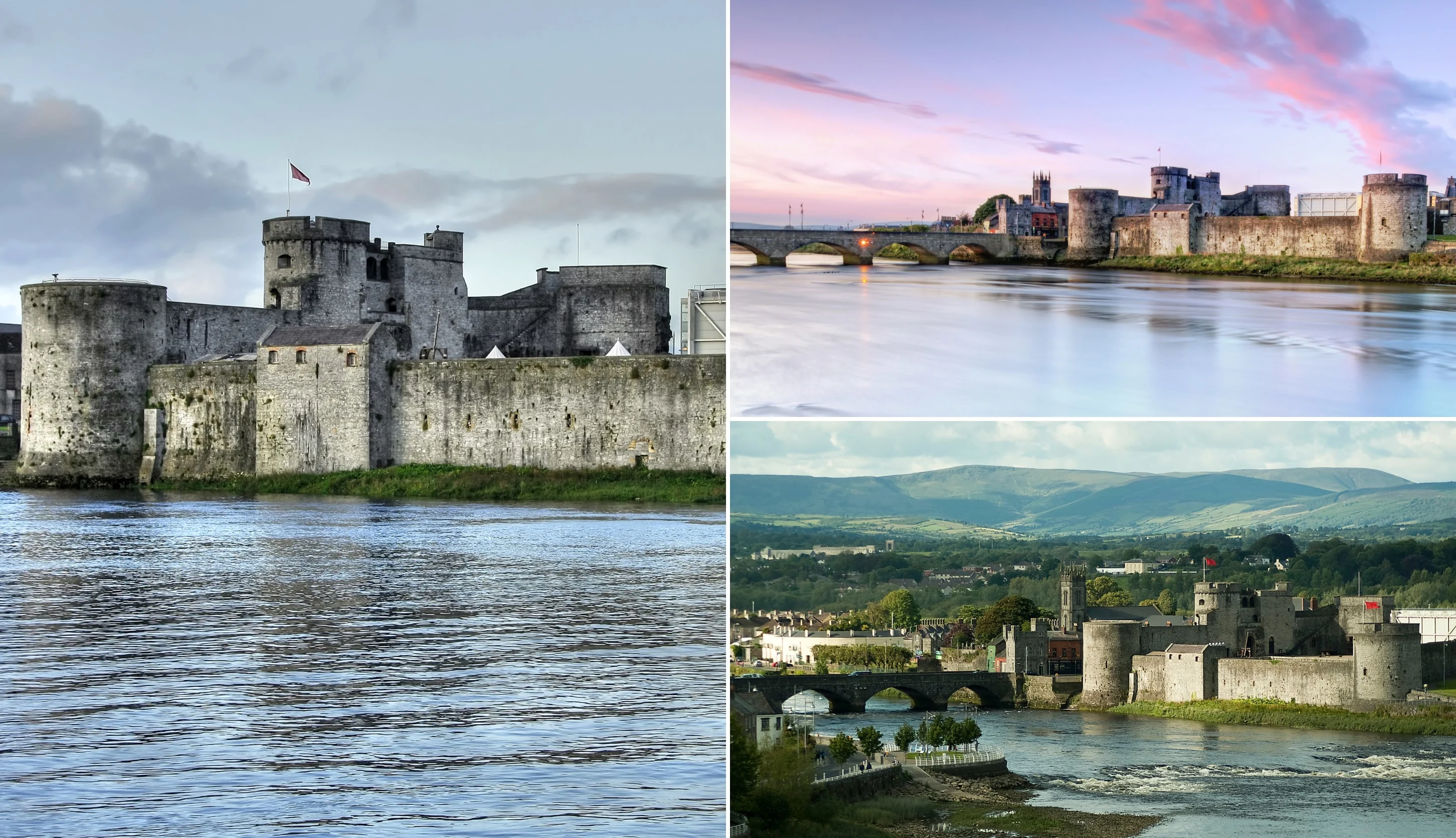
Photos via Shutterstock
Today, you’re making a stop at Bunratty Castle, then spending the rest of the day exploring lovely Limerick!
Get some breakfast at your accommodation or in the city. We personally love the Hook and Ladder. They have several locations in the city so you can pick the one closest to your accommodation.
Stop 1: Bunratty Castle and Folk Park
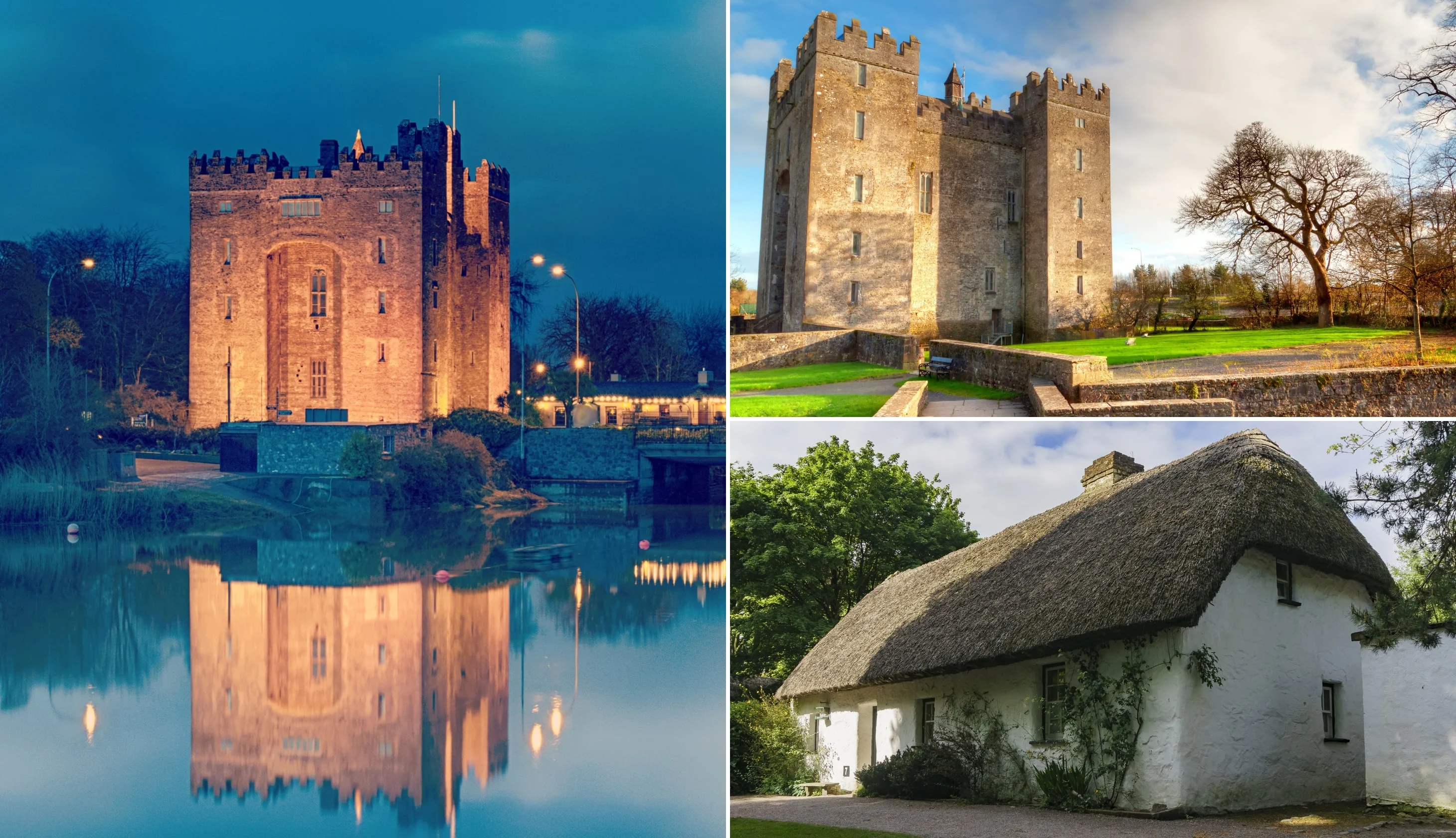
Photos via Shutterstock
Bunratty Castle and Folk Park sits on 26 acres of lovely countryside a 20-minute drive from Limerick City.
Visiting the Folk Park feels like stepping back in time as the 19th-century buildings and streets have been recreated to resemble what they would have originally looked like (get your ticket online here).
The park has over 30 buildings, including village shops, rural farmhouses, and Bunratty House, a beautiful Georgian home.
You can also take a tour of 15th-century Bunratty Castle, the last of four castles built on the site. However, prior to the castles being built, the site was home to a Viking trading camp in 970. You could easily spend hours exploring here.
Stop 2: Back to Limerick for a ramble
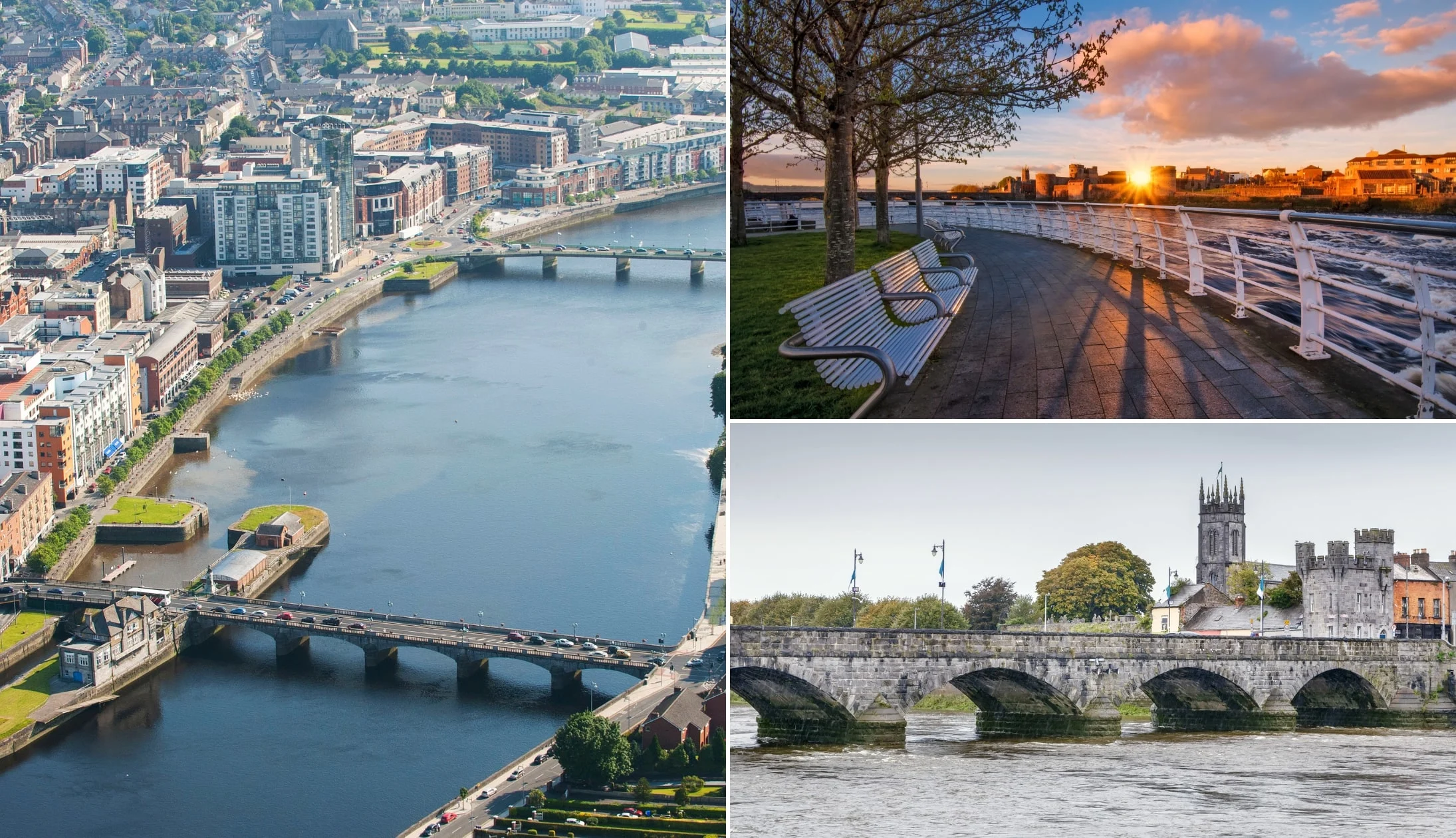
Photos via Shutterstock
Head back to the city and park the car. You don’t need it again today, as everything from here is on foot.
Your first stop in Limerick City is the 3 Bridges Walk, a 3.6km loop walk starting and ending in Arthur’s Quay Park. Along the walk, you’ll have great views of the Thomond, Sarsfield, and Shannon bridges, and you’ll cross the River Shannon twice, using the Shannon and Thomond Bridge.
The walk passes by a few of Limerick’s top attractions, like King John’s Castle and the Treaty Stone. Check out the route here.
Stop 3: Lunch
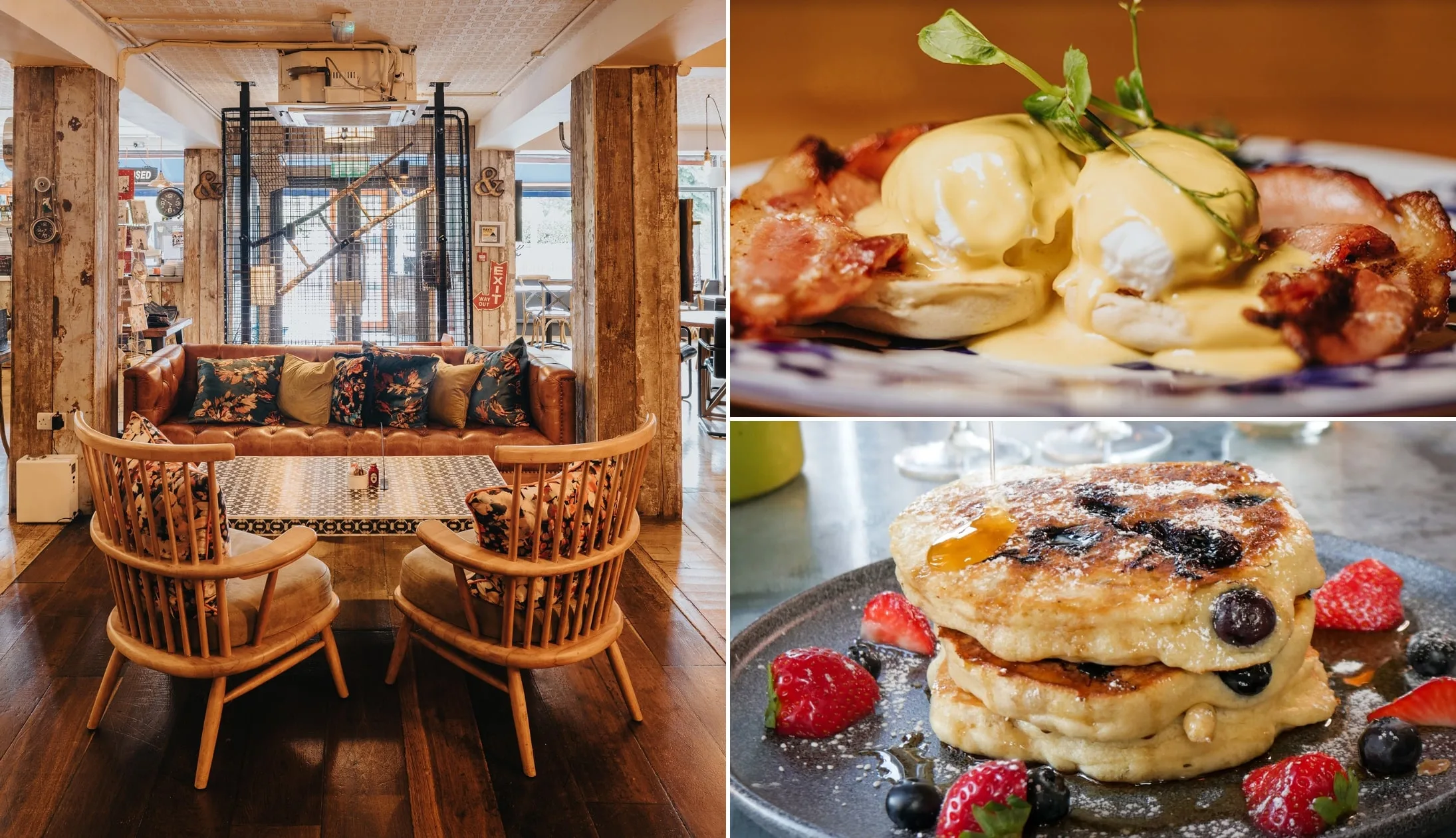
Photos via Hook and Ladder on FB
It’s probably close to lunchtime by now and we’ve got a couple of suggestions for you. We usually head to Coqbull, The Buttery, or the Hook and Ladder when we’re in the city. Coqbull is a casual dining restaurant serving up top-notch burgers and wings. The Buttery is our go-to for brunch, and the Hook and Ladder (the one on Sarsfield Street) has delicious sandwiches and a mouth-watering vegan burger.
Stop 4: King John’s Castle

Photos via Shutterstock
Head off to King John’s Castle, a 10-minute walk from the centre of the city. The 13th-century castle sits on King’s Island, on the banks of the River Shannon. The castle is in fantastic condition and is one of Europe’s best-preserved Norman castles.
King John’s Castle was built under the orders of King John, the “Lord of Ireland” and Richard the Lionheart’s brother. It was built between 1200 and 1212, with numerous repairs and extensions over its 800-year history.
The castle was a military stronghold with solid curtain walls, turrets, and strong fortifications. However, despite this, it sustained heavy damage during the 1642 siege of Limerick (the first of five Limerick sieges during the 17th century). There’s a fantastic exhibition on the siege inside the castle if you’d like to learn more.
Most people spend around one and half hours visiting the castle and visitor centre. You can have a look at the interactive exhibits, try on historical costumes, and in the summer, play Medieval games in the courtyard!
Stop 5: St Mary’s Cathedral
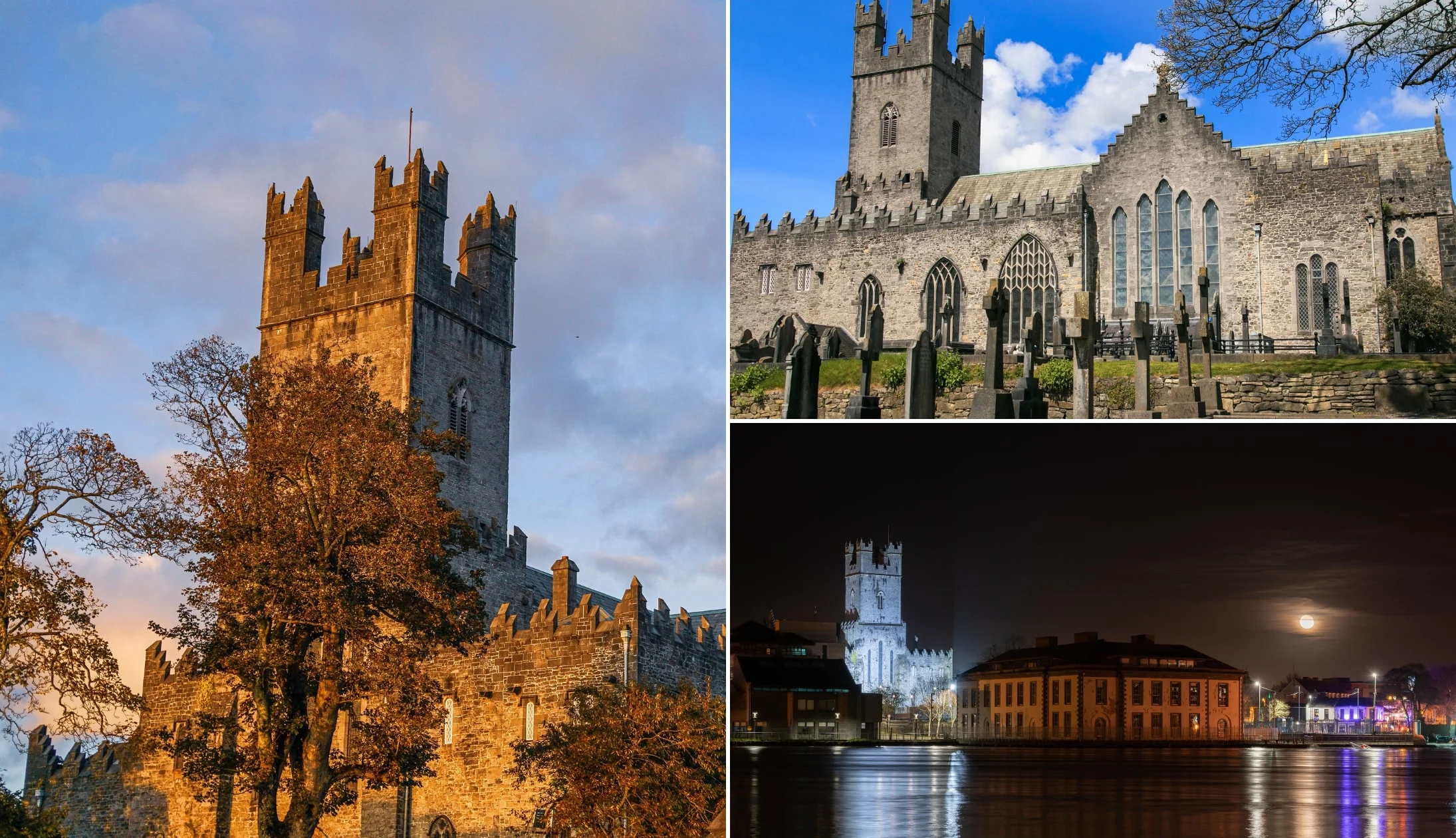
Photos via Shutterstock
The next stop is St. Mary’s Cathedral. It’s a 3-minute walk from King John’s Castle, and you probably passed it on your way to the castle. The cathedral was founded in 1168, making it even older than King John’s Castle and the oldest building in Limerick that’s still in use today!
The cathedral contains six chapels, but if you’re pressed for time, the Lady Chapel is a must-visit. The Lady Chapel contains its original pre-reformation altar, which is four metres long and weighs three tons. During the mid-1600s, the altar was removed and dumped by Oliver Cromwell’s troops when they captured the city. But, by some miracle, it was recovered in the 1960s and reinstated to its rightful place.
Another highlight of St. Mary’s Cathedral is its misericords (small wooden carvings). They are the only complete set in Ireland and the only remaining pre-Elizabethan carvings.
Stop 6: The Hunt Museum
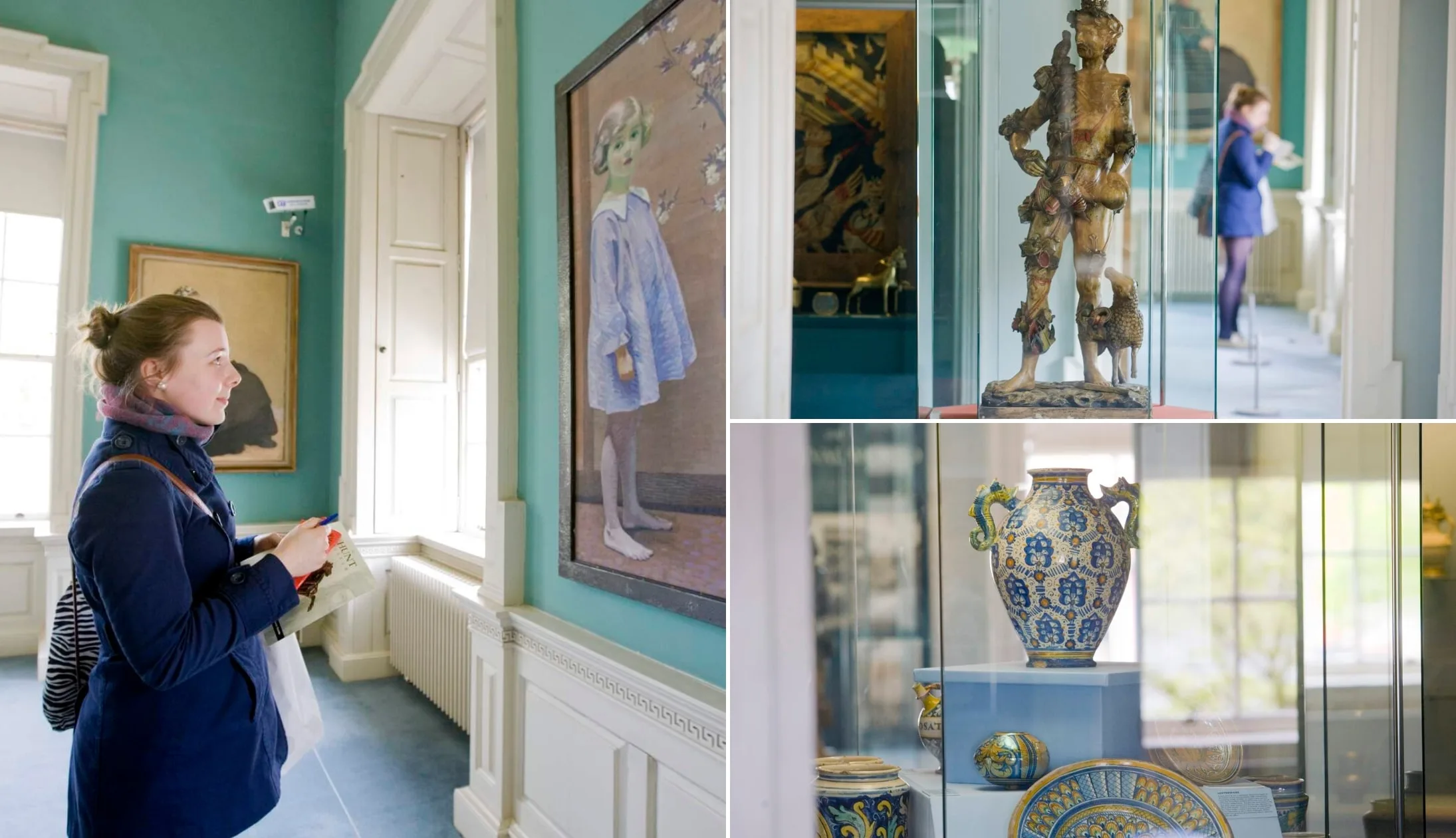
Photos via Tourism Ireland’s Content Pool
It’s time to walk another 3 minutes to the Hunt Museum. Again, you probably already passed it on your way to the castle.
The Hunt Museum was established after John and Gertrude Hunt decided to donate items from their personal collection to the people of Ireland.
The museum has a large collection with over 2,500 artefacts, including pieces from Ancient Egypt and Stone-Age Ireland. Highlights of the collection include works by Picasso and dresses by famous Irish fashion designer Sybil Connolly.
Recently, the museum launched the “Museum in a Garden”, a beautiful garden dotted with 3D printed replicas of historical artefacts (you can grab a ticket online here).
Stop 7: Dinner, drinks and live music

Photos via Nancy Blakes on FB
There’s some excellent restaurants in Limerick and there’s some mighty old-school pubs in Limerick, too.
Our Limerick food recommendations
Our absolute favourite spot for dinner is the Curragower. It’s right on the banks of the River Shannon with beautiful views of King John’s Castle across the water.
Grab some delicious pub grub like the roasted lamb rump or the lightly breaded scampi, then stick around for some pints after dinner.
Otherwise, we also like SpitJack (the rotisserie pork belly is a customer favourite) and The Locke (they have a delicious steak and ale pie and great vegetarian options).
Our Limerick pub recommendations
For drinks, again, we love the Curragower but Tom Collins is another lovely pub.
Another great trad pub is Nancy Blakes and depending on the night, they might have some music on. However, if you don’t mind heading a little out of the city centre, then Charlie Malones is a must-visit.
In our opinion, it’s one of Limerick’s best-kept secrets, with a real old-school pub vibe.
Limerick is a great city for trad music. The Locke often has music and even dancing on some nights if you’re lucky! Dolans is also great, but it’s a short walk from the city centre.
Day 10: Limerick, Tipperary, and Clare

Photos courtesy Tipperary Tourism via Tourism Ireland
Today you are exploring Limerick, Tipperary, and Clare. You will be hiking the highest peak in Clare today so make sure to bring good hiking boots, clothing for all weather, and plenty of water and snacks!
Grab some food at your accommodation or nearby. We like Cafe Rose or Aroma Coffee for breakfast.
Stop 1: The Moylussa Hike
Moylussa, Clare’s tallest peak, is an admirable 532 metres tall. The 12.75km hike is a moderate one, but towards the summit, the difficulty ramps up.
It takes most people around 3 hours to finish, but it’s well worth the effort, as you’ll have awesome views from the top!
The weather at the summit can be unpredictable, so as we mentioned earlier, make sure to bring clothing for all kinds of scenarios.
Stop 2: Lunch

Photos via Shutterstock
It’s probably around lunchtime by now, so head over to Killaloe, which has some lovely lunch spots. We recommend checking out The Wooden Spoon or Pontevecchio.
The Wooden Spoon is a top choice for light bites like salads, sandwiches, and soups. Whereas Pontevecchio is a beautiful little restaurant with a bookshop, wine bar, and Italian deli vibe serving up delicious Italian light bites.
If you’re not feeling like a ‘light bite’ after your mega hike (very understandable), head to the Pipers Inn, an Irish gastropub open from noon, which serves hearty dishes like burgers and roast beef.
Stop 3: Coffee and a stroll around Killaloe
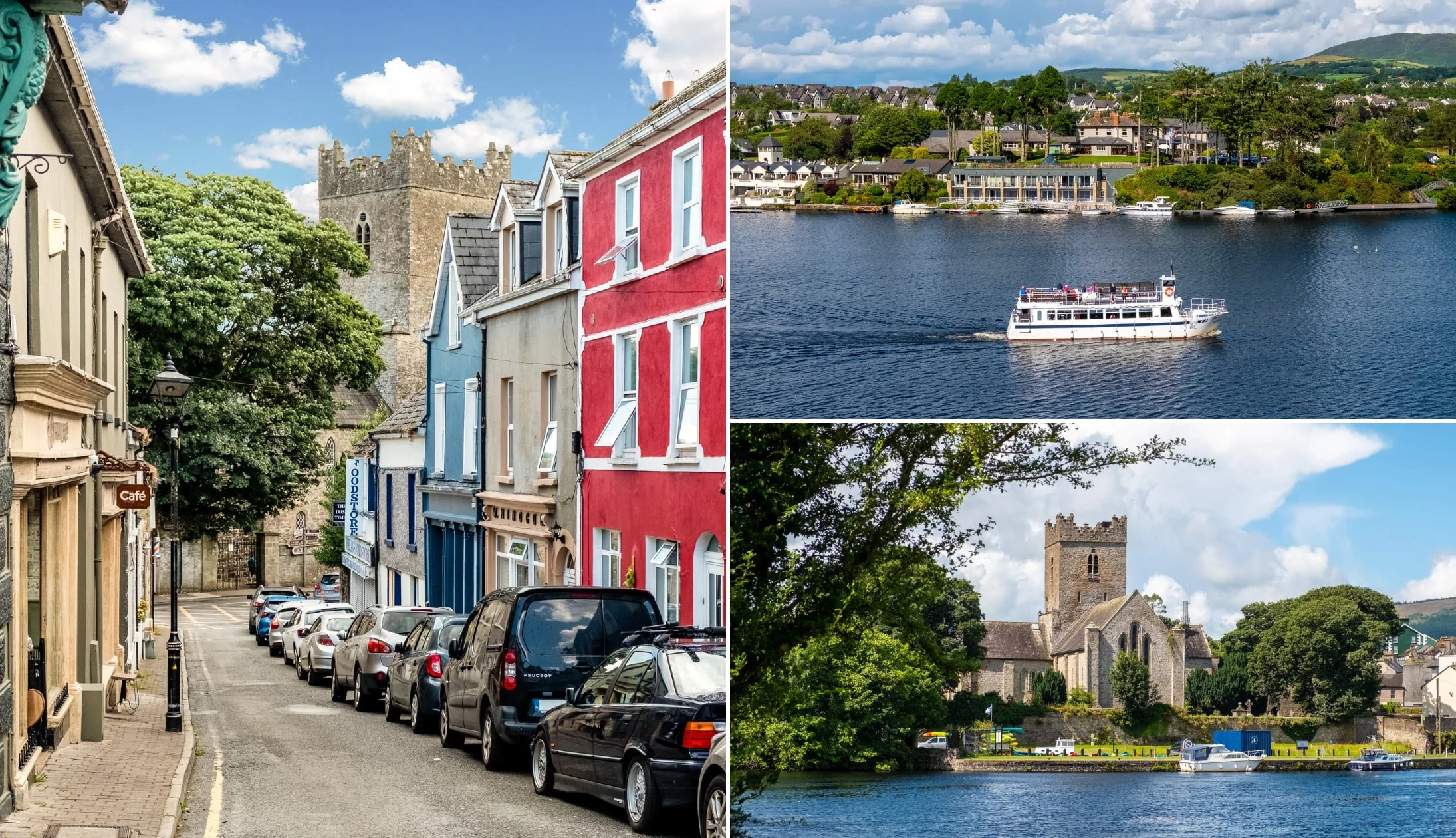
Photos courtesy Discover Lough Derg via Failte Ireland
After lunch, it’s time to explore the gorgeous little town of Killaloe, which is an absolute joy to saunter around.
Grab yourself a coffee to go from Bless Cafe or Derg House Cafe and go for a little wander through its streets and down by the river where you’ll see the boat cruises take off.
Stop 4: Clare Glens

Photos courtesy Tipperary Tourism via Tourism Ireland
Next up is the Clare Glens, a gorgeous waterfall and walk, a 23-minute drive from Killaloe.
There are two walks: a 2km Nature Loop (which takes 30 minutes to one hour) and the Clare Glens Loop Walk (which takes one to 1.5 hours).
Both loops start on either side of the Clare Bridge. Since you’ve already had a big walk today, we recommend the shorter Clare Glens Nature Loop.
Stop 5: Back to Limerick for the night

Photos via Nancy Blakes on FB
Once you’re ready to head back to Limerick, jump in the car and drive the 34 minutes back to the city.
There’s some excellent restaurants in Limerick and there’s some mighty old-school pubs in Limerick, too.
Our Limerick food recommendations
Our absolute favourite spot for dinner is the Curragower. It’s right on the banks of the River Shannon with beautiful views of King John’s Castle across the water.
Grab some delicious pub grub like the roasted lamb rump or the lightly breaded scampi, then stick around for some pints after dinner.
Otherwise, we also like SpitJack (the rotisserie pork belly is a customer favourite) and The Locke (they have a delicious steak and ale pie and great vegetarian options).
Our Limerick pub recommendations
For drinks, again, we love the Curragower but Tom Collins is another lovely pub.
Another great trad pub is Nancy Blakes and depending on the night, they might have some music on. However, if you don’t mind heading a little out of the city centre, then Charlie Malones is a must-visit.
In our opinion, it’s one of Limerick’s best-kept secrets, with a real old-school pub vibe.
Limerick is a great city for trad music. The Locke often has music and even dancing on some nights if you’re lucky! Dolans is also great, but it’s a short walk from the city centre.
Day 10: Back to Cork

Photos via Shutterstock
All good things must come to an end, and today you’re driving back to Cork Airport to fly home.
Grab some breakfast at your accommodation before you check out, or find somewhere nearby.
It takes roughly 2 hours to drive from Limerick City to Cork Airport. But be mindful of the Cork City traffic around rush hour, as this has the potential to cause delays, so plan accordingly.
And that’s a wrap on this road trip

Photos via Shutterstock
We hope you found the above road trip guide useful. If you have any questions, ask in the comments below and we’ll do our best to help.
Or, if you’d like to browse our other Irish Road Trip itineraries, visit our Road Trip Hub – cheers!
Keith O’Hara has lived in Ireland for 35 years and has spent most of the last 10 creating what is now The Irish Road Trip guide. Over the years, the website has published thousands of meticulously researched Ireland travel guides, welcoming 30 million+ visitors along the way. In 2022, the Irish Road Trip team published the world’s largest collection of Irish Road Trip itineraries. Keith lives in Dublin with his dog Toby and finds writing in the 3rd person minus craic altogether.

